From youtube:
Family Album, from habu.org:
61-7950
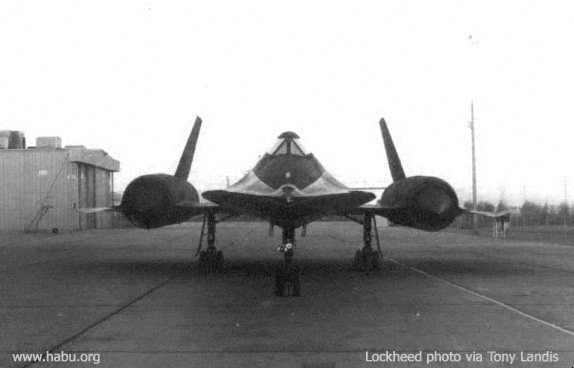
Both photos on this page were taken at Palmdale prior to 950's first flight -Lockheed photos courtesy of Tony Landis
950 was the first in the last and longest line of blackbirds, the SR-71. Unlike the YF-12 and M/D-21, which were built to perform different missions, the SR-71 followed in the A-12's footsteps as a purely reconnaisance platform. The most noticable differences between the SR-71 and the A-12 were the rear cockpit and extended "tail" of the SR, which extends about 2 feet beyond the elevons and helps to reduce drag.
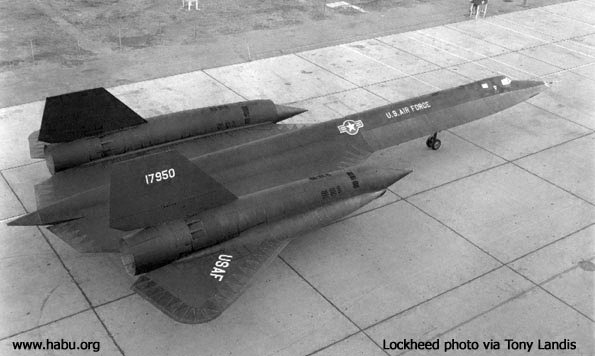
A very early photo of 950 - note the complete absence of the red "NO STEP" stripe, which has not been added yet.
61-7951
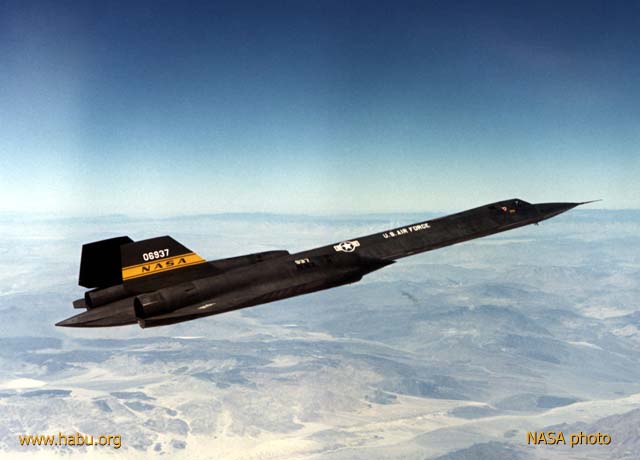
photo courtesy of NASA
Also known for a time as YF-12C #06937, and sometimes confused with A-12 60-6937, the second SR-71, serial number 61-7951, was one of 6 airframes used by the SR-71 Test Force and was never used for operational missions.
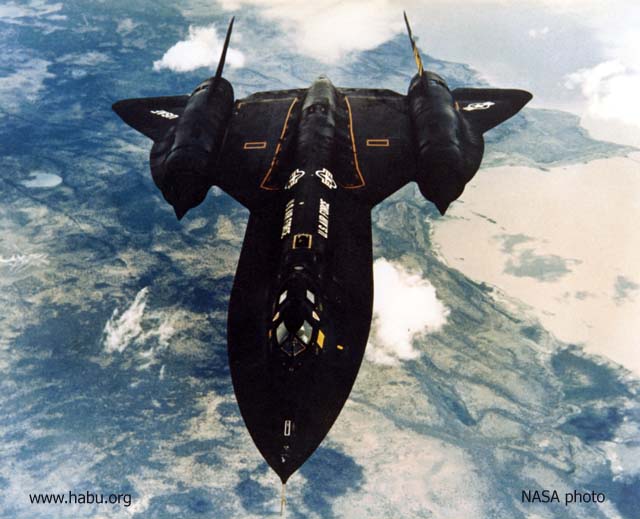
951 in flight under NASA colors; notice the red rectangular markings on the upper wing surfaces, the clearly visible anti-collision beacon near the center of the fuselage, and the pilot's white pressure suit - photo courtesy of NASA
In 1971, #17951 was loaned to NASA to complete the testing of the YF-12A program (2 of the 3 YF-12s had already been lost in accidents). 951 was temporarily redesignated as a YF-12C (there being no B-model trainer for the YF-12 series) and given NASA#937. This number was chosen for 2 reasons:
the Air Force didn't want anyone to know that NASA had an honest-to-goodness SR-71 in their possession, and made up the "YF-12C" designation to hide the fact. Since the other 3 YF-12s bore numbers 934, 935, and 936, it made sense that the next aircraft in the series would be numbered 937.
The entire A-12 program was classified until 1982, and since no one would have known there was another 937, there would be no confusion.
photo courtesy of NASA/Dryden
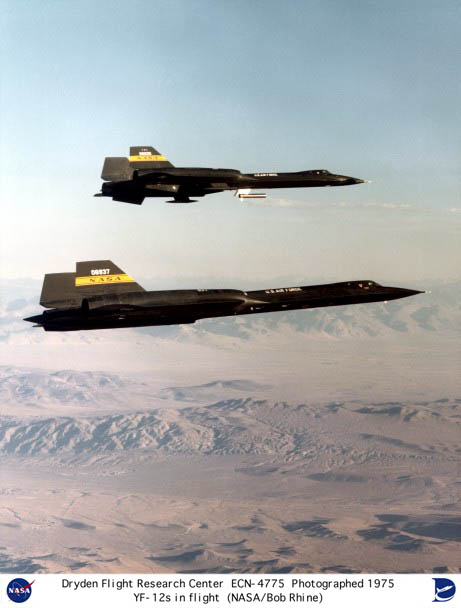
On October 27, 1978, Col. Jim Sullivan and Maj. William Frazier crewed her return flight to the Air Force, where she was put back in their inventory and given back her old number. Frazier and pilot LtCol. Calvin Jewett logged the last of her 796.7 flying hours two months later, on December 22, 1978.

951 undergoing J-58 engine noise tests, apparently at Site 2 in Palmdale. This photo was taken on December 20, 1978, just 2 days prior to 951's last flight. -photo courtesy of NASA
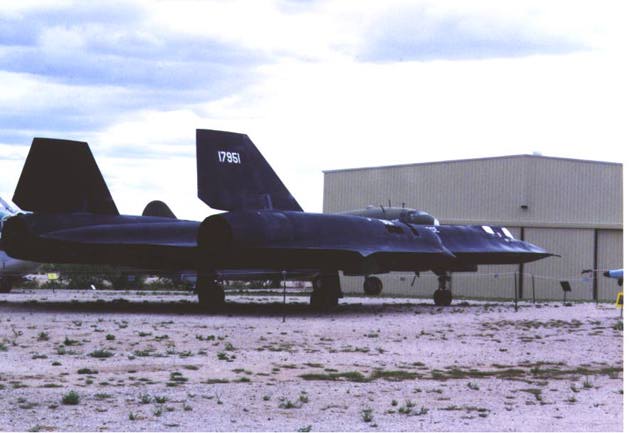
photo by Blake Holliday courtesy of www.aero.com
951 remained in storage at Lockheed's facility in Palmdale, California until 1990, when she was disassembled and trucked to Pima Air & Space Museum, just east of Tucson, Arizona.
61-7952
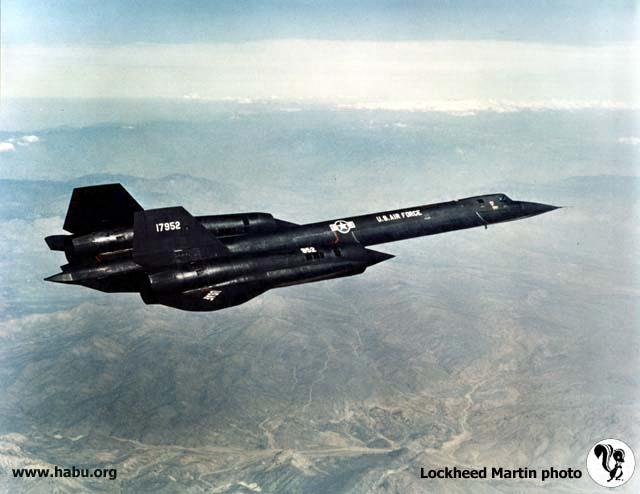
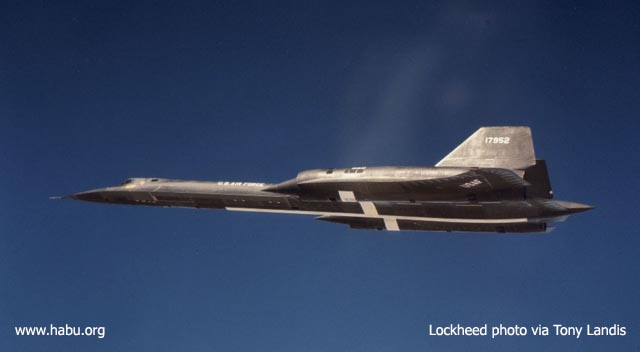
952 as she appeared on September 1, 1965, showing the white reference cross typical on test aircraft. - Lockheed photo via Tony Landis
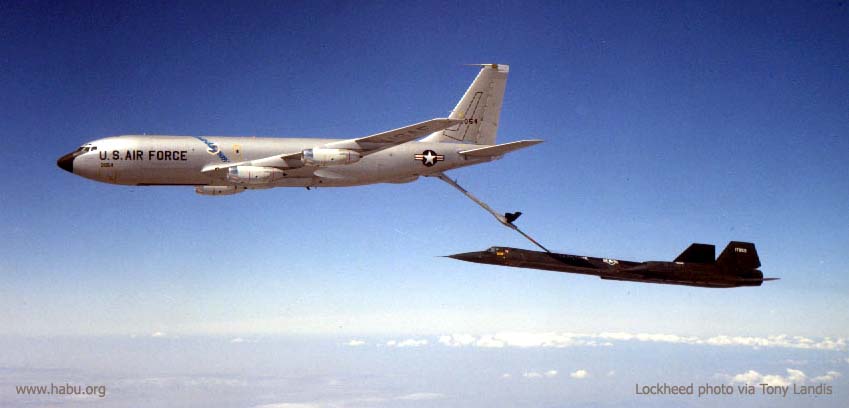
952 is shown here during the first-ever inflight refuelling of an SR-71, on April 29, 1965. - Lockheed photo via Tony Landis
952 was lost on Tuesday, January 25, 1966 during a test flight. She had an engine unstart during a turn at speeds above Mach 3.2 and broke apart. Lockheed pilot Bill Weaver was thrown clear and blacked out during the accident but recovered and landed on the ground safely. Tragically, his back-seater, RSO Jim Zwayer, did not survive; when his helmet hit the mach-3 slipstream, his neck broke and he died instantly. While 3 other men lost their lives in the A-12 and M/D-21 programs, Zwayer was the only fatality in any SR-71.
With pieces of the airframe raining on his property, the owner of the Mitchell ranch found Zwayer's body first; he then saw Weaver's parachute and went to help him. Weaver told him that he was part of a 2-man crew, and asked Mitchell if he had seen the other crewman. Mitchell told Weaver that he had found his body, and then flew Weaver to the nearest hospital in the ranch helicopter. Weaver would later recount that in as much pain as he was, he had looked at the airspeed gauge and seen it move beyond the red line indicating Velocity Not to Exceed, and thought to himself, "I've survived a breakup and bailout at Mach 3, only to die in a helicopter crash on the way to the hospital!!" Fortunately that didn't happen, and Weaver made a full recovery.
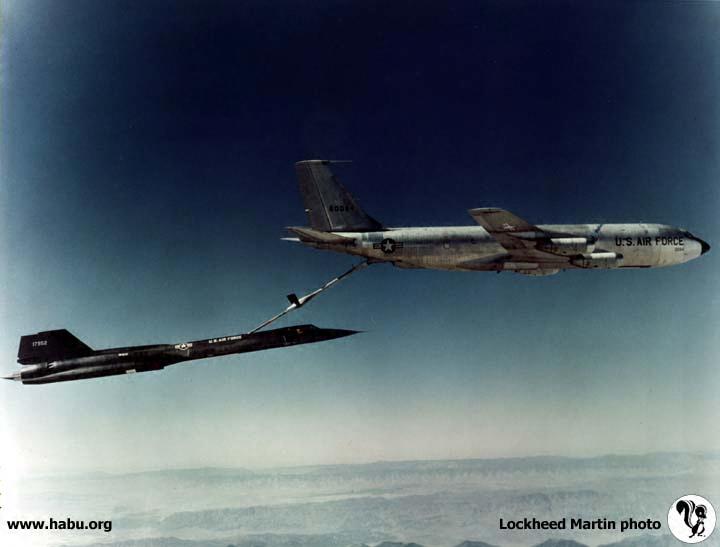
61-7953
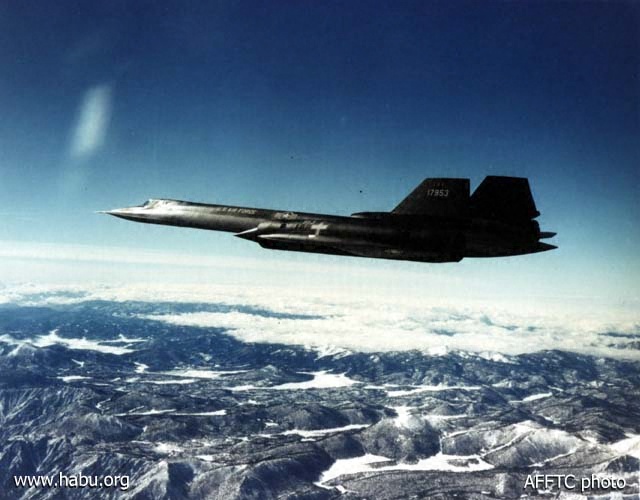
953 was lost on Thursday, December 18, 1969, when she exploded in-flight. Pilot Lt.Col. Joe Rogers and RSO Lt.Col. Gary Heidlebaugh both ejected safely.
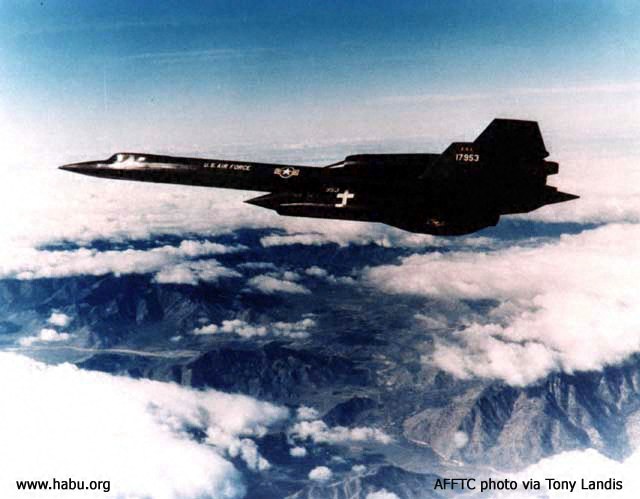
61-7954
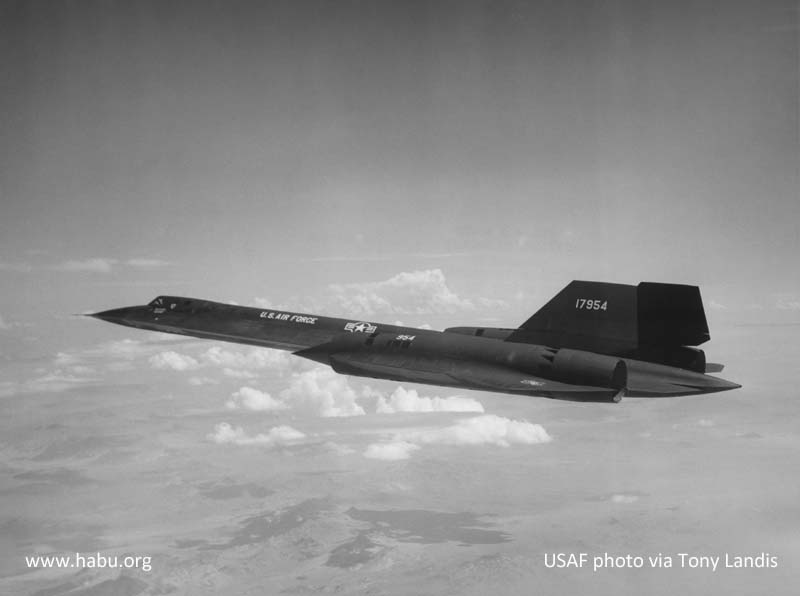
USAF photo via Peter Merlin
954 was lost on April 11, 1969. During maximum takeoff weight testing, the left main tires blew, which started a fire that swallowed the aircraft (similar to the demise of #950). Pilot Lt.Col. Bill Skliar and RSO Maj. Noel Warner escaped safely. Craig Freeman was there and describes what he saw:
I was setting in Launch truck when we sent the A/C off that morning 38 years ago (April 11, 1969). The tires blew, dropped it down on the wheel and the FOD from the wheel coming apart sent the metal up into the wing.
The Pilot cut the takeoff run and rolled out to the end of the runway. The aircraft started to burn with the Pilot and RSO still inside with canopies down.
A CH-3 Jolly Green came out of nowhere and sat off the left front part of the wing which was burning. From the rotor wash the fire was pushed off toward the back of the aircraft.
The canopies opened and Pilot and RSO jumped out of the aircraft and ran off from the Aircraft. Pilot and RSO were fine. They did not "eject."
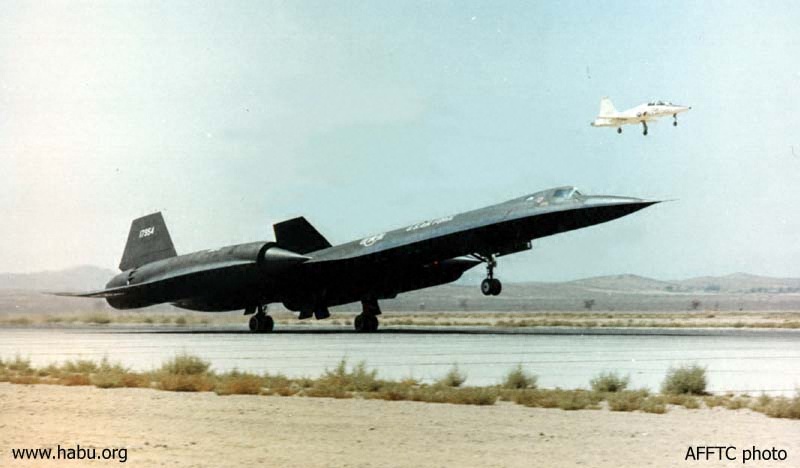
AFFTC photo via Peter Merlin and Tony Landis
61-7955
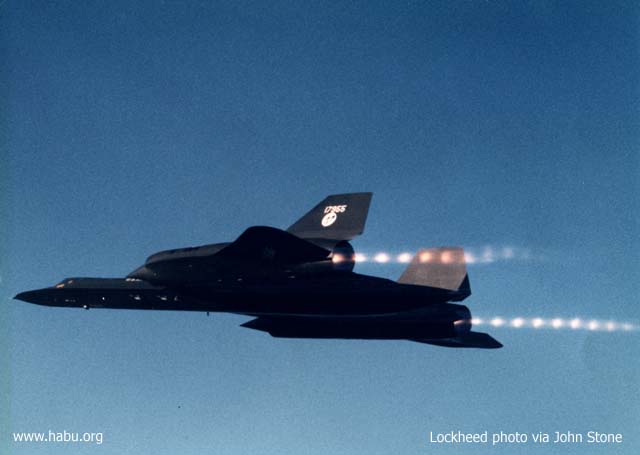
955 flies in full afterburner, showing 9 shock diamonds in the left engine's exhaust and 10 in the right. According to Donn Byrnes, co-author of Blackbird Rising, "If you want to see how good an engine you have, count the shock diamonds --- if you can get 9 or better, you have got yourself one hell of an engine." - Lockheed photo by Bill Flanagan, via John Stone
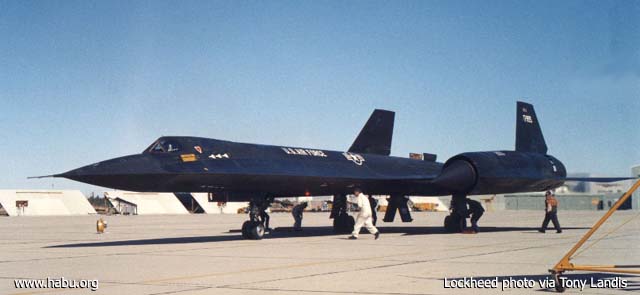
Like all SR-71s with tail numbers below 958, 955 was never used for any operational missions. The first 6 SR-71As were retained by the Air Force and Lockheed (3 each) as flight test aircraft, where new systems and configurations would be tested before being applied to the rest of the fleet. The next two aircraft produced (956 and 957) were both SR-71B trainers, and were never flown outside of the United States.
An early photo of 955, taken February 29, 1968, with the Outstanding Unit Citation above her tail number. This was prior to ever getting the Skunk logo. She is shown at Edwards Air Force Base, returning from another flight. - Lockheed photo via Tony Landis
Donn Byrnes explains the markings below her cockpit:
"955 was my aircraft as I was the flight test engineer for that machine at Edwards. If you look very closely at those white planform silhouettes, you should see a red capitol letter H inside. The H stands for Hester. That is the name of the particular flight test route we used to simulate a real [as we saw it at the time] operational mission. It had four hot legs and three air refuelings. The mission lasted about 8 hours. There were only two aircraft at Edwards that ever attempted that mission and they were 955 and 954. I guess we tried about 25 times to get those done and the most we succeeded was three or four times. When the aircraft made it through the entire mission and the sensors got the pictures or radar images required, then one of those white silhouettes was painted on the side. It did not happen very often."
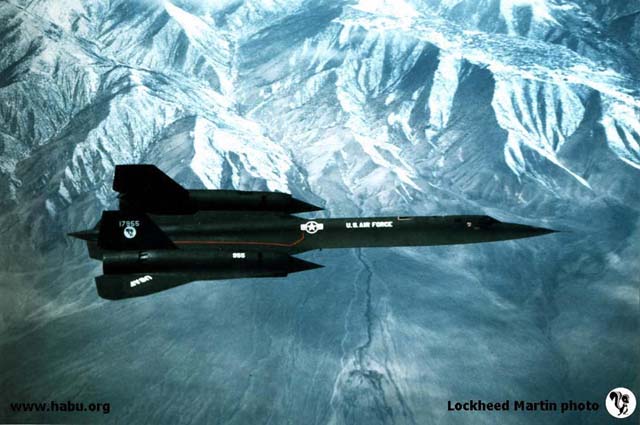
955 was used overseas on one occasion. In July 1983, she was flown to RAF Mildenhall to demonstrate the new ASARS (Advanced Synthetic Aperature Radar System) prior to fitting out the rest of the blackbird fleet. To avoid unnecessary attention from the "tail-spotters" who watched every flight from the base and recorded every tail number they saw, 955 was dressed up as 962 prior to flying out there. After the tests were completed and she was returned to Palmdale via Beale AFB, she was given back her old number and finished off the remainder of her flying career there.
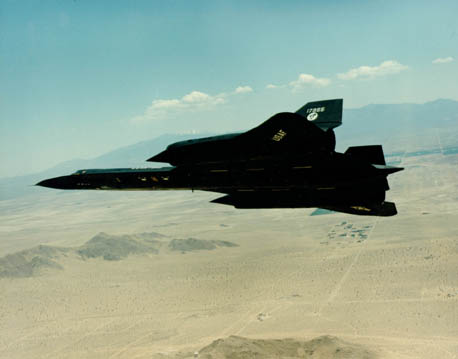
955 in a banking turn over Edwards AFB (click on the image above for higher resolution)- USAF photo
Click here for a video of 955 refueling in flight.
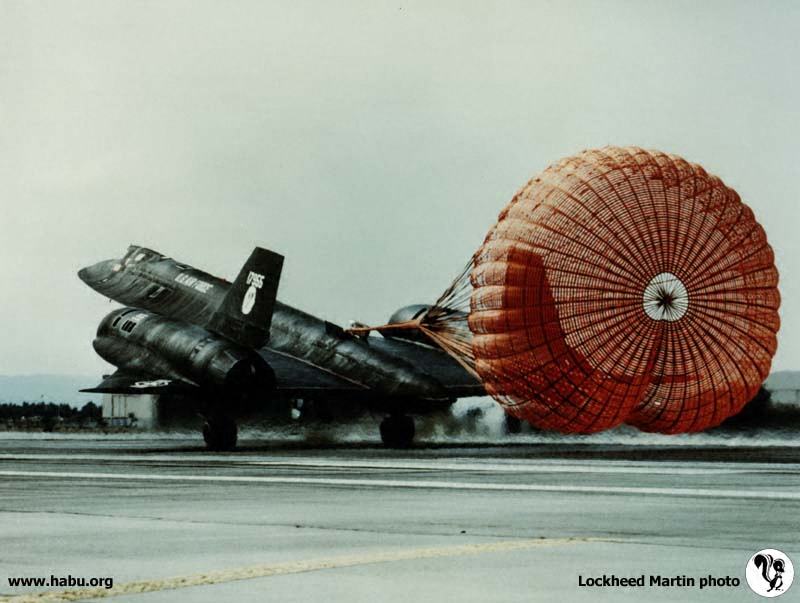
955 last flew on Thursday, January 24, 1985. At that time, the Air Force had come to the conclusion that she had been modified so many times that she no longer represented the SR-71s that were being flown out of Beale. The higher-ups figured that it would cost about $5 million to bring her up to the fleet standard. In spite of what you hear about defense spending and budget overruns, the Air Force decided it wasn't worth the cost to modify the airframe, and chose instead to take the next aircraft due in for maintenance at the Palmdale facility and make it the new Skunkworks test bird. This is how 972 came to be graced with Señor Skunk on her tail.
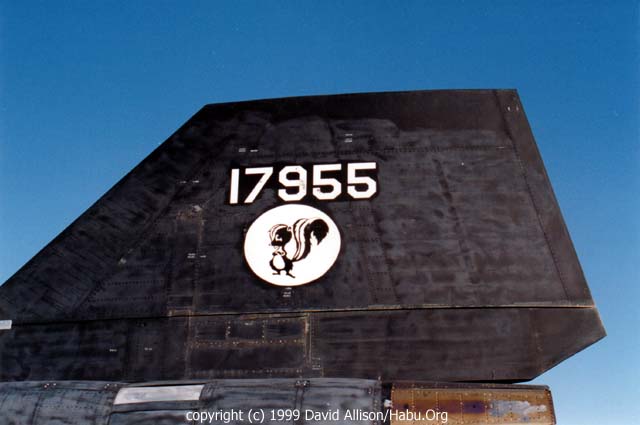

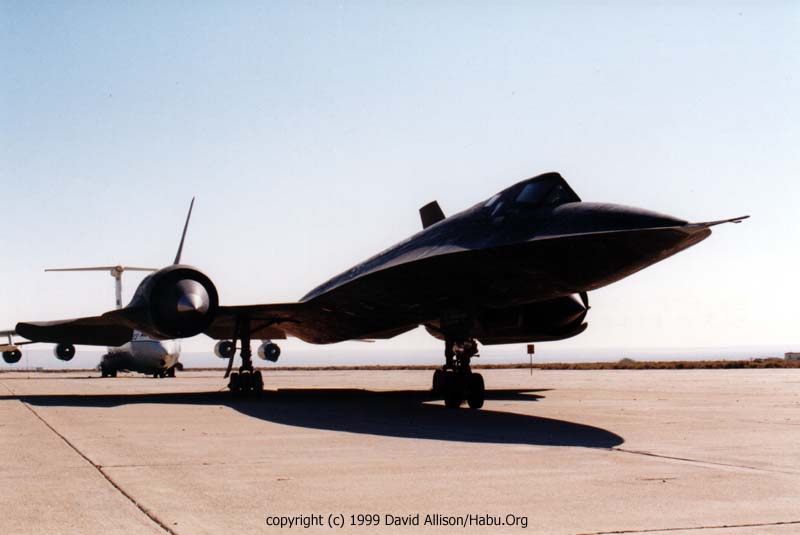
61-7956
(aka NASA 831)
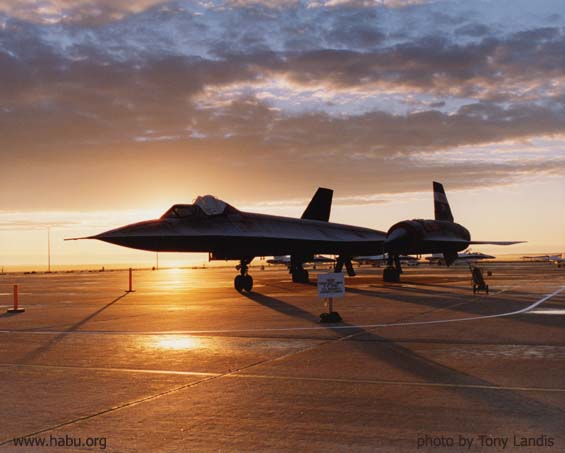
A thin veil of snow covers the B Model as the sun rises behind her on the morning of January 16, 2001 - photo courtesy of Tony Landis
After the blackbirds were retired in 1990, the B-model trainer and two SR-71As (971 and 980) were loaned to NASA for high-speed flight research. When the SR-71 was unretired in 1995, the USAF and NASA shared #956 (aka NASA 831) for training missions. In early July 1999, the US Air Force transferred ownership of all four flyable SR-71s to NASA (click here for a NASA press release).
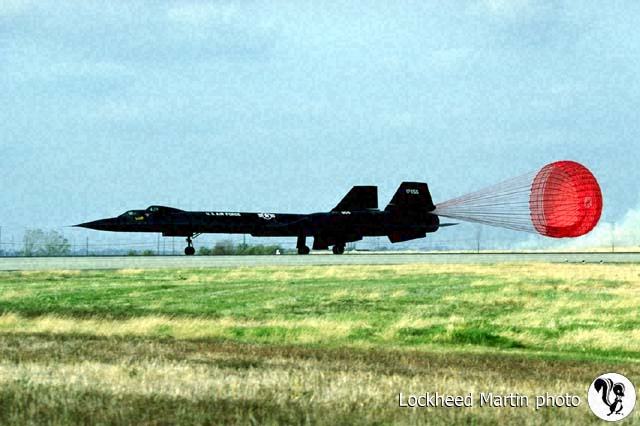
Lockheed photo courtesy of Leland Haynes
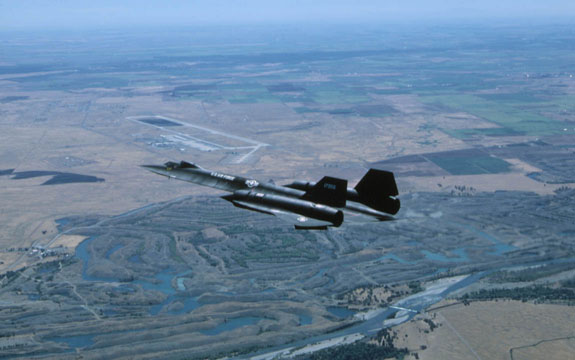
USAF photo
If you've seen a blackbird fly since 1990, chances are it was 956. At last look she had logged more than 3400 flight hours (more than twice the total of 959 and 981 combined). Without a doubt this is the single most often photographed blackbird of all time. She is also unique in that she is the only 2-pilot trainer still flying (957 was lost in an accident in 1968; 981 did not see as much use as 956, and was retired with the majority of the fleet in 1990).
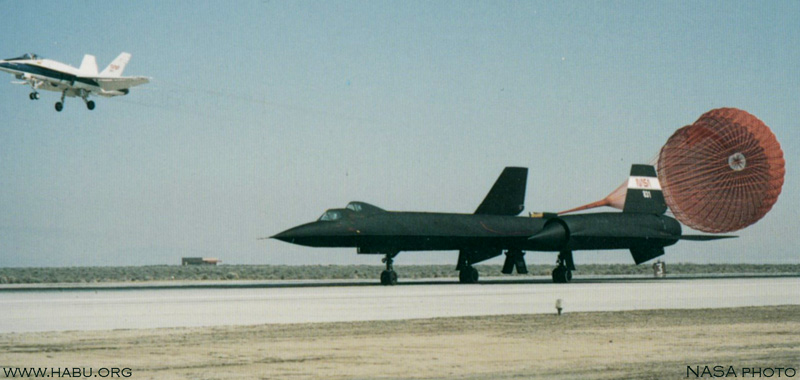
You can find the absolutely best collection of Blackbird photos at the Dryden Flight Research Center Web page and our NASA/Dryden Mirror Page. More than 80 photos at last count, all superior quality and resolution.
all photos courtesy of John Freedman
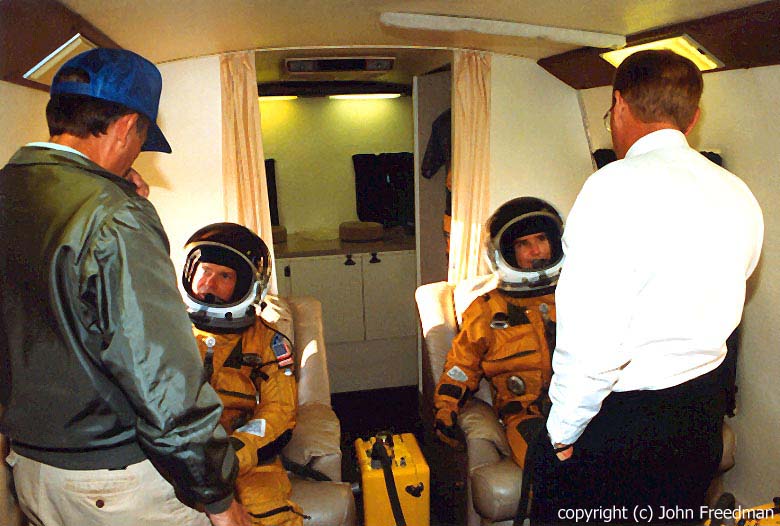
"These were taken in 1996 when they were doing tests on the left inlet as it kept unstarting, a fault it has had since new apparently.
The crew are NASA chief pilot Ed Schneider and Research engineer Marta Bohn-Meyer. The group shot [above] shows Rogers Smith (then chief pilot, now chief engineer), Ed, Marta, and Marta's husband, test engineer Bob Meyer (the first husband and wife crew of the SR)." - John Freedman
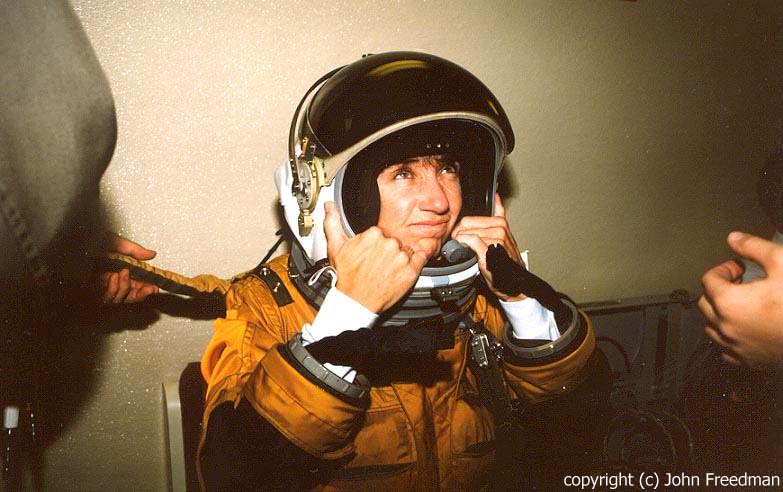
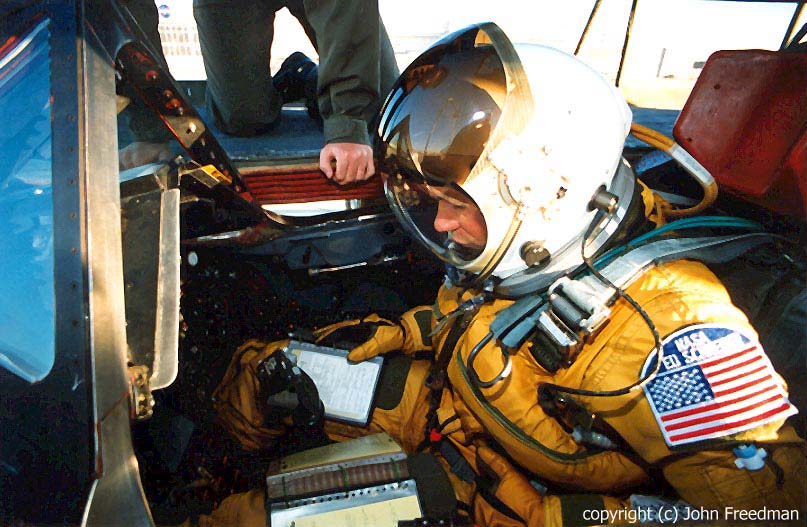
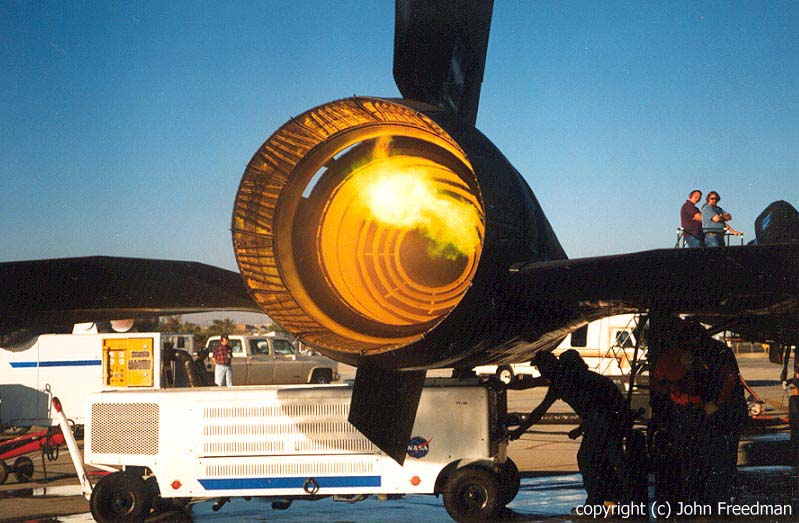
This is probably the most impressive engine start photo I've ever seen - WebMaster
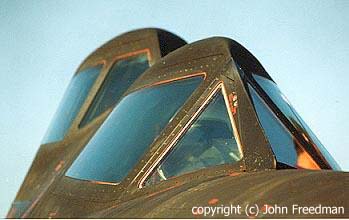
all photos courtesy of John Freedman
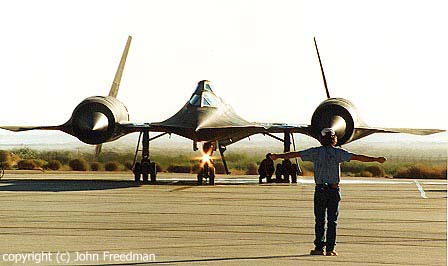
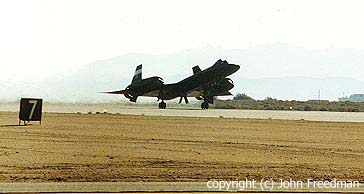
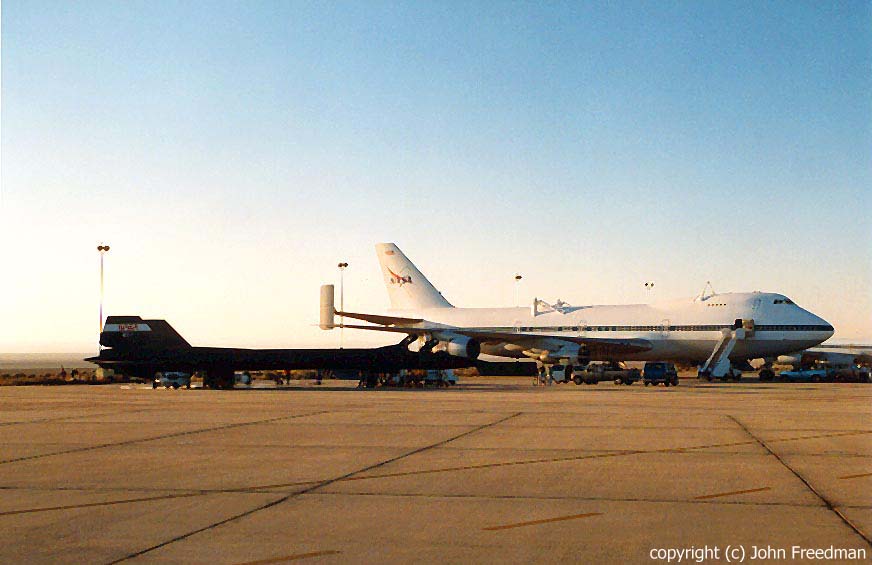
The blackbird is no small airplane; it holds its own next to a 747-100
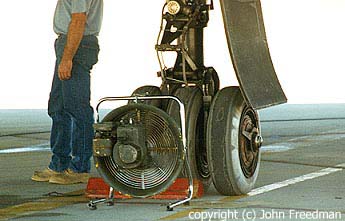
Fans are used to cool the brakes after landing; this also helps the tires last longer.
all photos courtesy of John Freedman
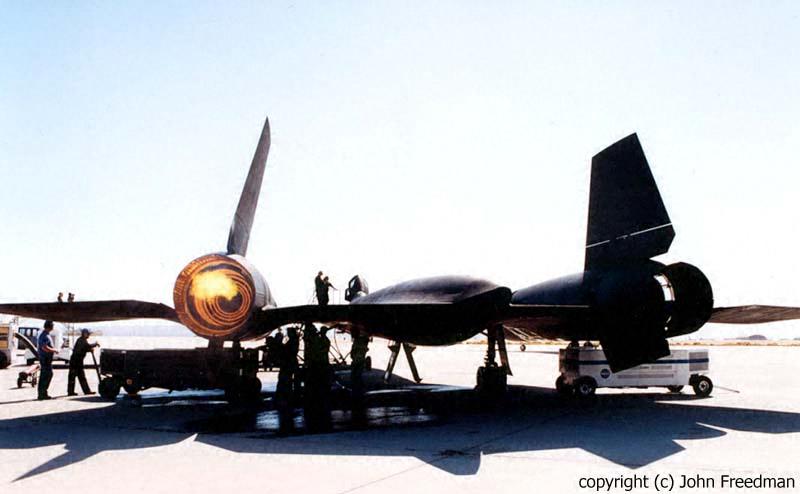
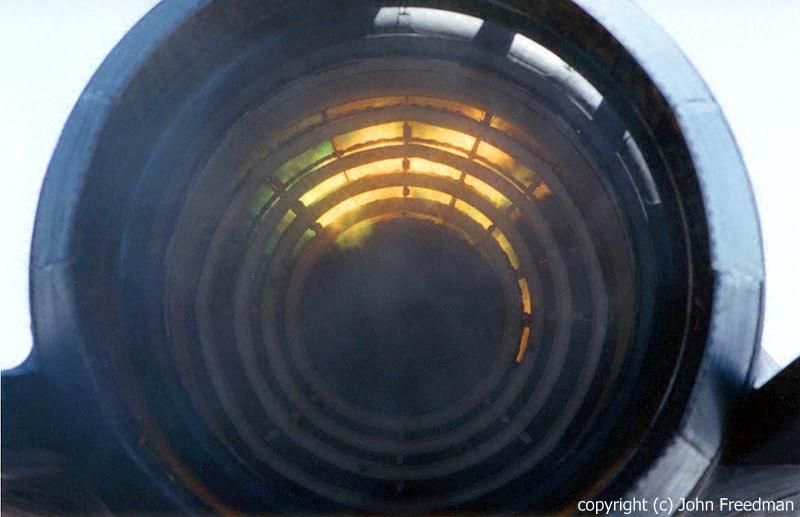

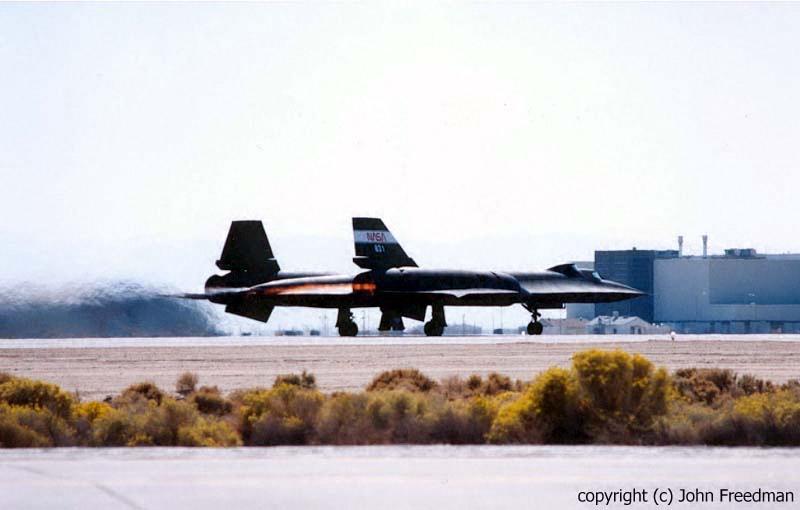
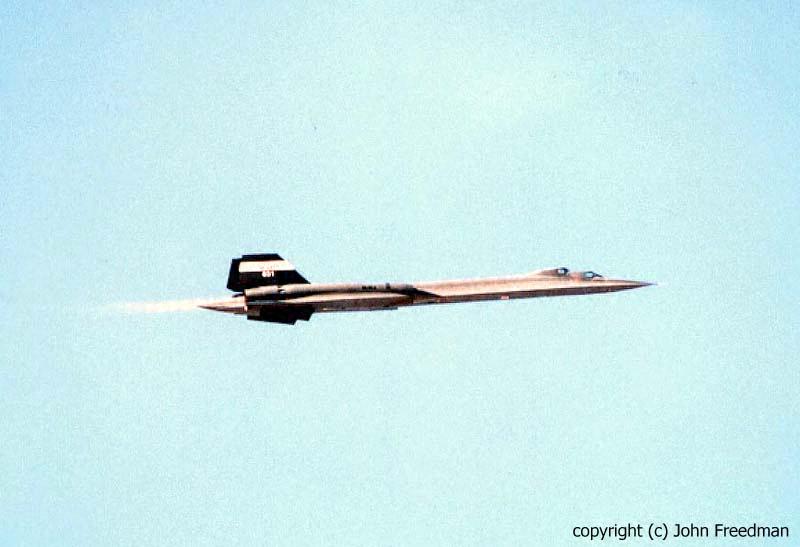
"These are photos of 956 taken during the 1997 Edwards AFB airshow, dedicated to the 50th anniversary of the Sound Barrier Breaking by Chuck Yeager.
"The SR-71 flew 3 times on the anniversary (Oct 14th 1997) and on the Saturday and Sunday before. The start and run are on the Sunday, a subsonic low fly-by, thus the normal nomex suit and HGU helmet on Ed Schneider and Bob Meyer." - John Freedman
all photos courtesy of John Freedman
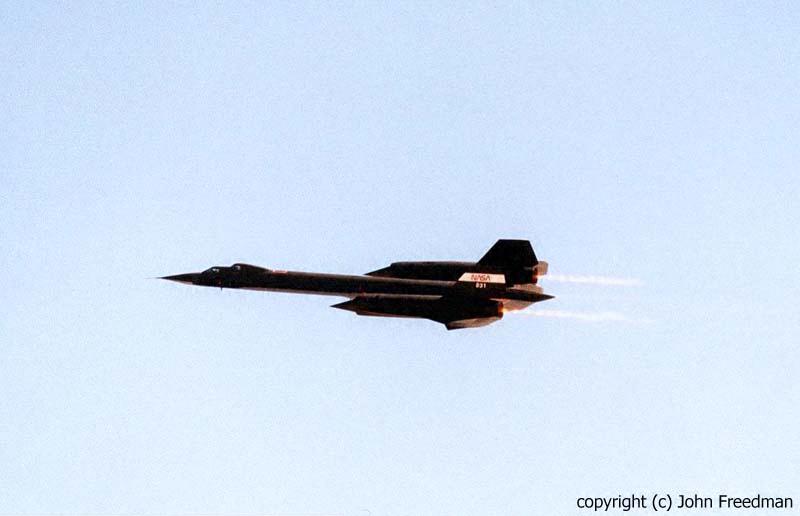
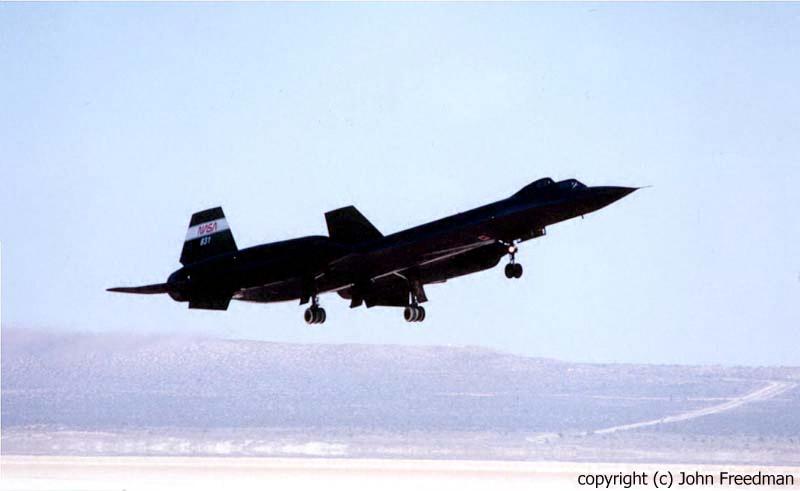
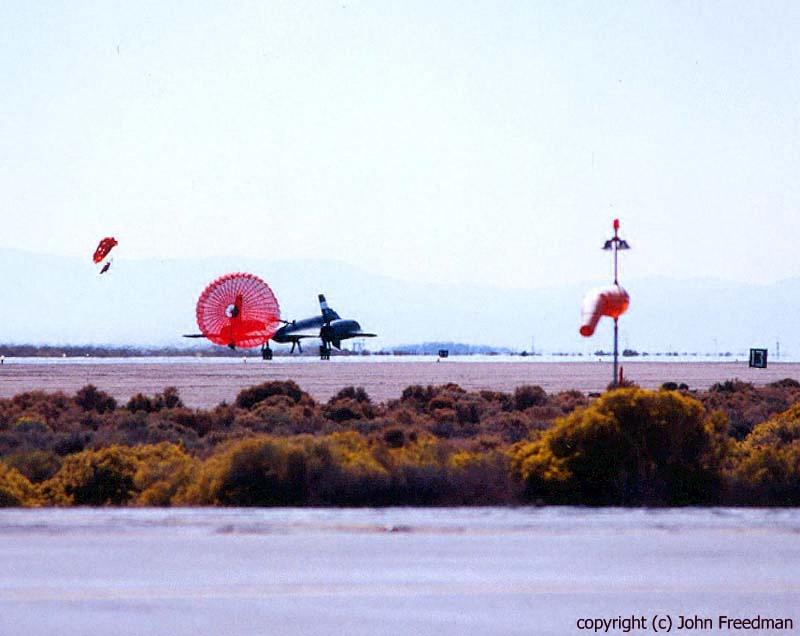
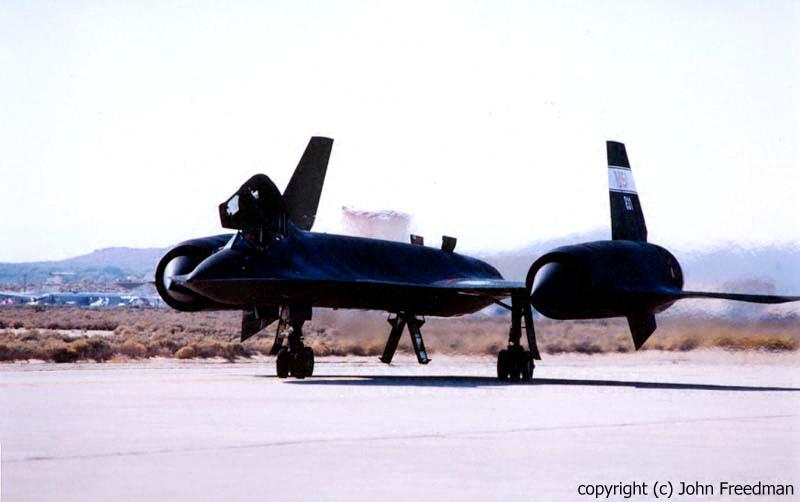
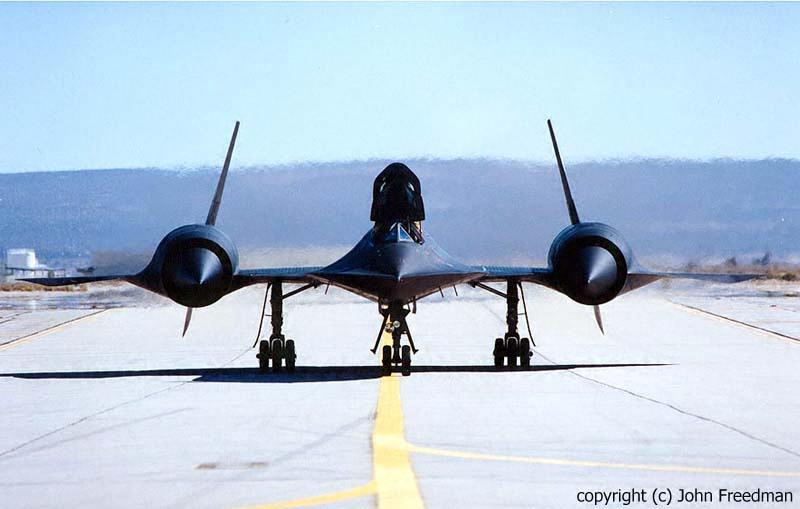
"These are photos of 956 taken during the 1997 Edwards AFB airshow, dedicated to the 50th anniversary of the Sound Barrier Breaking by Chuck Yeager.
"The SR-71 flew 3 times on the anniversary (Oct 14th 1997) and on the Saturday and Sunday before. The start and run are on the Sunday, a subsonic low fly-by, thus the normal nomex suit and HGU helmet on Ed Schneider and Bob Meyer." - John Freedman
61-7957
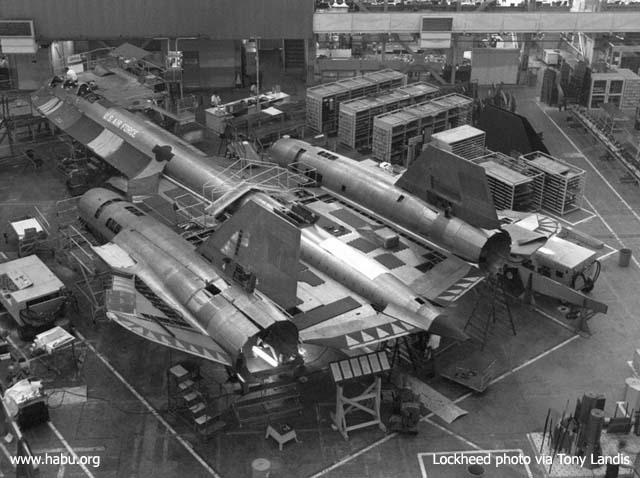
957 under construction at Lockheed's plant in Burbank, California. The Lockheed build number (2008) can just be made out on the walkway railing in the upper left corner of the photo. - Lockheed photo via Tony Landis
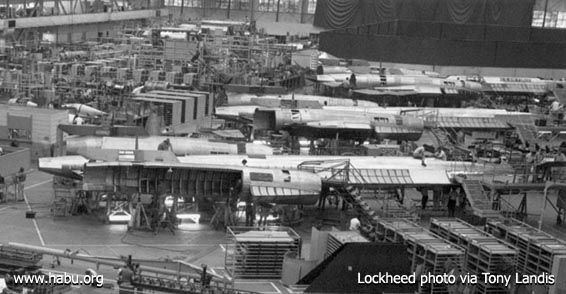
These photos should once and for all squelch the rumors that the 2 SR-71B models were "converted" from standard A-models. Here are 957 (foreground) and 956 (center) under construction with an A-model (955) in the background. The detail below shows the raised rear cockpits taking shape even before the nacelles are completed. - Lockheed photo via Tony Landis
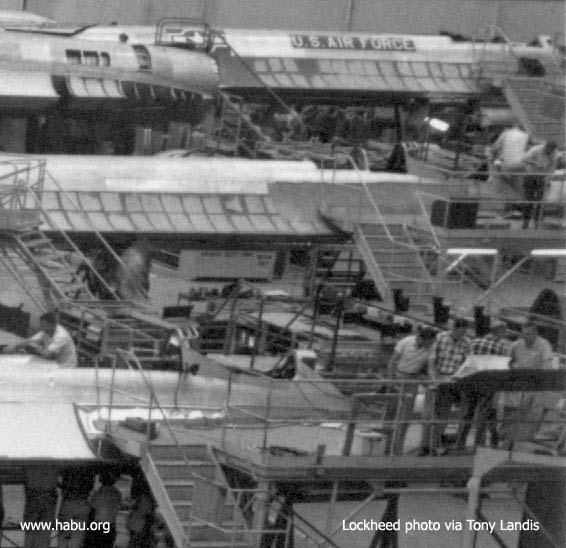
This photo and the two below are from LtGen William Martin's VIP flight on Friday, October 20, 1967. - Lockheed photos via Tony Landis
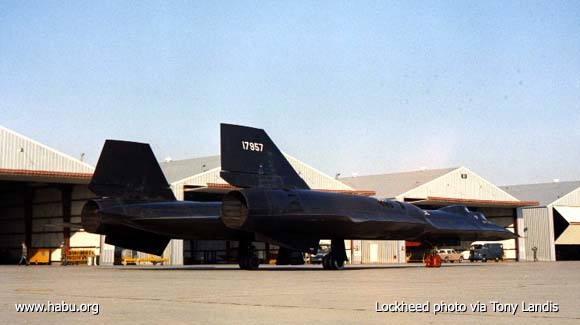
Gen. Bruce Holloway's VIP flight (check flight #186) lands at Beale AFB on October 4, 1967. This was the first time a Commander in Chief had been given a ride at Mach 3. - 1st SRS Archive photo, courtesy of Fred Carmody
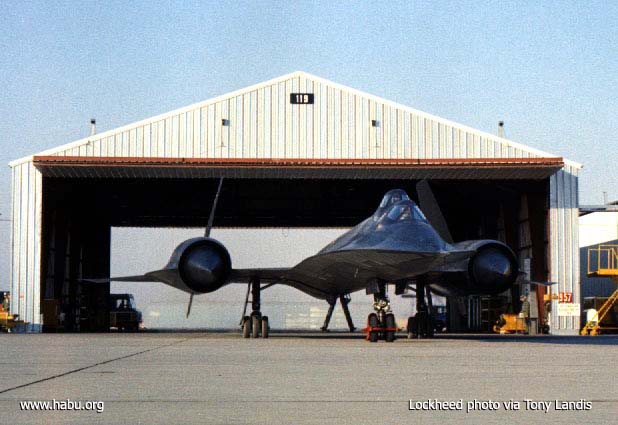
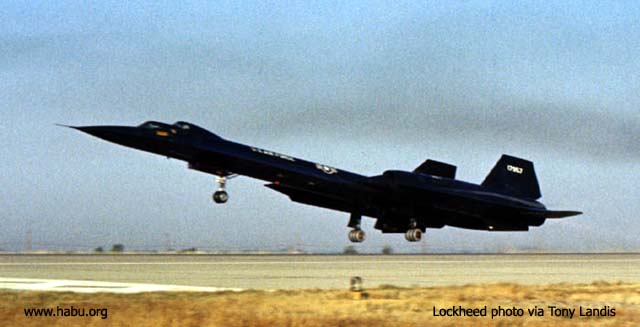
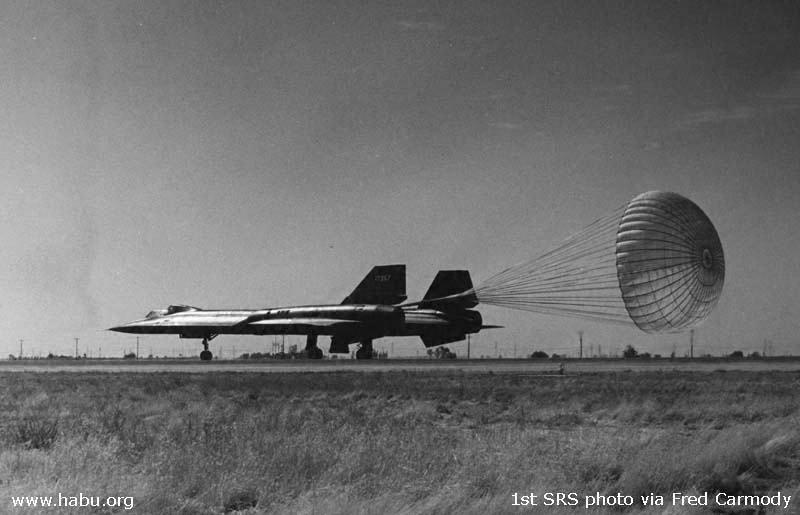
Lt. Col. Al Hichew and his "student" Col. Bill Hayes pose with crew chief TSgt. Gene Patrick after 957's 100th sortie, Friday, March 17, 1967. - photo courtesy of Bill Gornik
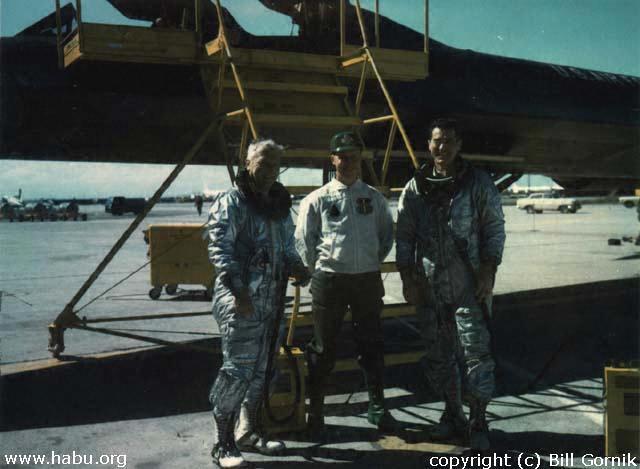
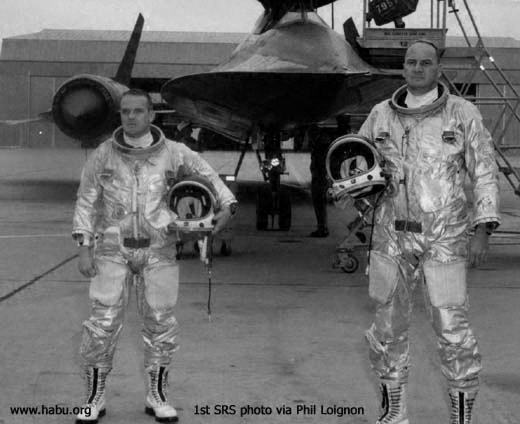
Clyde Shoemaker and Larry Devall pose with 957 after Devall is certified to "solo," on Tuesday, May 9, 1967 - 1st SRS photo via Phil Loignon
957 was lost on Thursday, January 11, 1968. One of only 2 SR-71B trainer models built (the other being #956), she crashed just a few miles from Beale AFB after limping home almost 1000 miles from where she suffered double generator failure over Washington State. Both student pilot (SP) Capt. David Fruehauf and his instructor (IP) Lt. Col. Robert "Gray" Sowers ejected safely.

file photo (Jan 1968) by George Irizary courtesy of the Appeal-Democrat newspaper
Don Person, crew chief of #969, witnessed the accident; he recalls:
".... There were two SR-71's flying that afternoon, 957 and my aircraft 969. An emergency was declared, but we did not know which aircraft had trouble. We were waiting on the taxiway looking north and saw an SR-71 approaching. About 2 miles out it took a pitch up and we then saw two chutes. Aircraft crashed in the dreager ponds where gold was mined. My heart was thumping as you can imagine, when another SR-71 came into view and it was an "A" model, 969. Boy was I glad to see it land...."
A year later, a replacement trainer was built from the aft end of YF-12 #934 and the SR-71 static model, assigned number 981 and designated as an SR-71C.
61-7958
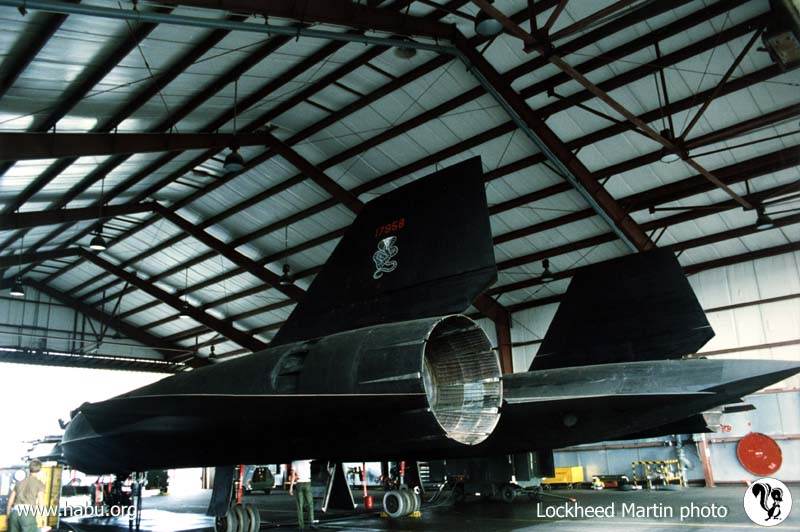
958 in the hangar at Beale AFB. In this photo she sports a unique interpretation of the habu on her tail; also note how the exhaust fairings (sometimes called "turkey feathers") are at maximum aperature. -Lockheed Martin photo
958 was the first "regular" (neither test vehicle nor trainer) blackbird delivered to the Air Force. She left the assembly line on July 22, 1965, and made her first flight with pilot Bill Weaver and RSO George Andre on December 15 of that year (Lockheed Skunk Works, Jay Miller; p. 200).
On Tuesday and Wednesday, July 27 & 28, 1976, 958 bettered 3 speed and altitude records previously held by a YF-12A, #60-6936.
Date Record Crew
28 July 1976 World absolute and class record for speed over a 15/25 km straight course:
2,193.167 mph Capt. Eldon Joersz and Maj. George Morgan
28 July 1976 World absolute and class record for sustained altitude (horizontal flight):
85,069 ft Capt. Robert Helt and Maj. Larry Elliot
27 July 1976 World absolute and class record for speed (1,000 km closed circuit):
2,092.29 mph Capt. Pat Blesdoe and Maj. John Fuller
Source: Lockheed Martin press release, Sept. 1991
Sometime history repeats itself. These 3 crews were to each have set their own record in separate airframes. Just like the YF-12A speed record attempts from 11 years earlier, all but one airframe developed problems just before the records were to be set. According to Pat Bledsoe, 958 was used by all 3 crews to set all 3 records.
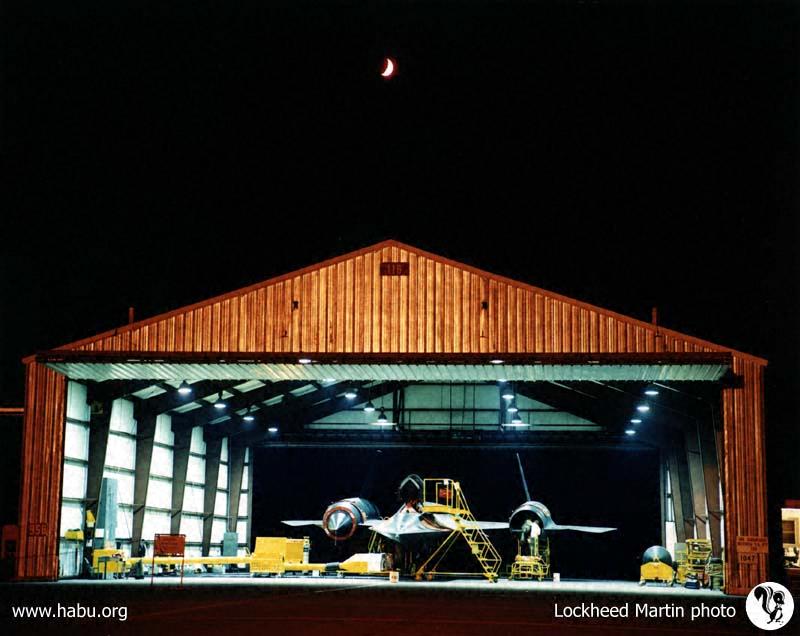
958 made her last flight on Friday, February 23, 1990, when she was flown to Robins AFB. Don Watkins and Bob Fowlkes logged the last of her 2288.9 hours.(Lockheed via John Stone)
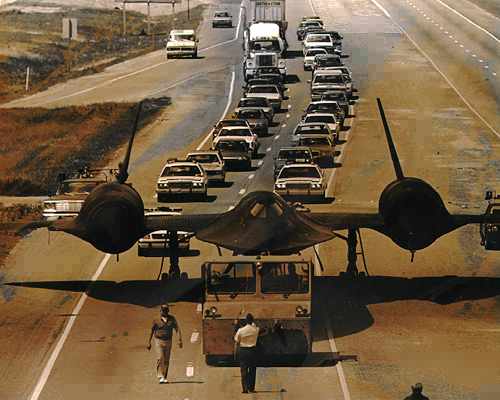
958 being towed to her final resting place - photo courtesy Jay Miller
photo courtesy of John Stone
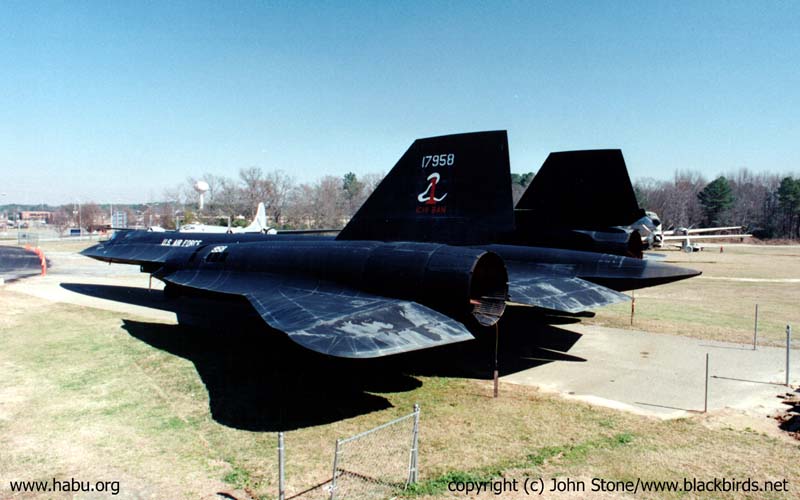
She is now on display at Robins AFB in central Georgia, where she has been restored to her original "high-observable" paint scheme, with the addition of the Ichi Ban banner that only 974 ever sported; perhaps as a tribute to the last blackbird to be lost.
61-7959
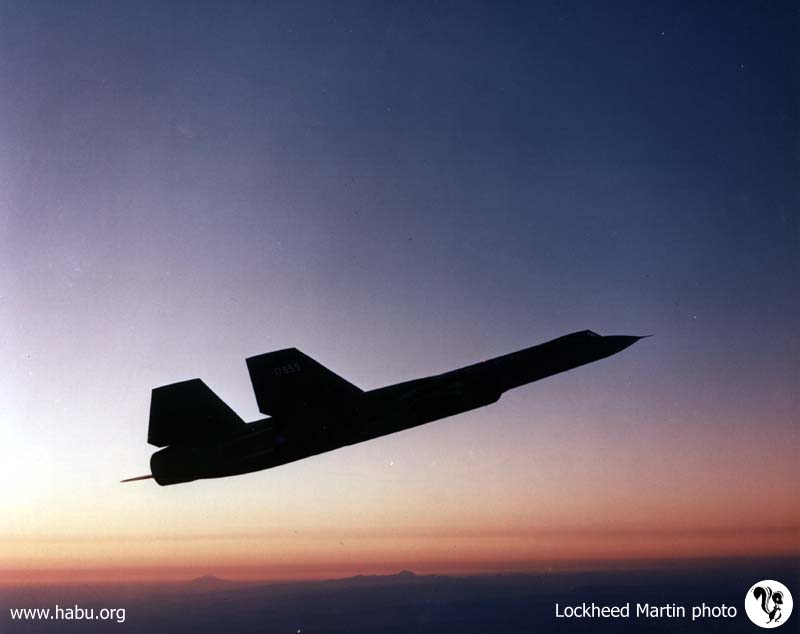
Lockheed photo taken July 29, 1971, prior to the Big Tail modification - photo courtesy Lockheed Martin
The Blackbird with the most radical "after-market" alteration, #959 ("Big Tail") started her career in 1966 like any other SR-71. In 1975 she was selected as the test platform for a new OBC (optical bar camera), surveillance and ECM (electronic counter-measures) suite located in a nine-foot "boom" attached to the aft end of the fuselage.
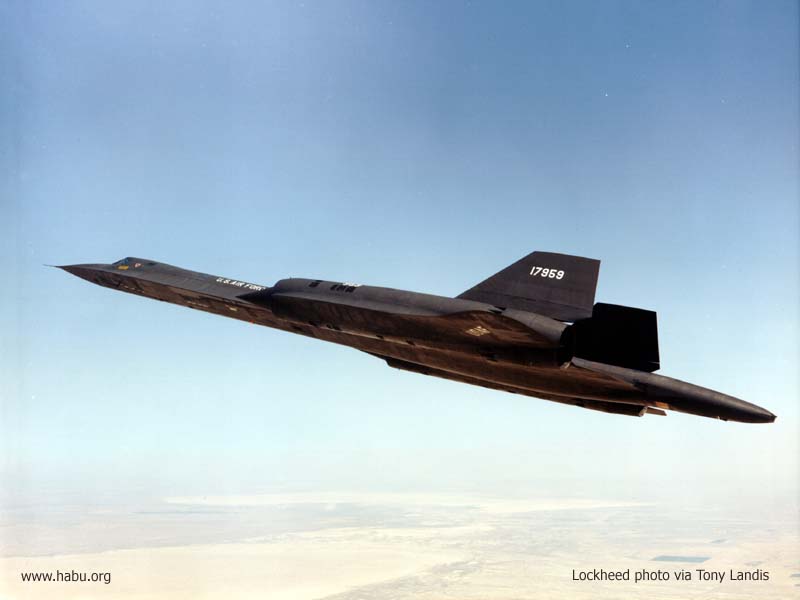
Lockheed photo courtesy of Tony Landis
The alterations were tested in November 1975, and proved conclusively that the airframe suffered no appreciable performance loss from the modifications. However, other tests also showed that the new ECMs did not offer any increased protection from missile attack; and in the face of budget cuts, the program to retrofit other blackbirds was cancelled.

Note the length of the boom's shadow, which is almost as long as the sedan in the background -Lockheed photo courtesy of Tony Landis
17960
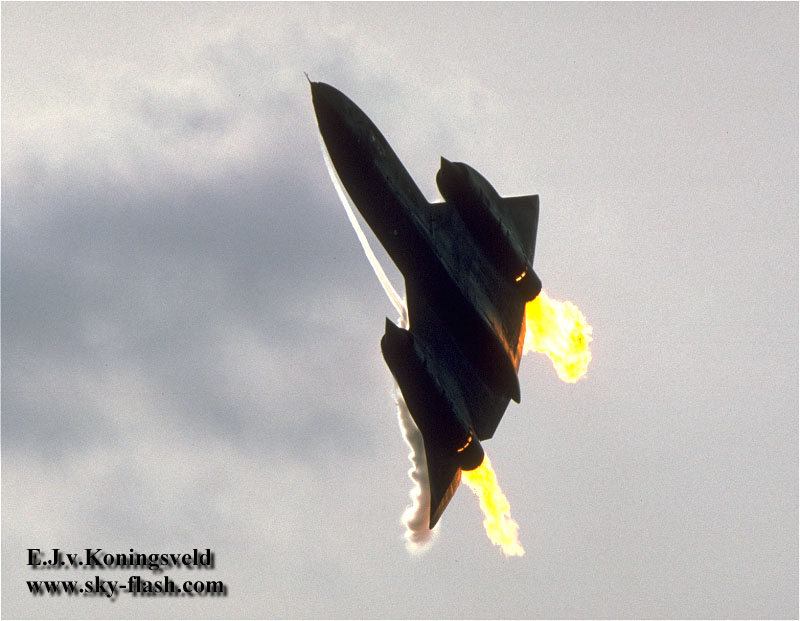
photo courtesy E.J. van Koningsveld
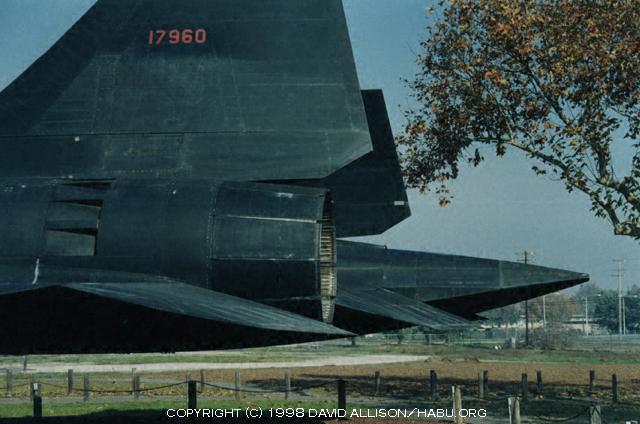
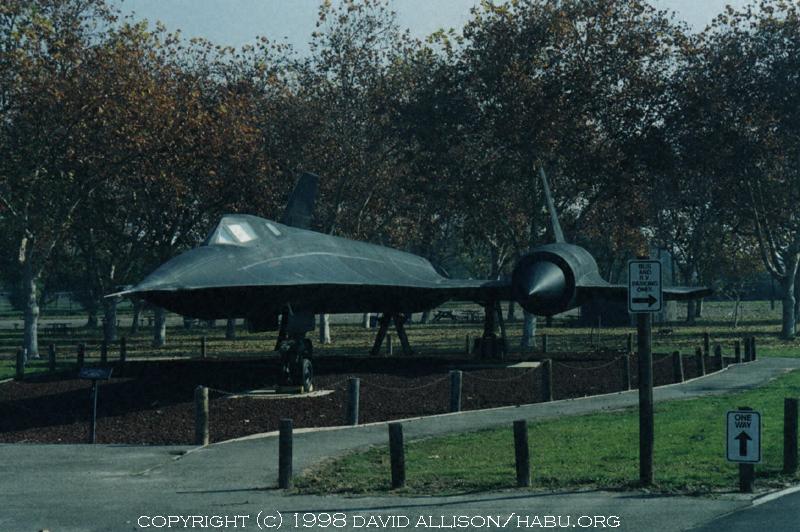
#960 is on permanent display at Castle Air Museum near Castle Air Force Base, in Atwater, California.
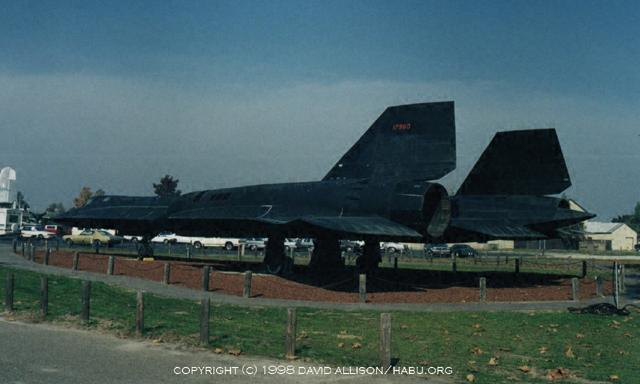
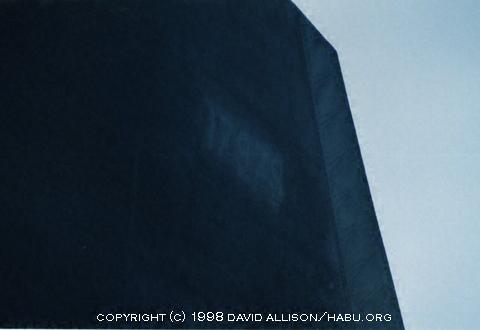
Apparently she and 979 once shared vertical stabilizers; 979's number can be seen on the inside of 960's left tail.
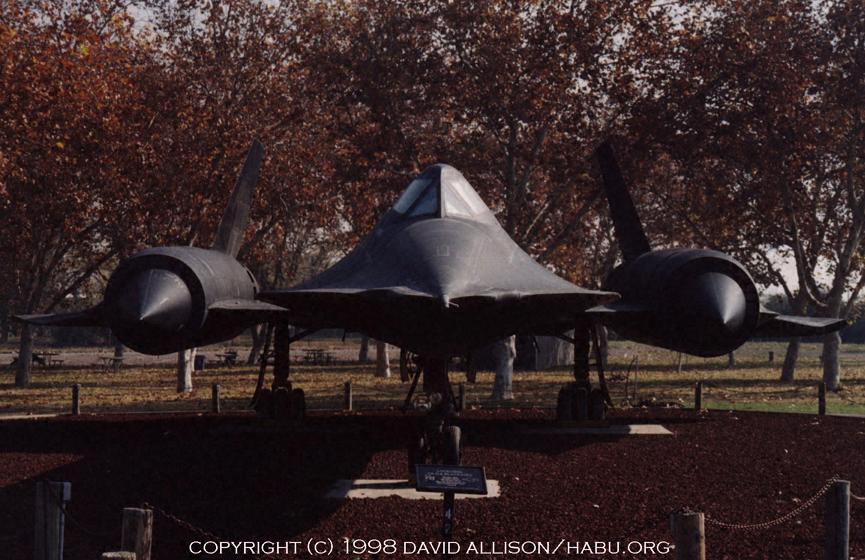
17961
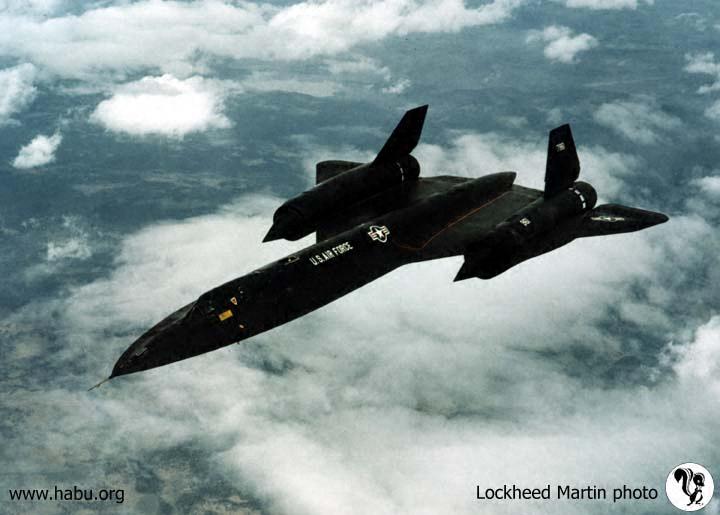
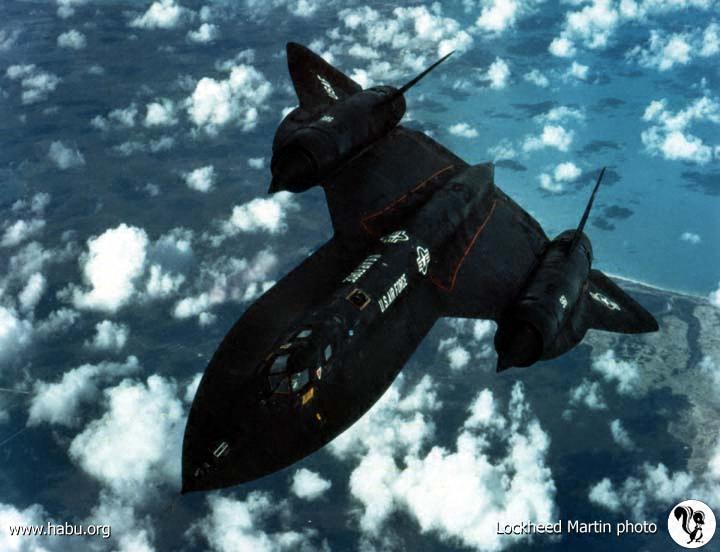
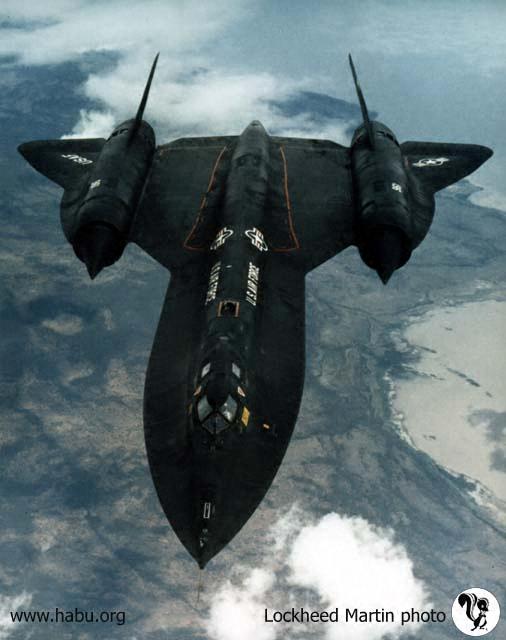
These 3 Lockheed photos, and several more nearly identical to them, were taken during a single flight in the early 1970s. These were used for almost all press releases regarding the SR-71.
961 ended her flying career early. After the Pentagon ordered the destruction of all Blackbird tooling in February 1970, the Air Force had no choice but to cannibalize certain airframes in order to provide parts for the rest of the fleet. She managed to accumulate 1601 hours by the time of her last flight on February 2, 1977.
She is now dramatically displayed between an authentic T-38 and a full-size replica of the Space Shuttle at the Kansas Cosmosphere and Space Center in Hutchinson, Kansas.
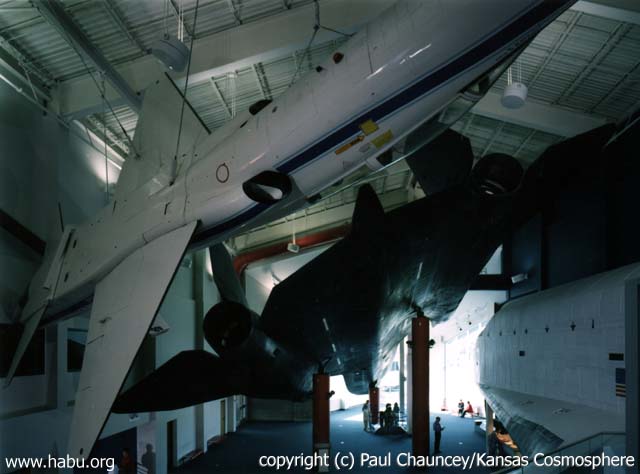
photo copyright © Kansas Cosmosphere and Space Center - used by permission
61-7962
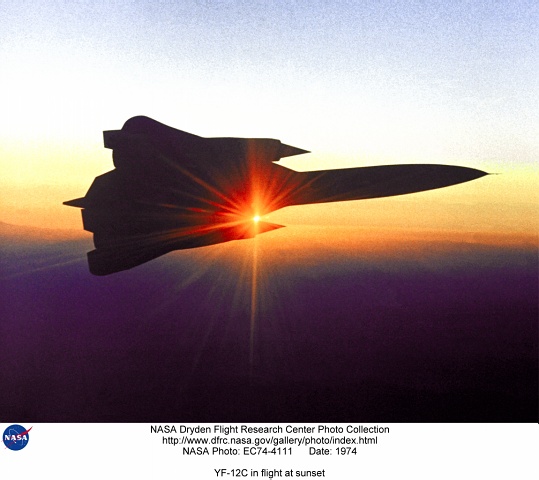
1971 Lockheed photo of 962 in flight -- in spite of the caption, this is not the YF-12C. - Lockheed photo courtesy of NASA
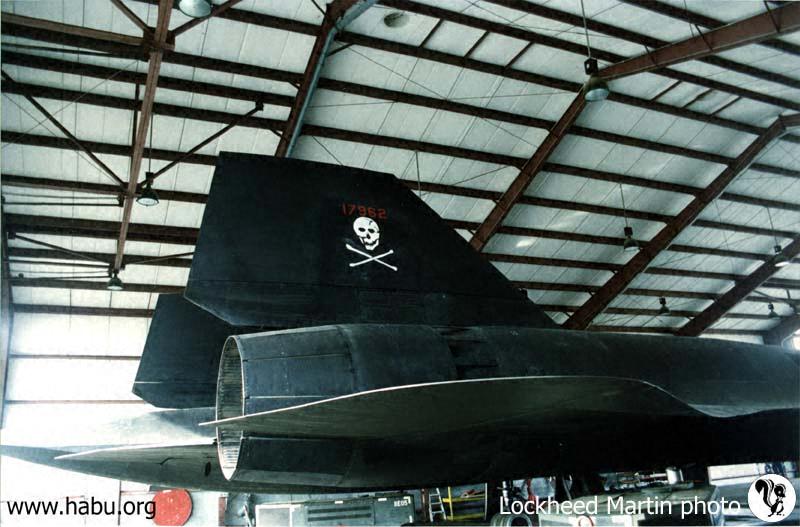
962 in the "barn" at Beale AFB, sporting a unique skull & crossbones emblem.
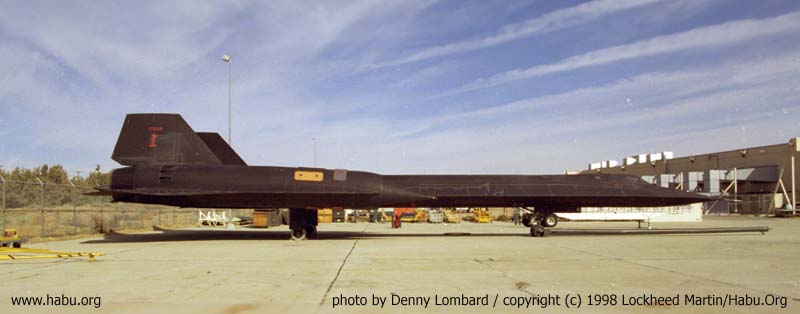
She was carrying the DET-1 symbol when the fleet was retired and she was flown to Palmdale for storage in 1990.
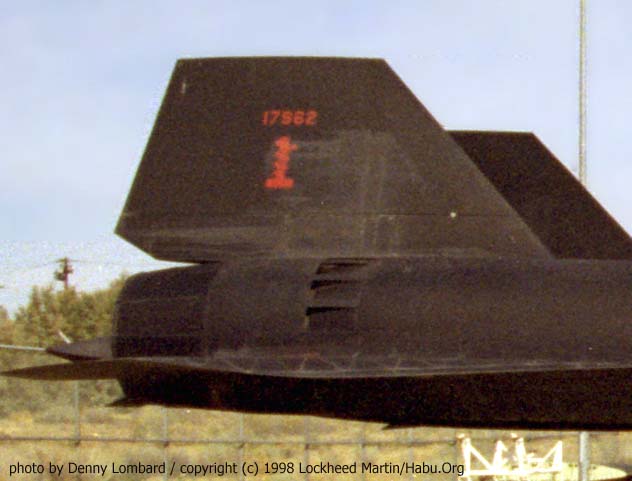
After 11 years in storage at Lockheed's facility in Palmdale, California, 962 has finally found a permanent home at the Imperial War Museum in Duxford, England. She is the only SR-71 on display outside the continental United States. Her arrival makes a fine gift to Duxford in appreciation of Great Britain's putting themselves in harm's way by allowing the Air Force to operate Det-4 out of RAF Mildenhall for so many years.
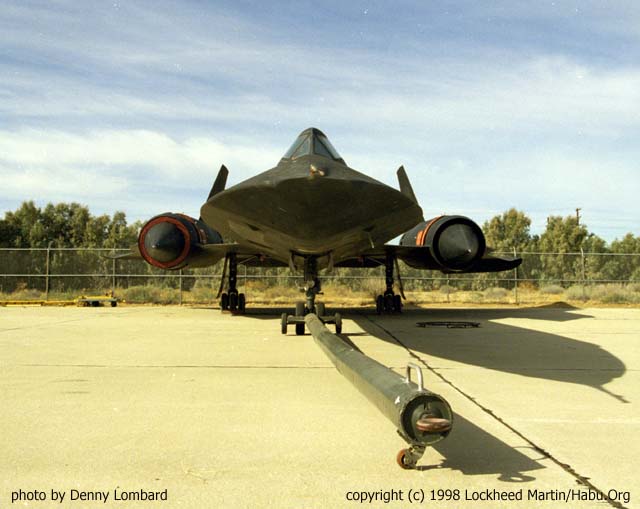
61-7963
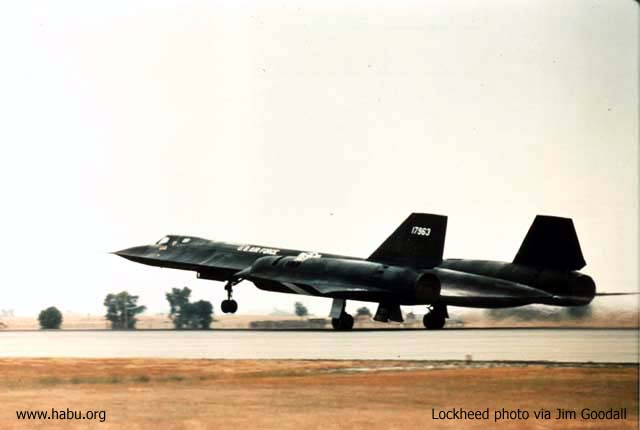
963 takes off from Beale AFB - Lockheed photo via Jim Goodall
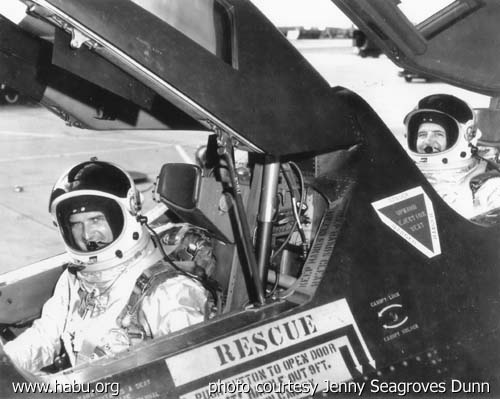
Pete Collins and Conny Seagroves in 963, August 1966 - photo courtesy Jenny Seagroves Dunn
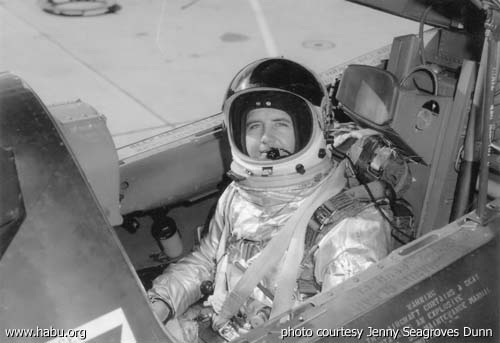
Conny Seagroves in 963, August 1966 - photo courtesy Jenny Seagroves Dunn
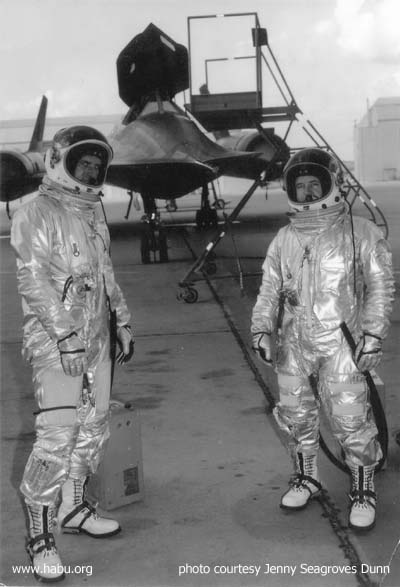
Pete Collins and Conny Seagroves with 963, August 1966 - photo courtesy Jenny Seagroves Dunn
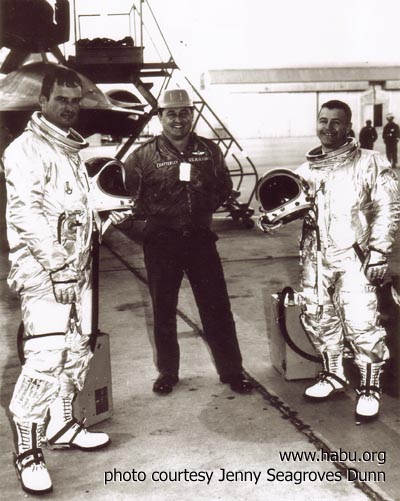
Pete Collins, MSgt Robert Chatterley, and Conny Seagroves with 963, August 1966 - photo courtesy Jenny Seagroves Dunn
Just like her sister ship 961, 963 was unlucky enough to be cannibalized for parts for other airframes, and so ended her flying career early. She last flew on October 28, 1976, with a total of 1604.4 hours of flight time.
Steven Myatt worked with the blackbirds from 1975-77, and was lucky enough to take the following pictures of 963 at Kadena
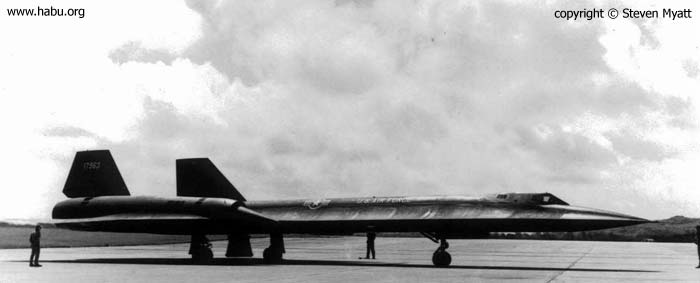
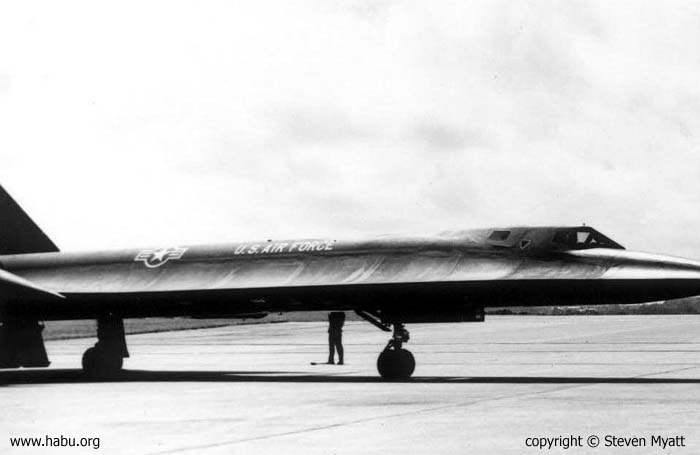
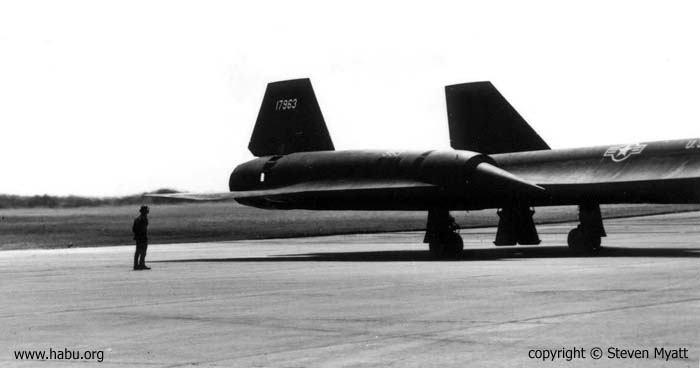
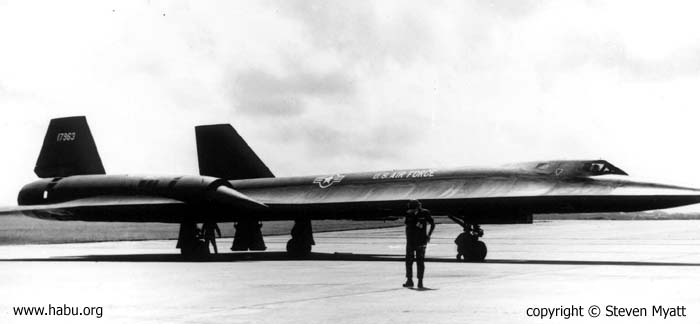

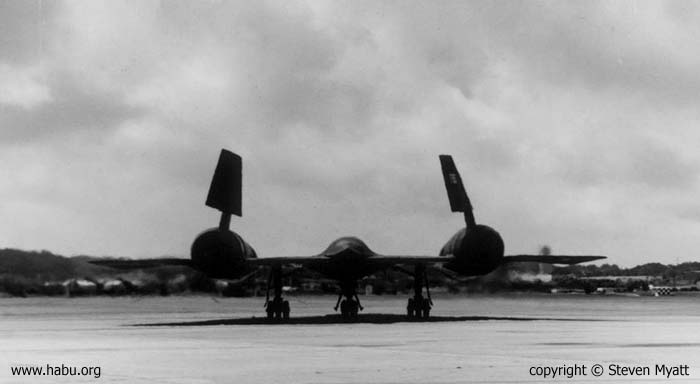
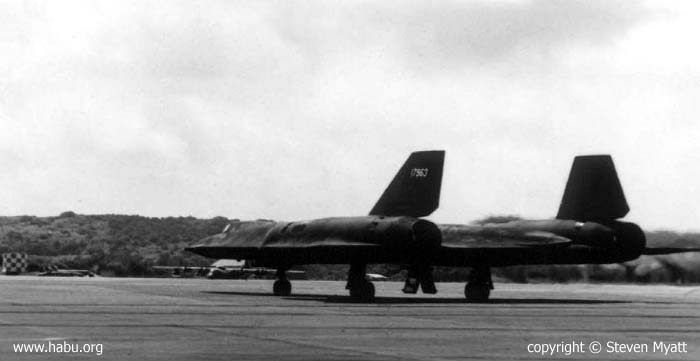
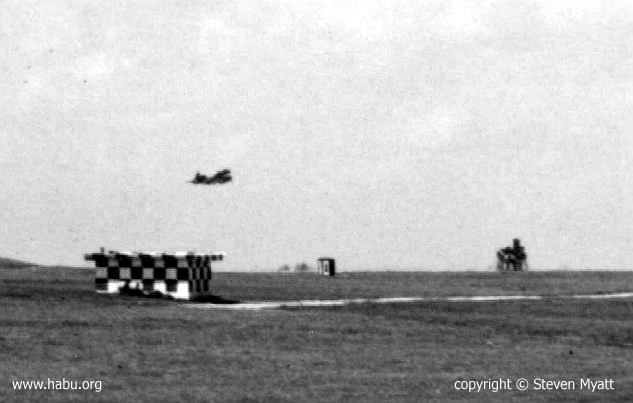
photo courtesy of John Weeks
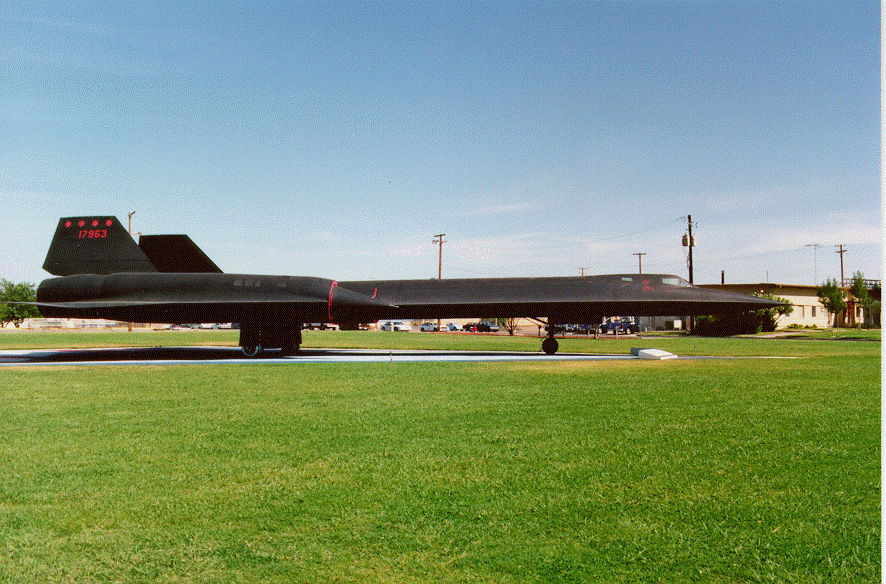
963 is on display at Beale Air Force Base, home of the 9th SRW, near Marysville, California. She sits on a concrete pad shaped and painted like the Mach 3+ patches worn by flight and maintenance crews. The D-21 drone was added to the display in 1997.
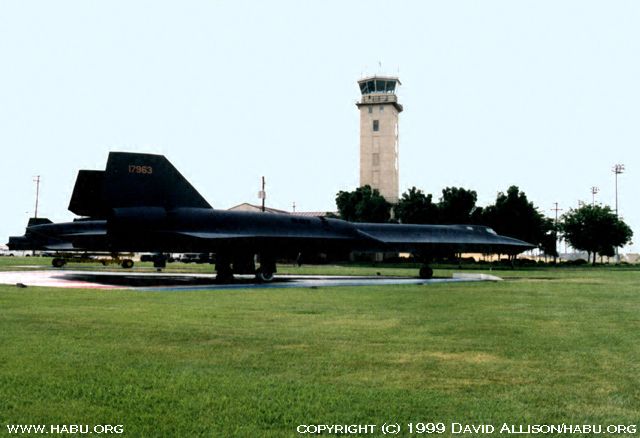

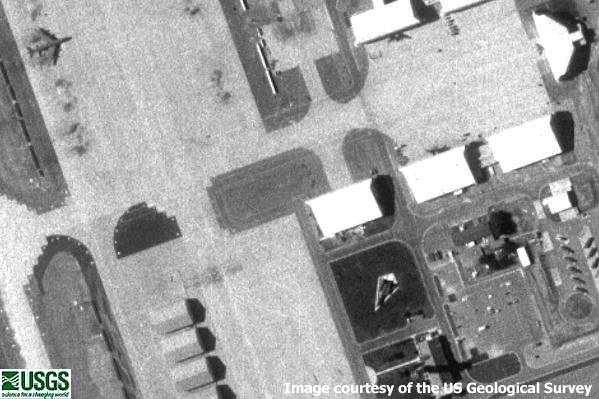
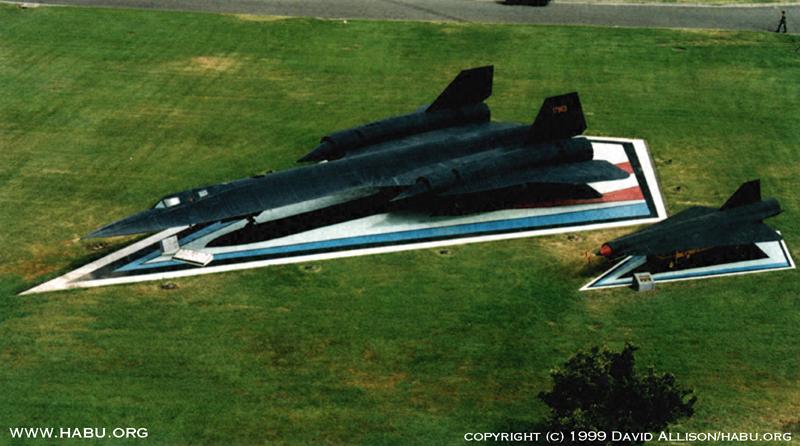
61-7964
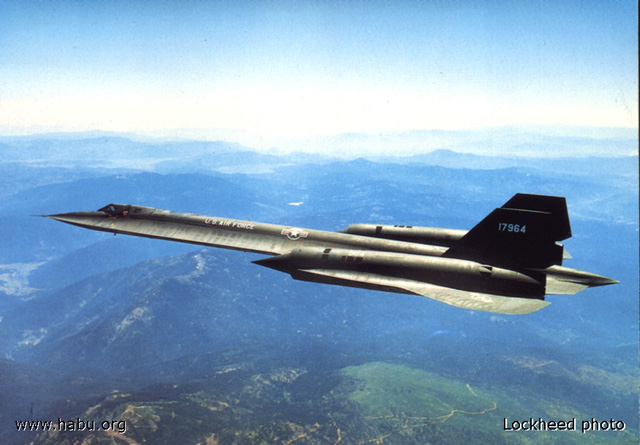
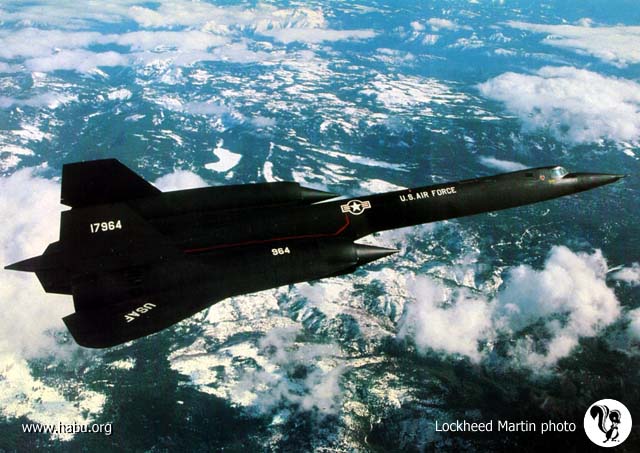
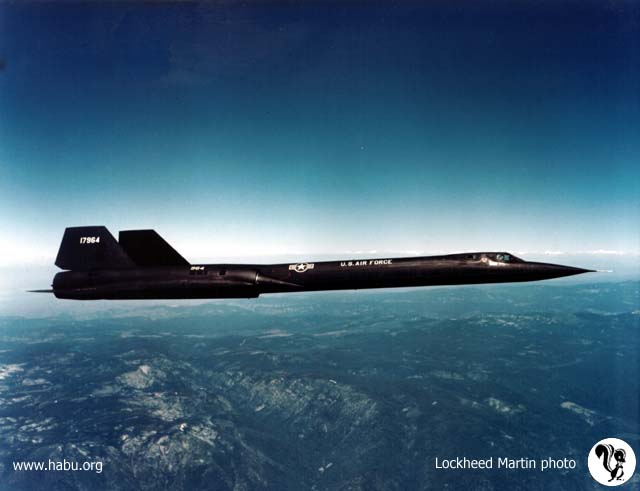
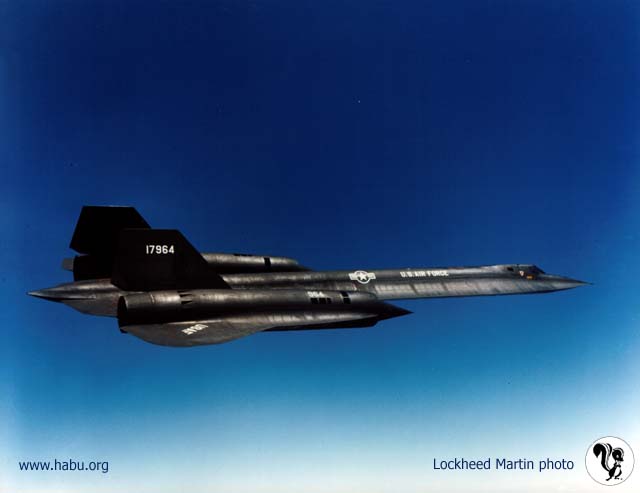
61-7964
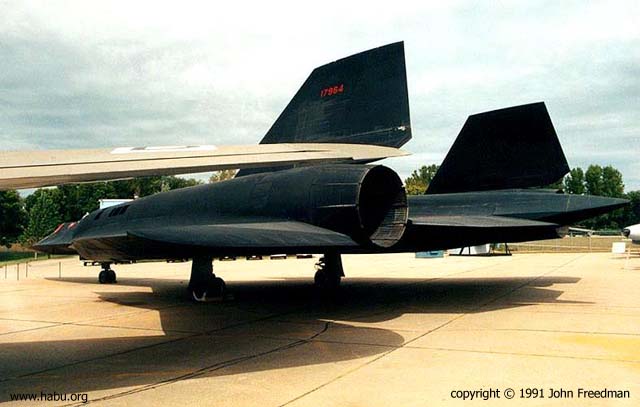
photo courtesy of John Freedman
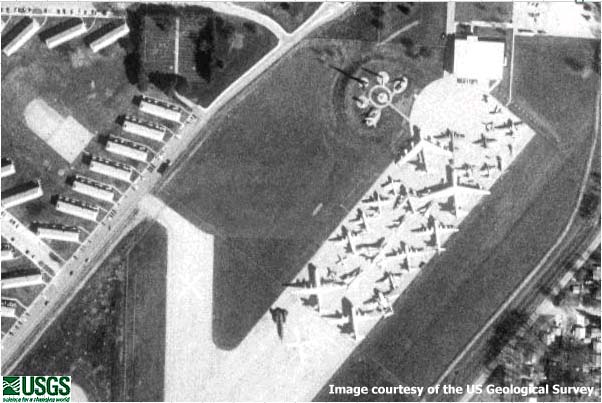
Until 1998, she had been at the old SAC Museum at Offutt AFB, where Maj. Terry Pappas landed her for the last time, with RSO Mike Finan, on Tuesday, March 20, 1990. She ended her flying career with 3373.1 hours on her. Finan would rejoin the USAF blackbird program when Det-2 was reactivated 5 years later.
image courtesy of the USGS via Terraserver

photos courtesy of John Trionfo
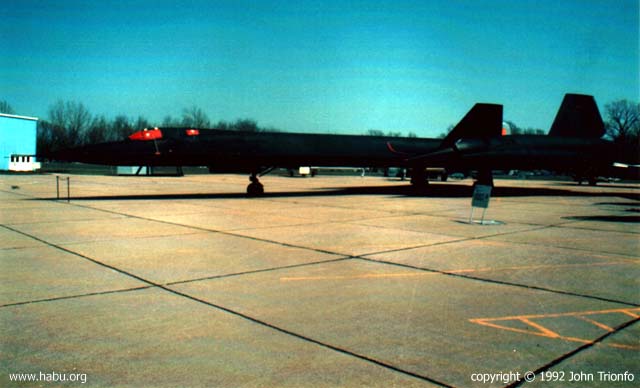
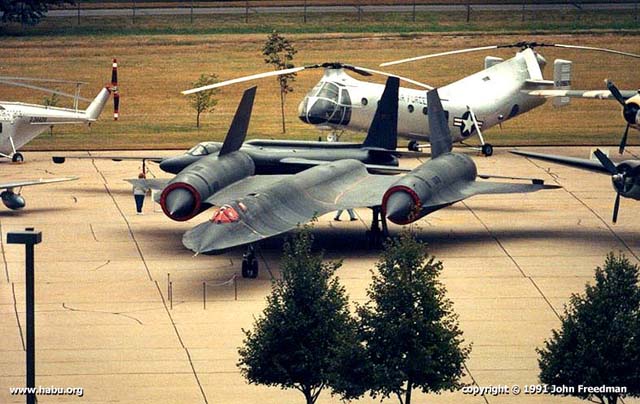
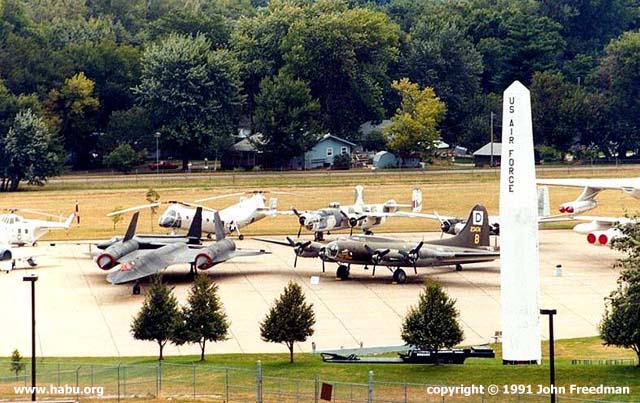
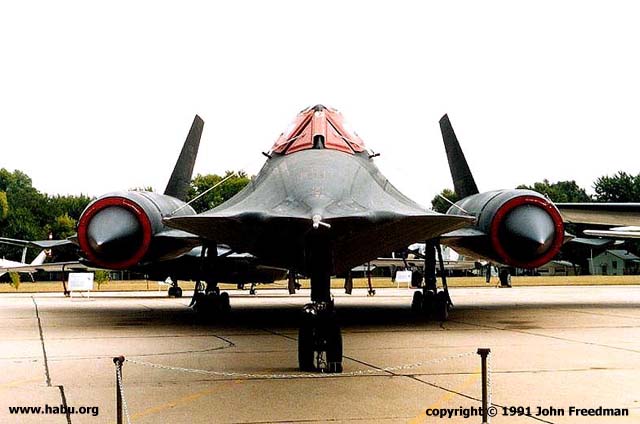
photos courtesy of John Freedman
One of the higher-profile blackbirds, #964 was usually the airframe chosen to do airshows, and prior to 1990 was probably photographed more than any blackbird except the B-model, #956.
61-7965
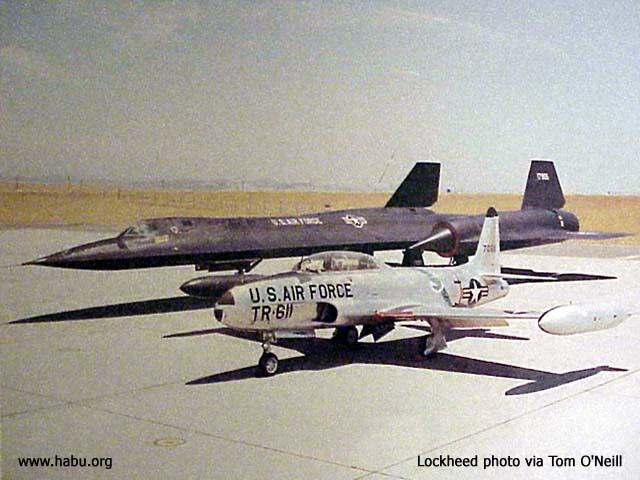
Lockheed photo courtesy of Tom O'Neill
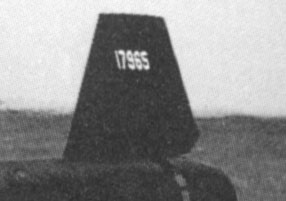
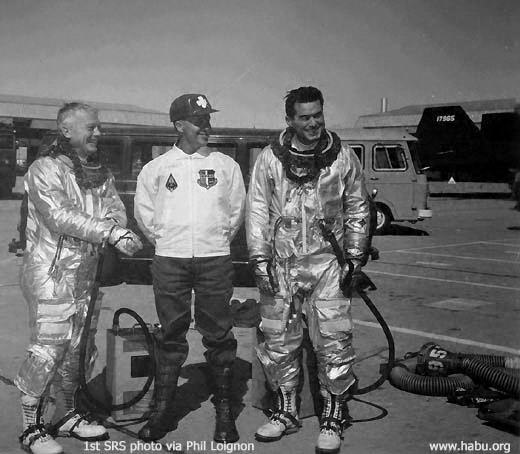
With 965 in the background, Col. Bill Hayes, TSgt. Gene Patrick and LtCol. Al Hichew wearing some festive attire in observance of St. Patricks Day 1967 (see color photo here) - - 1st SRS photo via Phil Loignon
965 was lost on October 25, 1967. During a night flight, the aircraft's inertial navigation system failed. As a result, her crew was unaware that she had entered a dive. When they realized what had happpened, they were beyond the point of being able to pull up in time. Pilot Maj. Roy St.Martin and RSO Capt. John Carnochan ejected safely. The aircraft crashed near Lovelock, Nevada.
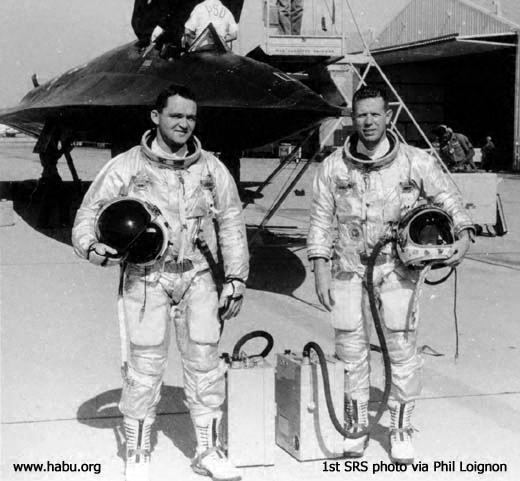
John Carnochan and Roy St. Martin in front of what may or may not be 965 - 1st SRS photo via Phil Loignon
The crash site was discovered on January 9, 1999, by Peter Merlin and Tony Moore. Here is the official report of the accident, courtesy of Peter Merlin:
SR-71 serial number 61-7965, call sign ASPEN 28, departed Beale AFB at 0058Z on 25 October 1967 for a three hour night training flight. Papa Route consisted of a high-altitude, supersonic leg to BUSY PALACE air refueling area near Albuquerque followed by a second climbing acceleration east of Denver and return to Beale on a westbound leg north of Salt Lake City. The flight progressed normally through the air refueling and second acceleration to supersonic cruise. Descent and deceleration from cruise was initiated in the vicinity of Elko, Nevada, approximately two hours and fifteen minutes after takeoff. After completion of checklist item "Throttles - retard and set 6300 to 6100 RPM" in the Mach 2.0 checklist, the pilot observed a warning flag on the bank steering bar of the attitude director indicator (ADI). At this time the pilot also observed that the autopilot had become disconnected. The ADI showed wings level flight and the horizontal situation indicator (HSI) showed straight, non-turning flight. Because of the warning flag on the ADI steering bar, the pilot switched the attitude reference source to the Flight Reference System (FRS). The ADI showed an immediate unusual attitude of undetermined magnitude, and both the warning flag on the stering bar and the OFF flag on the ADI appeared simultaneously. The pilot advised the RSO that he had attitude indicator malfunctions and the RSO confirmed that his astro- inertial/navigation system (ANS) had stopped functioning as a valid reference source. The RSO, on FRS, observed his attitude indicator reflecting a large left wing low, diving turn. Due to the radical attitude displayed in FRS, he stated to the pilot that the FRS was inoperative. However, there were no OFF flags on the RSO's attitude indicator. The RSO switched to ANS and it showed wings level, constant heading. The crew was not aware that the aircraft was making a 180-degree turn towards the east as observed by Oakland Center. The speed had increased to 480 KEAS where the pilot felt that he had stopped the trend of increasing airspeed. The pilot had no outside reference to assist him in the recovery from the unusual attitude because of the darkness. Recovery could not be effected using the standby attitude indicator. The pilot directed the RSO to bailout, passing an estimated 30,000 feet. The pilot remained with the aircraft for an unknown duration, continuing his efforts to recover, but was unsuccessful. He ejected from the aircraft at an unknown altitude and speed. Both crew members had successful ejections. The aircraft struck the ground in a near vertical dive and was totally destroyed upon impact. The crash occurred at 0320Z in an isolated area with no witnesses at or near the scene of the accident. Total flight time was approximately two hours and twenty minutes.
"Today, the crater is gone. Only scattered debris remains to mark the site." - Peter Merlin
61-7966
no photo
966 was lost on the night of Thursday, April 13, 1967. She crashed near Las Vegas, New Mexico (not Nevada) after entering an unrecoverable stall following an in-flight refueling. Both pilot Cpt. Earle Boone and RSO Cpt. Richard "Butch" Sheffield ejected safely.
Flight records for this aircraft are a little unclear; the June 1967 DCMA Summary of Individual Aircraft shows total time on the airframe to be 53.2 hours; however, the March 1967 SR-71 Flying Activity Summary shows the total time to be 63.3 hours at the conclusion of her March 31 flight. Considering that the only flight she made in April 1967 was her final one of 1hr23min, that would make the total time 64.7 hours. Sheffield estimates that 966 had less than 50 hours of flight time on her at the time of the crash, lending creedence to the 53.2 hour figure. Statistics were kept on both flight hours scheduled and flight hours flown; allowing for aborted and cancelled flights, the 53.2 hour mark is more likely.
Robb Magley discovered 966's crash site on Thursday, May 10, 2001. Check out his account on finding the elusive site at http://members.fortunecity.com/aspen29/.
61-7967
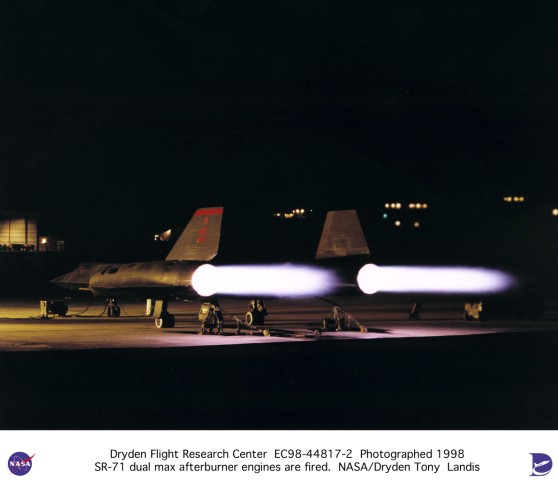
photo by Tony Landis, courtesy of NASA/Dryden
967 was one of three Blackbirds that were being flown by the USAF after the "fleet" was reactivated in 1995 (click here or on the photo below for pictures of all the Det-2 crews).
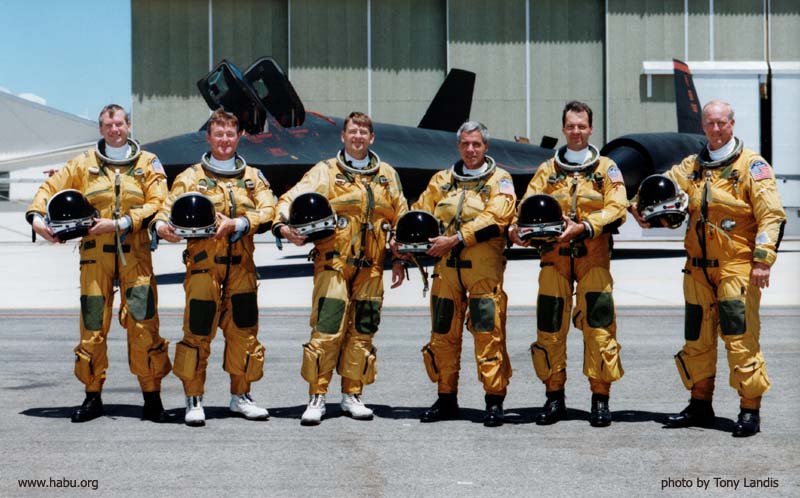
In early July 1999, the US Air Force transferred ownership of all four flyable SR-71s (including 967) to NASA (click here for a NASA press release). 967 was unlucky enough to be the first of the 4 to be given back to the USAF for disposition to museum duty.
Click here for Neville Dawson's photos of 967 being pre-flighted.
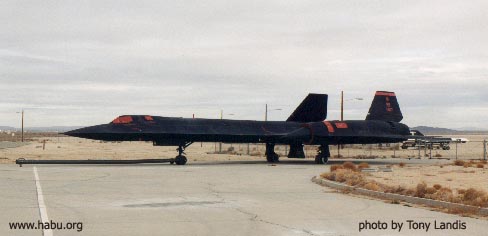
967 parked at Dryden, with a few D-21s visible in the background - photo courtesy Tony Landis
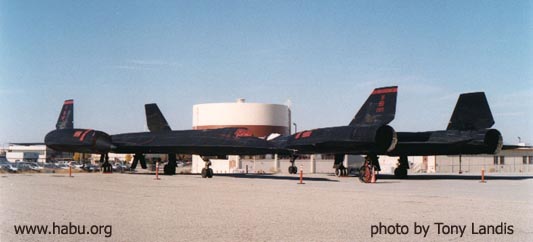
November 1999 photo showing 967 and 971 sitting outside of their old Det2 hangars - photo by Tony Landis
More photos are available at NASA's web site and our NASA/Dryden Mirror Page.
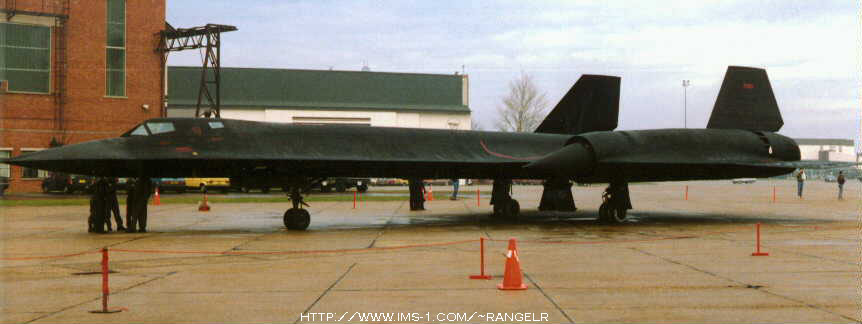

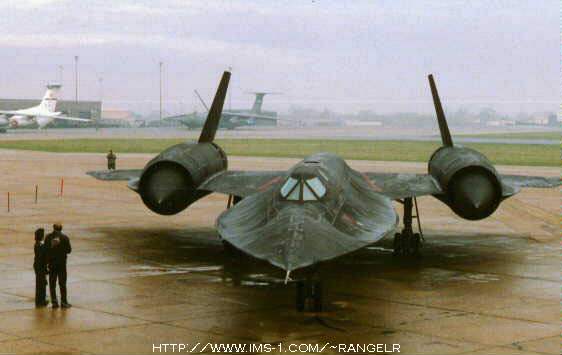
The above 3 photos, courtesy of Randy Rangel, were taken at Mildenhall RAF (DET-4) in 1990. According to Randy, 967 was the last blackbird to leave the base when the fleet was deactivated in 1990.

Steve "Griz" Grzebiniak writes:
"I was the pilot of that Blackbird when we attended the Paris Air Show in '89. [Those photos] sure bring back some good memories.
"The tail number of the Paris blackbird was #967. That also happened to be the favorite aircraft for Jim [Greenwood] and I. We flew a lot of successful missions together in that one. Some of the crews had bad luck with old 967, but she was always a great performer for Jim and I.
"There is a bit of an interesting story as to why we are deplaning onto the roof of some sort of baggage-cart tug. The KC-135Q that preceded us from Mildenhall to Paris, which was carrying our support equipment and personnel, landed a bit long and/or hot on the relatively short, wet runway that day. They suspected they had hot brakes and had to run the checklist for that, which required them to taxi into a safe area and allow the brakes to cool for a specified amount of time.
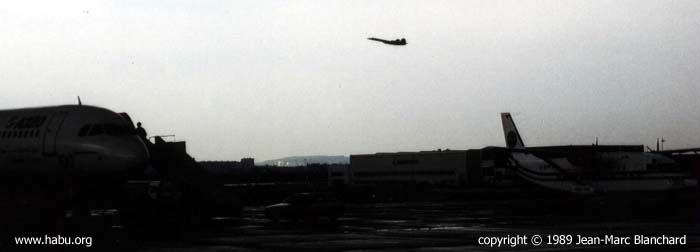
"Jim and I did a bit of an arrival show in the drizzle, then landed and tried to stall as long as we could, waiting with engines running, till our crew chief could chock us. I forgot who eventually came out to throw the chocks in, but there still was no adequate ladder to deplane.
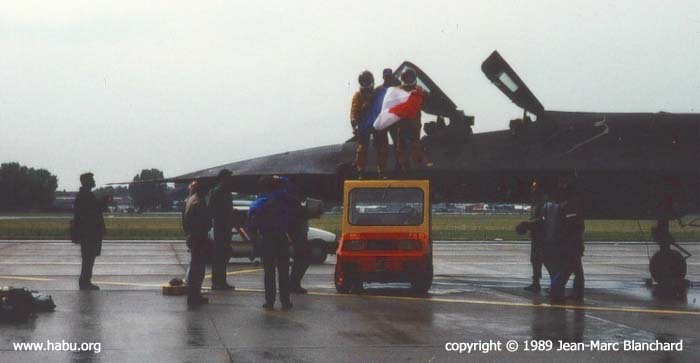
"After a lot of hand-waving and pointing, we got some French airport worker to drive his tug up close enough so we could egress. It put a damper on our planned salute to the French, (as did the dismal weather) so the photo of Jim and I holding the French flag that we flew in from Mildenhall didn't elicit much of an enthusiastic response from the confused on-lookers."
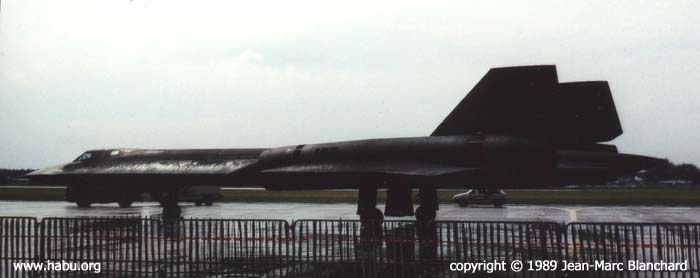
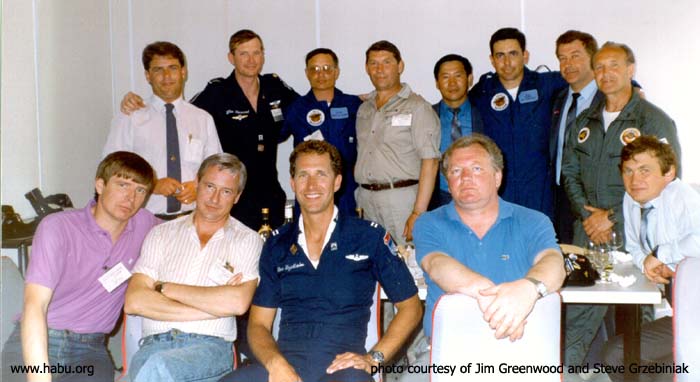
The "Secret Meeting" at the 1989 Paris Air Show. In the back row, second from the left, is Jim Greenwood; next to him in the blue jumpsuit is CMSgt Glenn; third from the right is Robby Butterfield. In the front row, third from the left, is Steve Grzebiniak. - photo courtesy of Jim Greenwood and Steve Grzebiniak
"We never thought we would get a photo of all of us like this," recalls Steve Grzebiniak. "The Soviets were very camera-shy during the whole Paris Air Show week. The press was hounding them and us, especially whenever we would get near each other. This little exchange of hospitality was organized in a very secretive manner so as not to tip off the press. Even the Hughes Aviation people were unaware of what we were requesting the use of their conference room for.
"After drinking a couple rounds of shooters and vodka, one of the Soviets took out a camera and politely asked if he could take a couple of photos of the group. We of course agreed, knowing full and well that the Soviet intelligence community already had full dossiers on all of us, including photos. We also took our share of photos and that is what you are looking at now.
"Some pretty heavy hitters in the photo. The guy on the far right of the photo, in the green flight suit is Roman P. Taskaev, a Ministry of Aviation Test Pilot. Standing next to him in the coat and tie is Victor G. Pugachev, the chief test pilot for the Sukhoi Design Bureau. Sitting at the far left, in the lavender shirt is Yevgeny I. Frolov, a Ministry of Aviation Test pilot. Pugachev and Frolov were both flying the (then new) Su-27. I've forgotten which aircraft Taskaev was flying. The stout guy in the middle of the photo in the khakis was a "Frogfoot" ground attack pilot. He also was the most enthusiastic one when it came to his first introduction to tequilla shooters."
Jim Greenwood adds, "Here you see a couple of Habus, Robby Butterfield, a Honeywell Rep, the Mildenhall Fuels Chief, and a couple of other folks that showed up for a hangar flying session and hooks, tequila and vodka. If I had to guess, I'd say there might be a Frogfoot pilot and navigator, a couple of "unknown Russian test pilots", a Mig 29 test pilot (not the one who parachuted to sfety at the show, he was still under medical care), an Su-27 test pilot, and an Aeroflot navigator. After sharing one each bottle of tequila and vodka "hooks", we traded unopened bottles of tequila and vodka with our respective signatures on them. We're still in search of the vodka bottle with the Russian signatures on them."
967 was one of three Blackbirds that were being flown by the USAF after the "fleet" was reactivated in 1995. These 5 photos, courtesy of John Freedman, were taken at Edwards AFB (DET-2) on August 19, 1998, just prior to the second deactivation of the blackbird's thanks to Clinton's unconstitutional line-item veto. In early July 1999, the US Air Force transferred ownership of all four flyable SR-71s (including 967) to NASA (click here for a NASA press release).
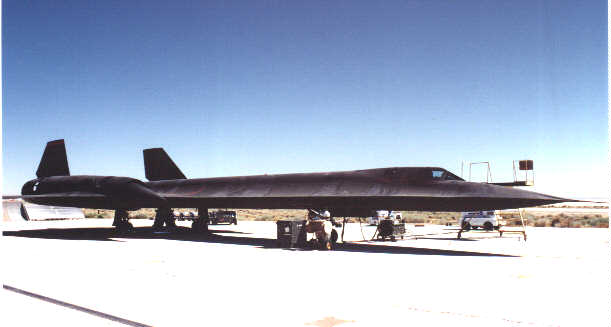
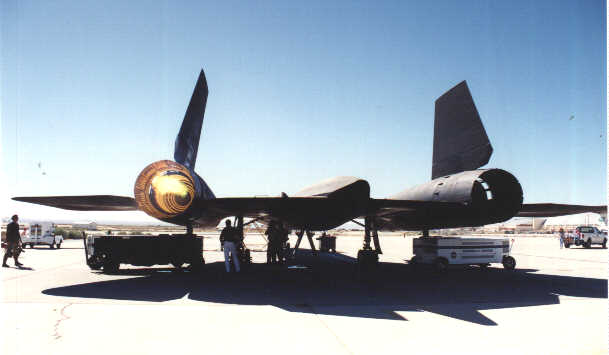
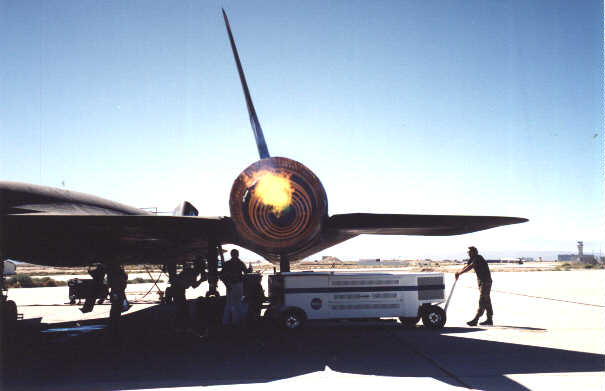
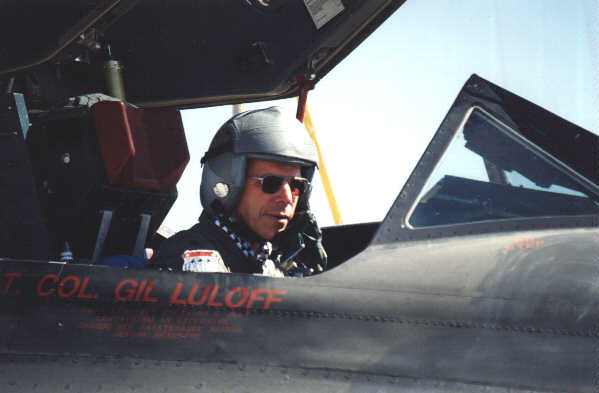
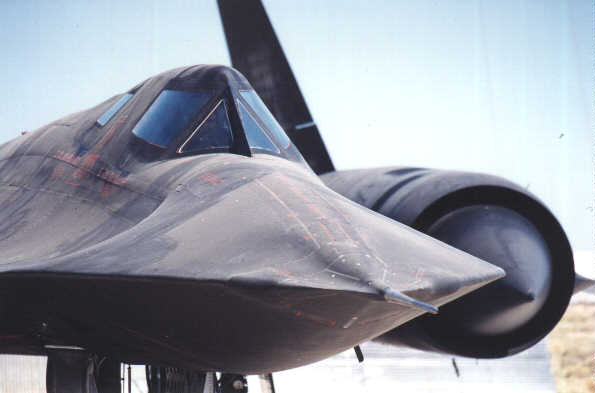
61-7968
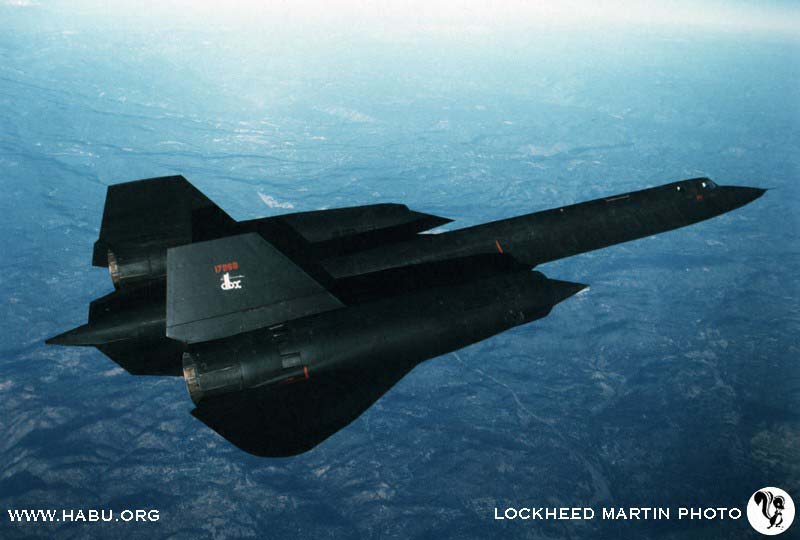
Lockheed Martin photo
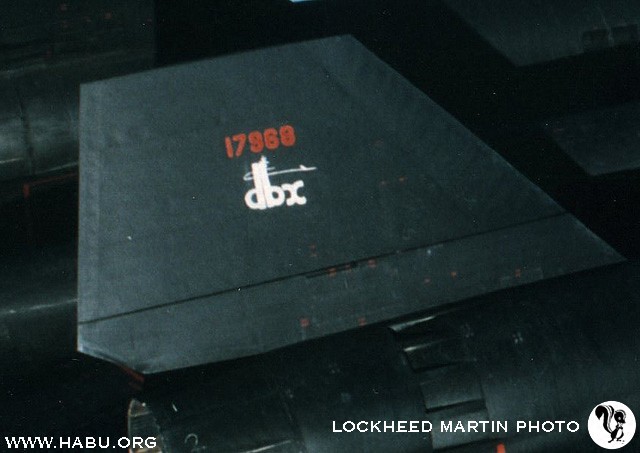
On April 26, 1971, pilot Lt.Col. Thomas Estes and RSO Lt.Col. Dewain Vick flew #968 15,000 miles in 10 hours 30 minutes non-stop on a gruelling marathon mission to test the endurance of the J58 engines and the blackbird airframe, but mostly to see how many times they could refuel before the liquid nitrogen gave out.
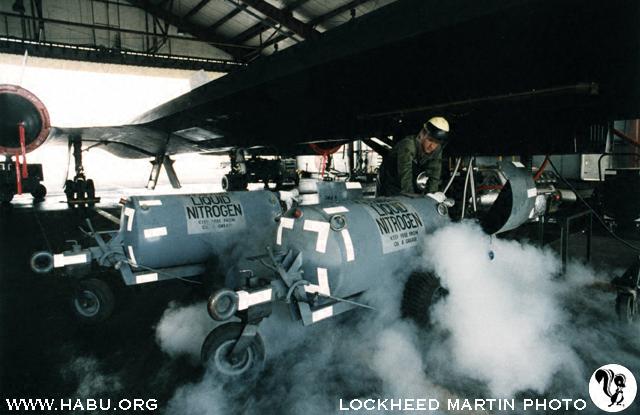
At blackbird speeds and temperatures, oxygen becomes explosive and can spontaneously ignite in the tanks and fuel lines. In order to prevent this, all 6 fuel tanks are purged with pure nitrogen before being filled. The blackbird also carries 260 liters of liquid nitrogen in 3 dewars. This nitrogen expands into its gasous form as it is pumped into the fuel tanks to top them off as fuel is consumed. Without the nitrogen, the empty fuel tanks would cavitate from the increased pressure when returning to lower altitudes to refuel.
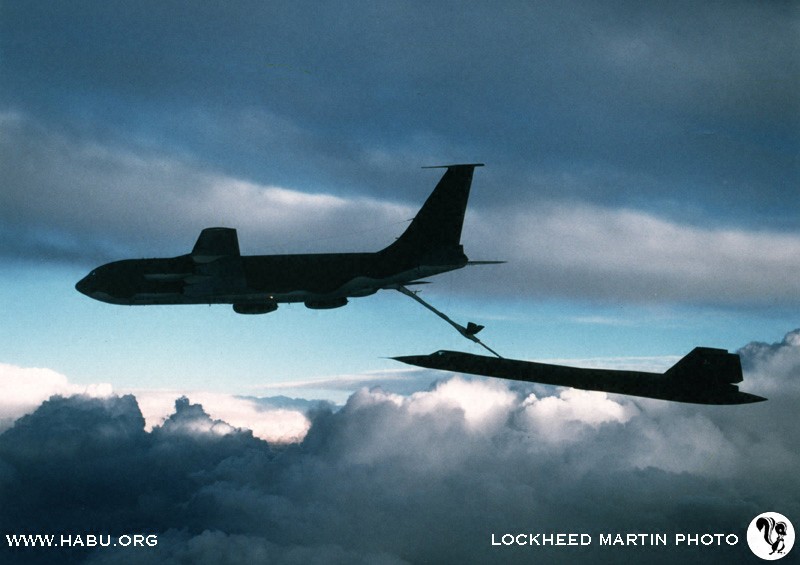
Taking off from Beale AFB in California, they flew 2 laps around the continental United States via Missoula, Montana; east to Bismark, ND; southeast to Peoria, IL; east to Columbus, OH; southeast to Cape Hatteras, NC; southwest to Gainsville, FL; south to Tampa, FL; west to San Antonio, TX; northwest to El Paso, TX; west to El Centro, CA; then back to Beale AFB. Once the second lap was complete, they entered the third lap and turned south at Bismark, for Santa Fe, NM; then west to Las Vegas, NV; then finally back to Beale (flight plan via Ron Kloetzli). This 15,000 mile, 10.5 hour flight required five aerial refuellings. After the flight the aircraft was thoroughly examined and found to be none the worse for the experience. The SR-71 remains to this day the only aircraft rated to run in full continuous afterburner. On September 20, 1971, Estes and Vick were awarded the 1972 Harmon International Trophy by President Richard Nixon for their accomplishment. They were also awarded the 1971 Mackay Trophy for the same flight.
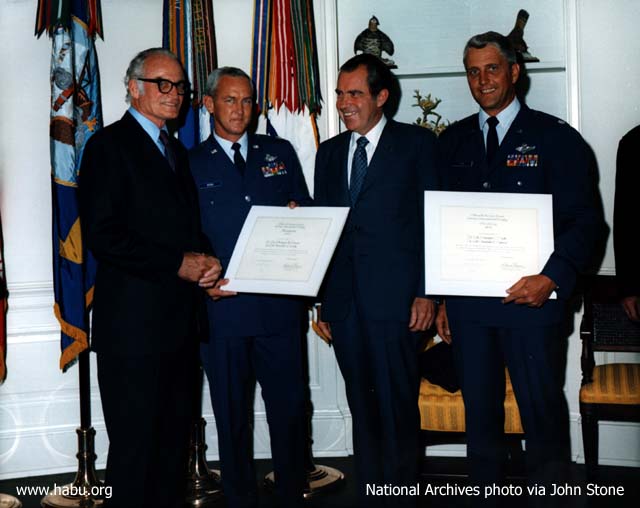
L-R Sen. Barry Goldwater (R-Arizona), LtCol. Tom Estes (pilot), President Richard Nixon, and LtCol. Dewain Vick (RSO), at the White House on September 20, 1971 for the presentation of the 1972 Harmon International Trophy. - USAF photo via John Stone
61-7969
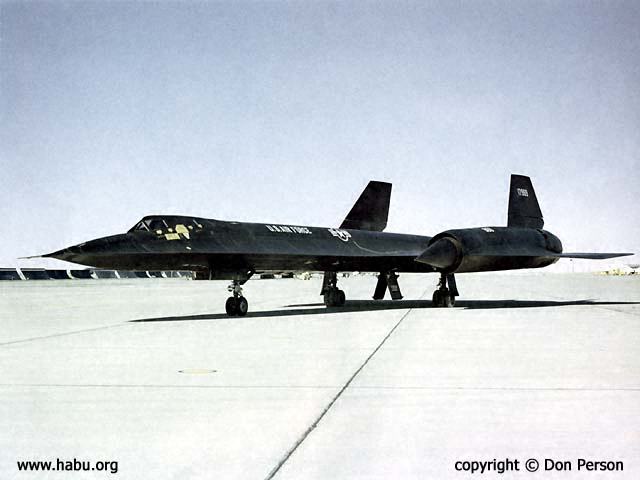
969 posing for the cover of the office Beale AFB guidebook - photo copyright © Don Person
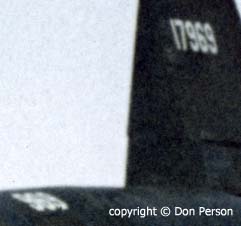
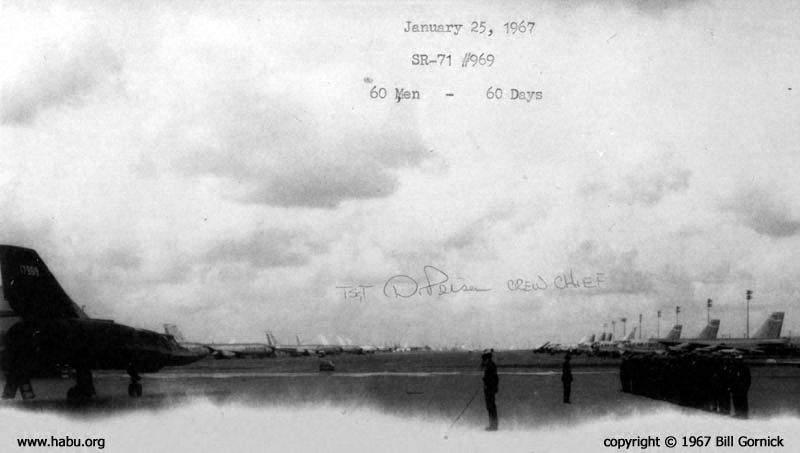
The above photo was taken on January 25, 1967. Explains TSgt Don Person, her first crew chief, "It is the first flight at Beale after about 3 months of fuel cell leaks. My SR-71 fellow crew chiefs went as far as to hang a plastic lemon on the pitot tube! Col. Doug Nelson our wing commander flew the first flight. I did not notice a group of maintenance people hanging around outside the launch shelter during engine start. When I disconnected communications to the flight crew and turned around I saw them lined up - what a surprise! They came to attention as 969 taxied out and saluted as 969 turned left and passed in review."
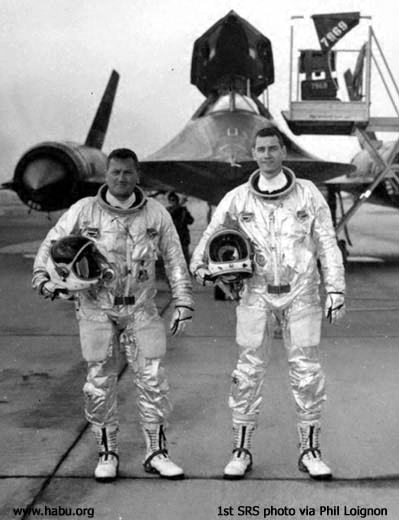
Abe Kardong and Jim Kogler with 969 - 1st SRS photo via Phil Loignon
969 was lost on May 1, 1970. After an in-flight refueling, she was climbing back to operational altitude when she encountered a tremendous thunderstorm that she was unable to avoid. Both engines flamed out and could not be restarted. Maj. William Lawson and RSO Maj. Gil Martinez ejected safely.
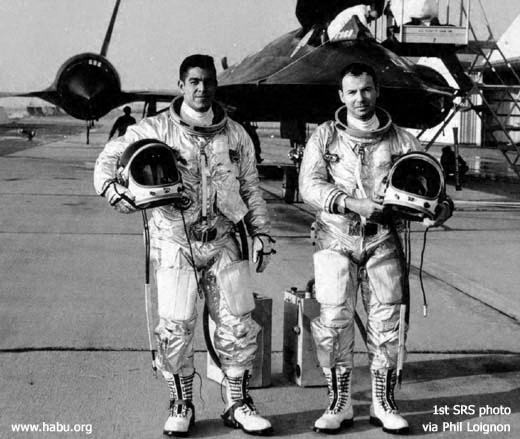
Gil Martinez and Willie Lawson with 969 - 1st SRS photo via Phil Loignon
61-7970
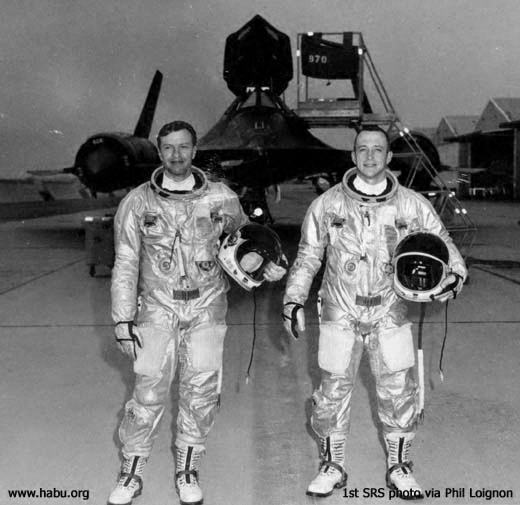
Buddy Brown and Dave Jensen with 970 - 1st SRS photo via Phil Loignon
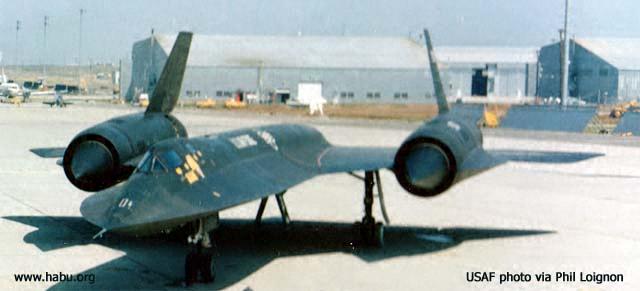
958 and 970 were the two airframes used in the group portrait of the 1st Strategic Reconnaisance Squadron taken on May 27, 1967.
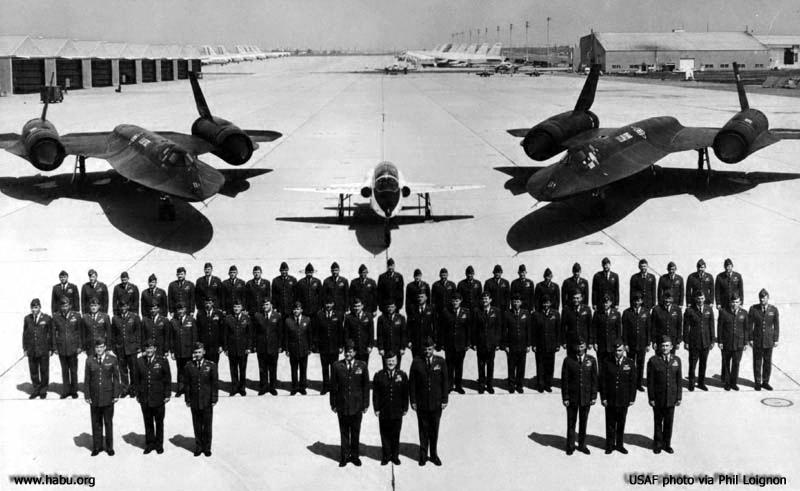
In the front row, from left to right are: Sgt Dave Gallard, Jack Kennon (Ops Officer), Ray Haupt (1RS Commander), Hal Confer (DCO), Bill Hayes (9SRW Commander), Charles Minter (9SRW Vice Commander), John Boynton (99SRS Commander), Harlon Hain (Ops Officer) & MSgt Loignon. The pilots are in the second row, with their RSOs directly behind them, again starting from the left: Storrie/Mallozzi, Sowers/Sheffield, Hichew/Schmittou, Collins/Seagroves, Bill Campbell/Pennington, Halloran/Jarvis, Brown/Jensen, Dale Shelton/Boggess, O'Malley/Payne, Walbrecht/Loignon, Boone/Vick, Bevacqua/Crew, Watkins/Dempster, DeVall/Shoemaker, Spencer/Branham, McCallum/Locke, St. Martin/Carnochan, Bull/McNeer, Powell/Kendrick, Daubs/Roetcisoender, Bobby Campbell/Kraus, Kardong/Coleman, Maier/Casey, Fruehauf/Mathers, and Hudson/Ferrell. - info courtesy of Dr. Coy Cross, Beale AFB 9RW/HO
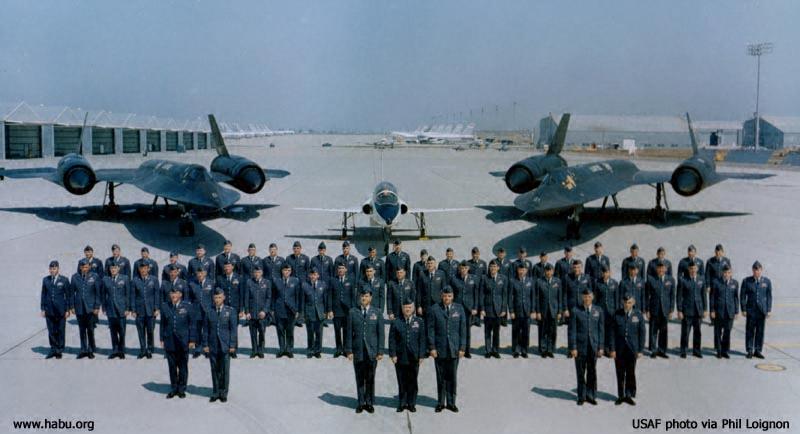
The same lineup as above, only without Sgt. Gallard and MSgt. Loignon.
USAF photo via James Goodall and Tony Landis - closeup below
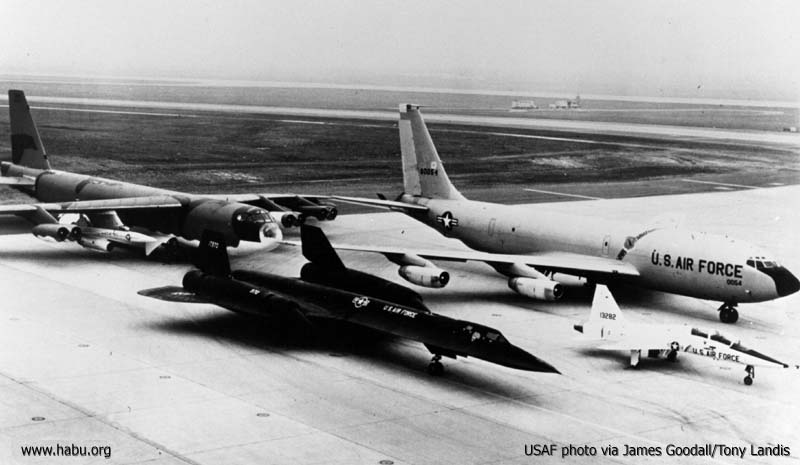
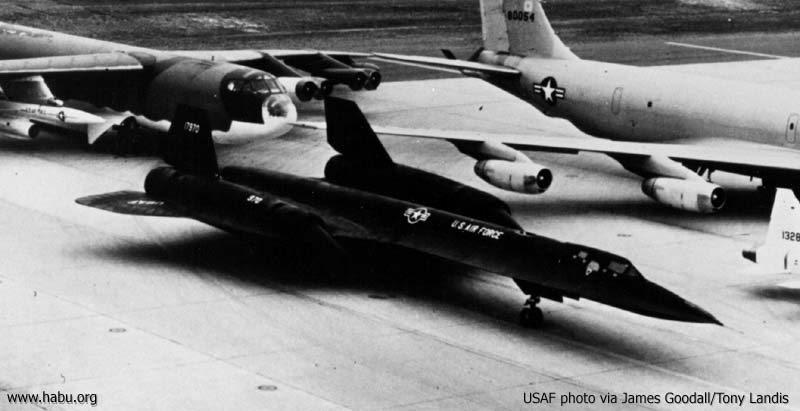
970 was lost on June 17, 1970. Just after an in-flight refueling, the SR-71 suddenly pitched up and collided with the KC-135Q tanker. RSO Maj. Mort Jarvis bailed out unharmed, but pilot LtCol. Buddy Brown broke both his legs during the ejection. The KC-135Q managed to make it back to Beale AFB safely in spite of suffering what Brown described as "a severely damaged horizontal stabilizer."
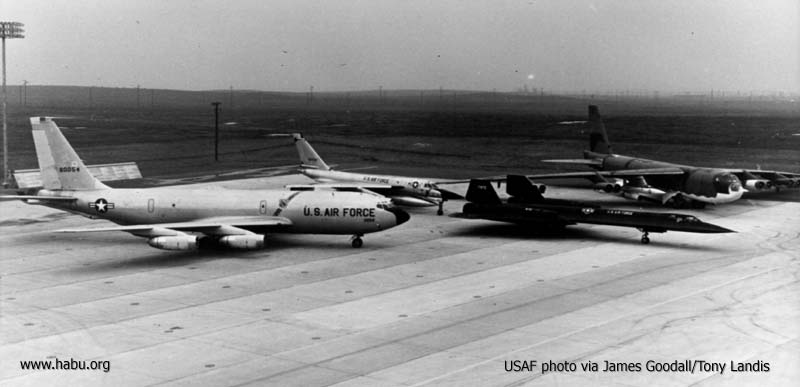
USAF photo via James Goodall and Tony Landis - closeup below
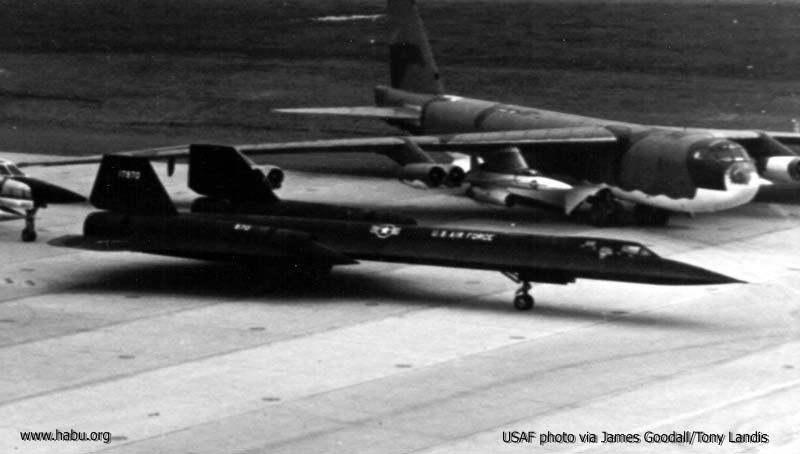
61-7971
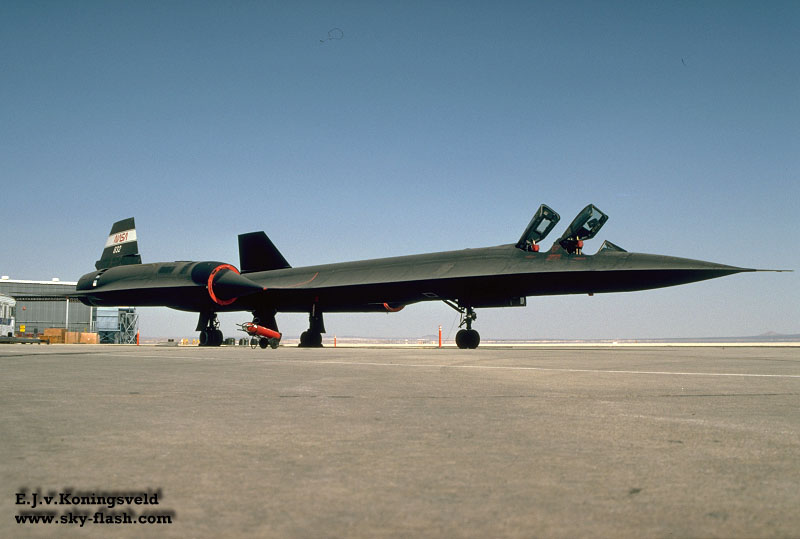
photo courtesy E.J. van Koningsveld
She had been on loan to NASA as #832, but was one of 3 Blackbirds reactivated by the Air Force in 1995. In early July 1999, the US Air Force transferred ownership of all four flyable SR-71s to NASA (click here for a NASA press release).
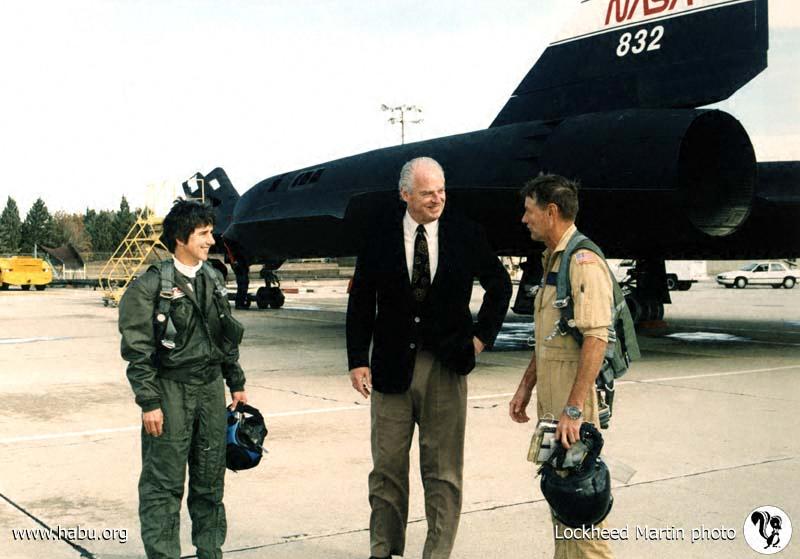
Marta Bohn-Meyer (left) and Steve Ishmael (right) are greeted by Jay Murphy of Lockheed on January 12, 1995, when they delivered 971 to Palmdale to be prepped for re-activation by the Air Force - photo courtesy of Lockheed Martin
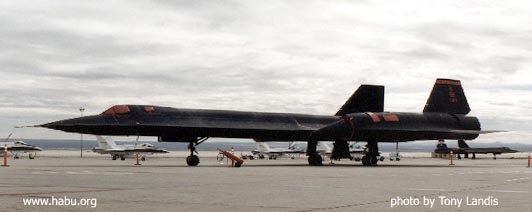
As of February 2000, #971 has been moved to the back ramp at Dryden, parked next to 844 (980).

November 1999 photo showing 971 and 967 parked on the ramp outside their old Det2 hangars - photo courtesy of Tony Landis
More photos are available at NASA's web site and our NASA/Dryden Mirror Page.
August 1981 photo of 971 on display at Beale AFB - US Air Force photo by SSgt Bill Thompson
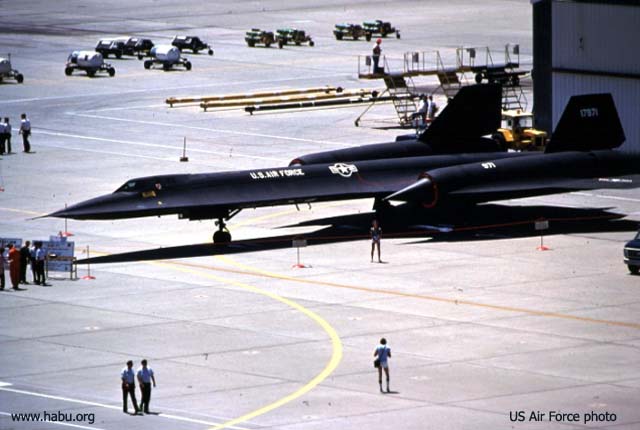
971 has the unique distinction of having gone through more legitimate tail number changes than any other blackbird. She started out in 1966 like every other SR-71 at that time, just plain white numbers on her rudders, and the 3-digit "buzz numbers" on her engine nacelles.
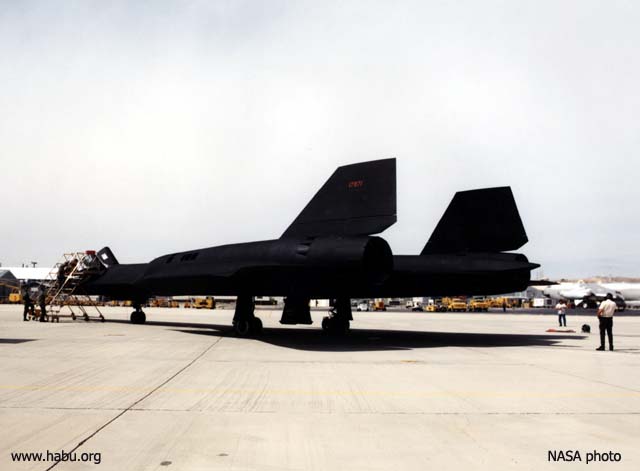
In 1983 the entire flying inventory (except the B-model trainer and 955) was repainted in a more subdued paint scheme, with all external markings, even emergency and warning messages, stenciled in flat red paint. Only the remote canopy jettison hatch, painted bright yellow with the word "RESCUE" stenciled in black, did not get changed to red.
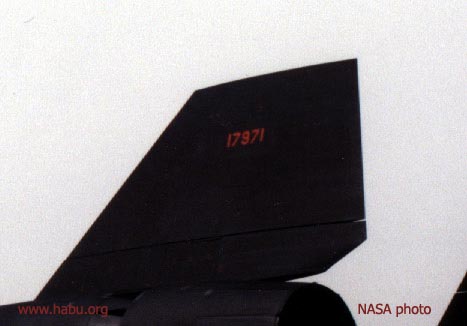
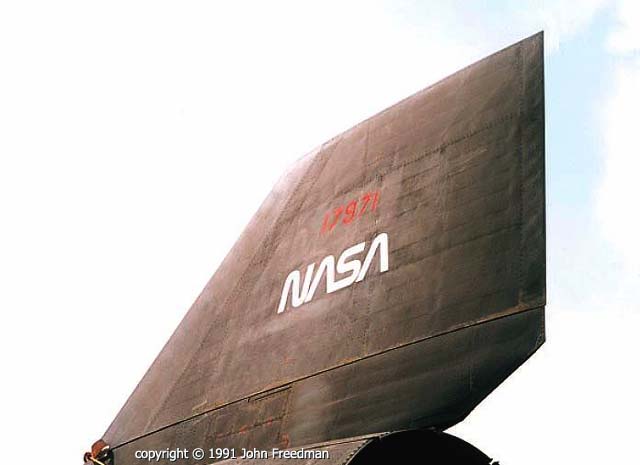
In 1990 the Program was cancelled and most SR-71s went to museums. 971 was lucky enough to be spared this fate along with 5 other airframes. 3 went into flyable storage, and 3 went to NASA for high-speed and high-altitude experiments. She still had her plain red numbers when she arrived, and was given a temporary white NASA "worm" until being redesignated with a new NASA fleet number.
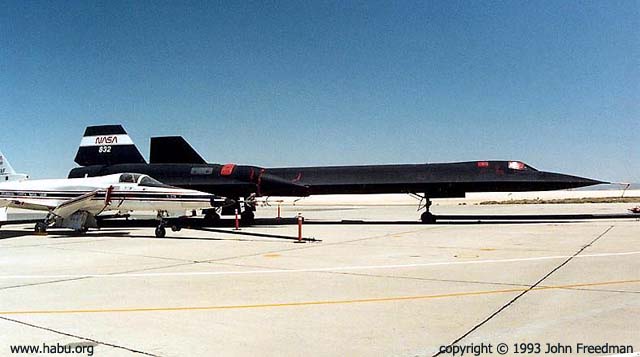
The 3 NASA birds were renumbered by NASA conventions; 956 became 831, 971 became 832, and 980 became 844, and was the work horse of the NASA family. In fact, the only time 971 ever flew with 832 painted on her rudders was when she was flown back to Lockheed's facility at Palmdale, a whopping 15 miles or so from Edwards, to be returned to the USAF inventory after Congress ordered the Program reactivated in 1995.
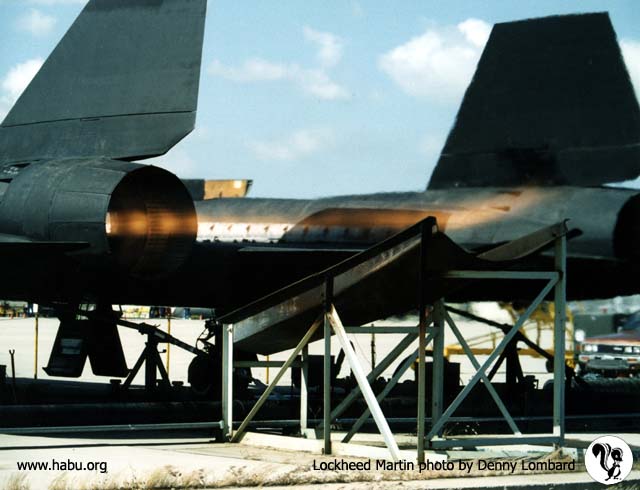
The NASA markings were removed while the Lockheed folks went over her, making sure she hadn't suffered during the 4 years she had been grounded. She had been so well kept that she needed only minimal work to return to flying status.
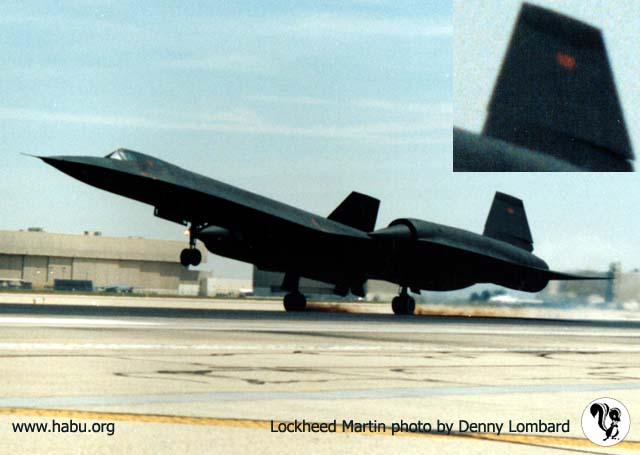
She took off on her Functional Check Flight on April 26, 1995, flown by Ed Schneider and Marta Bohn-Meyer, and carried the same red numbers she had in 1991.
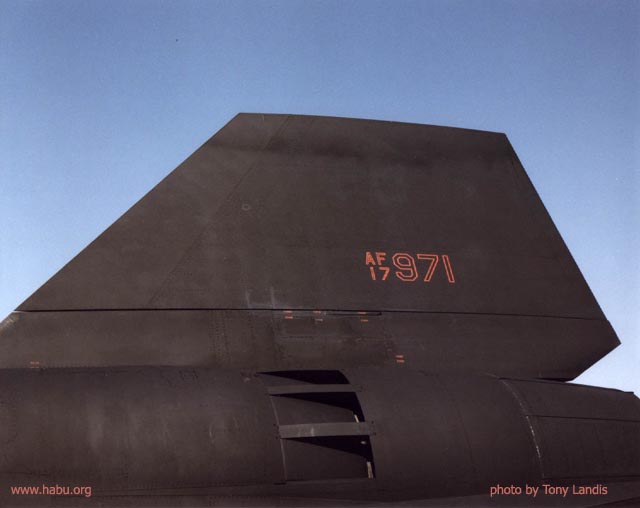
Time goes on and things change, including the way the Air Force paints their airplanes. All US Air Force aircraft now carry the last 2 digits of the fiscal year of order in smaller numbers, with the last 3 digits of the serial number in larger numerals. 967 received this and all subsequent markings changes along with 971.
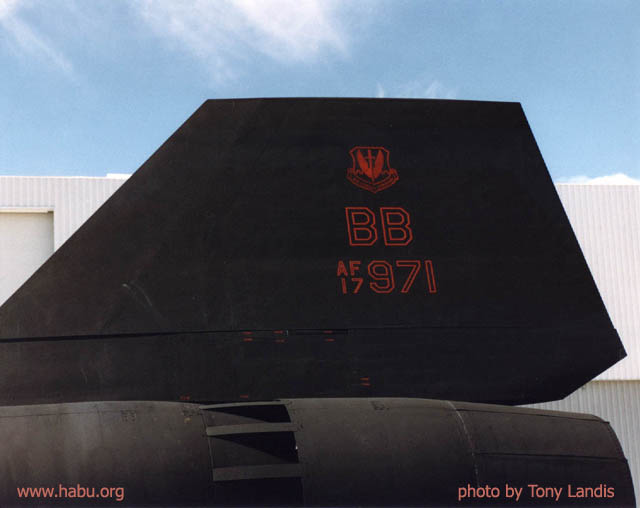
Next came the large 2-letter code identifying from which base the aircraft operates. "BB" represents "Beale Bandit," because even though the SR's operated from Edwards, they were technically a remote detachment, Det-2, from Beale Air Force Base (where the U-2 flies to this day). Above the BB is the shield for the Air Materials Command.
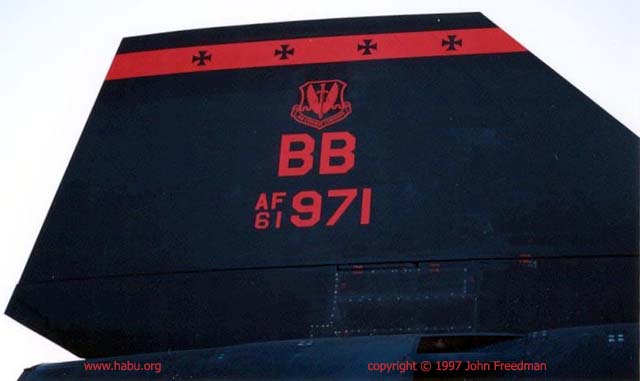
Still not satisfied, the 4-cross emblem of the 9th Strategic Reconnaisance Wing was applied to the top of both rudders. Also, someone realized that the tail number was still not up to new Air Force standards - under the current scheme, 17-971 would refer to an airplane ordered in 1917.
Air Force aircraft have serial numbers consisting of a 2-digit base number indicating the fiscal year the aircraft is ordered - NOT the first year it flew - and a sequence number identifying the aircraft within that fiscal year. Since the SR-71 was ordered by the Strategic Air Command in 1961, all SR-71s have serial numbers from 61-7950 thru 61-7981. Currently the serial numbers of USAF aircraft show the last 2 digits of the fiscal year, followed by the last 3 digits of the sequence number. Previously, only the last digit of the FY was used, followed by the entire sequence number. This is where the leading "1" came from, and why the A-12s, which were ordered in 1960, have tail numbers starting with "0" (60-6924 thru 60-6939). For a detailed explanation of US Military serial numbers, click on this link:
http://home.att.net/~jbaugher/usafserials.html
Nowadays the Cold War is over and planes are a lot more expensive than they used to be, and we don't buy as many as we once did. As a result, 5-digit serial numbers (2-digit fiscal year + 3-digit sequence number) have been standard for a while. Air Force regs now call for the fiscal year in small numbers, followed by the sequence number in larger numbers. The 7 got dropped, and the Beale Bandits were repainted as AF61-967 and AF61-971.
In November 2002, her outer wings and engine nacelles were removed by volunteers from the Evergreen Aviation Museum and taken to their new home in Oregon. The rest of the airframe is due to be delivered to the museum in early May 2003.
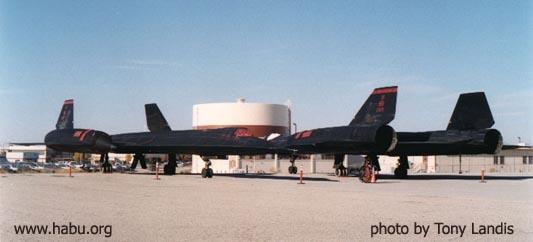
17972

photo by Jim Fitzgerald courtesy of Leland Haynes

The above photo was taken at the Farnborough Airshow in 1974, after she set the transatlantic speed record of 1:54:56. For more info on this record-breaking trip, and for 32 other terrific photos of the event, visit Leland Haynes' page.
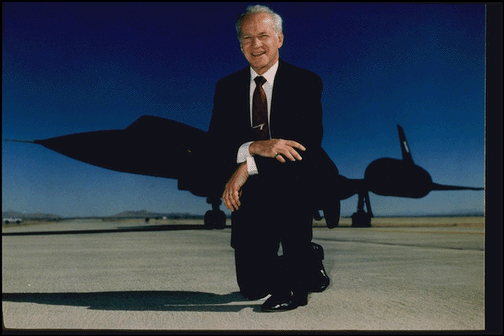
The late Ben Rich poses in front of 972 at Lockheed's Palmdale facility
photo by Denny Lombard, courtesy Lockheed Martin
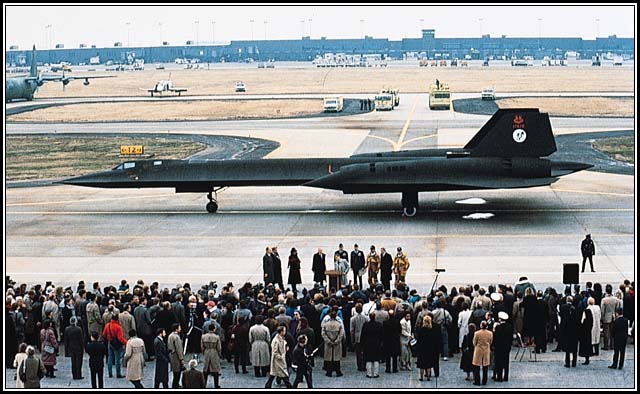
After setting a transcontinental record of 1:08:17 with pilot Col. Ed Yeilding and RSO Col. J.T. Vida, #972 was donated to the Smithsonian Institution at this post-flight ceremony at Dulles International Airport on Tuesday, March 6, 1990. She is now being housed in a temporary hangar while the Dulles Annex is being built.
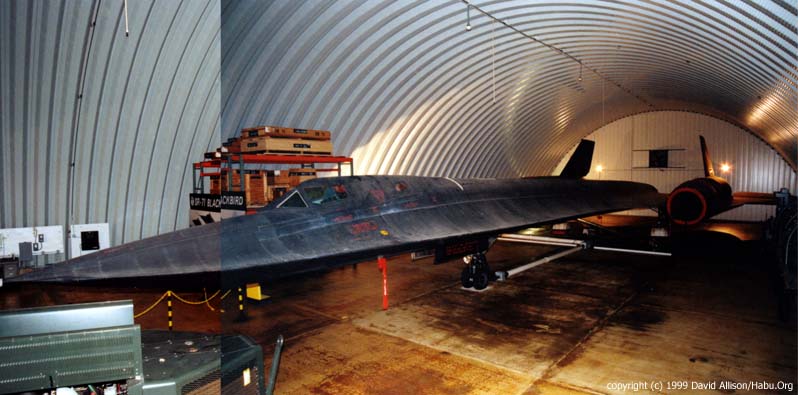
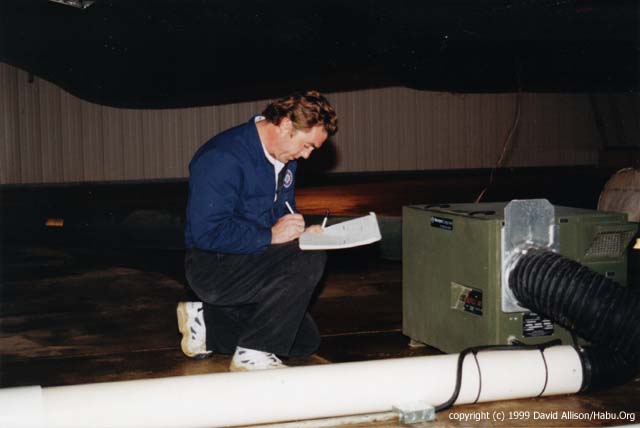
Ed Marshall of the National Air & Space Museum logs the levels on the dehumidifier attached to 972. The humidity is adjusted 2 to 4 times a week to ensure the aircraft is preserved in the best possible condition. Dedication like this from Ed and others like him will allow our grandchildren to marvel at this engineering milestone just like we do today.
17973
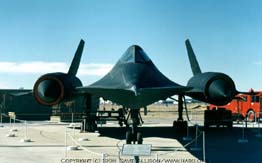
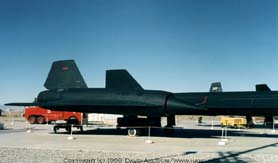
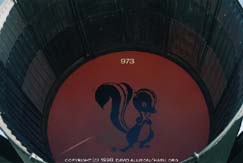
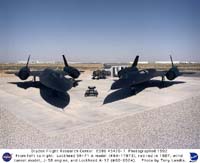
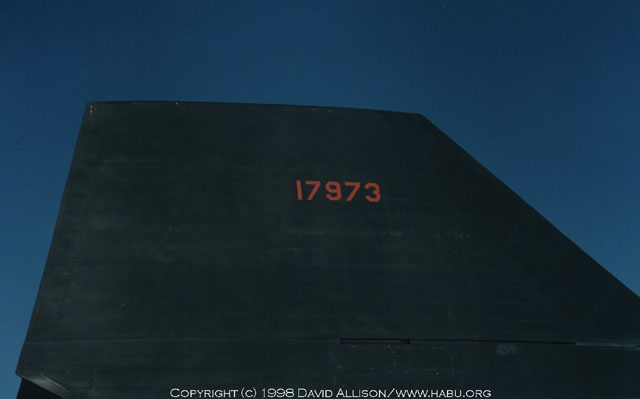
SR-71 #17973 and A-12 #06924 are on display together at Blackbird Airpark in Palmdale, California
61-7974
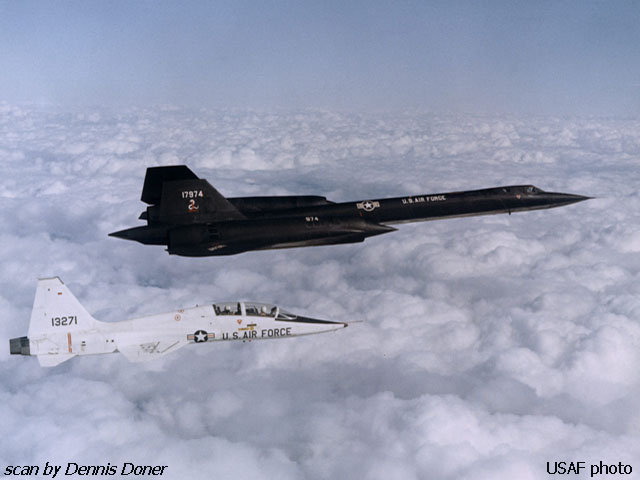
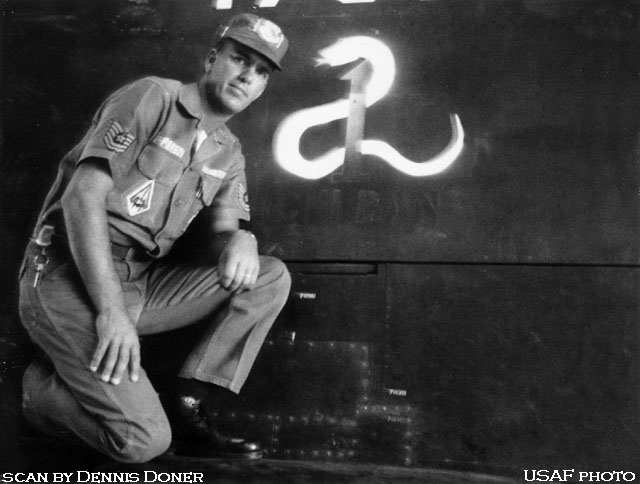
Crew Chief Don Person, shown here just after putting the finishing touches on 974's new tail art (the famous "Ichi Ban" design).
974 was one of the first 3 SR-71s deployed to Kadena AFB in 1968, and had flown the most "habu" missions (operational sorties) of those 3 at the end of their first rotation. She was given this paint scheme to show the people back at Beale just who the #1 blackbird was ("Ichi Ban" meaning number one in the local language). The large 1 with the habu snake wrapped around it would later be used on other airframes as well, but "Ichi Ban" was always associated with 974 only.
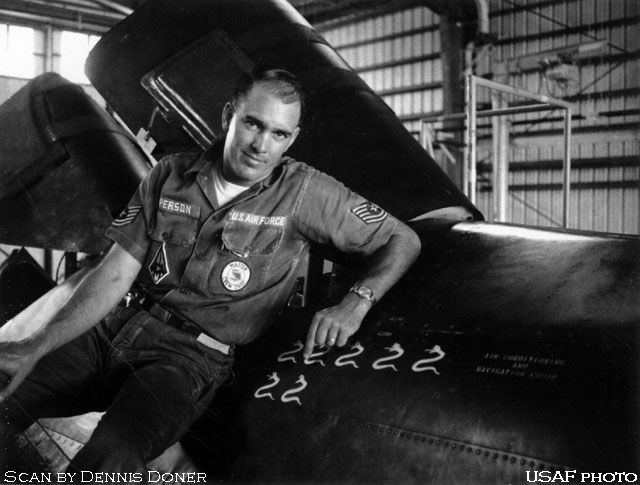
Below he shows off the newest "habu" representing an operational sortie. Crews who accumulated 5 habus were considered aces.
photos via Don Person, scans by Dennis Doner
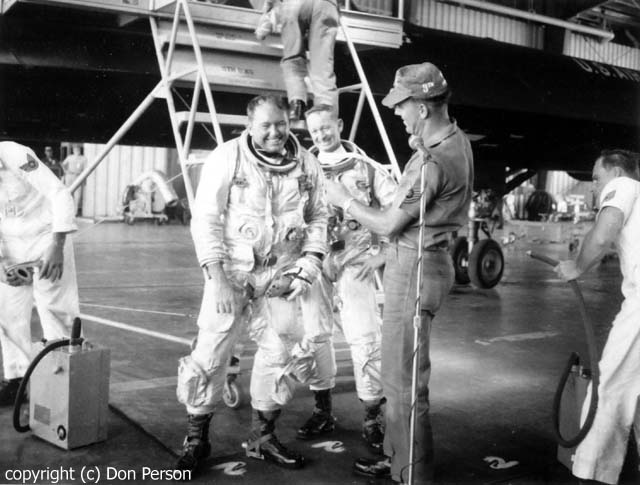
After a crew completed their first operational sortie, it was their crew chief's duty to cut their ties and hang them on the ceremonial staff. Here Don Person performs the ritual on George Bull (above) and Red McNeer (below) on September 8, 1968, after bringing 974 back from their first habu mission. John Stone has published Bill Gornick's memoir on the birth of this tradition; click here to read the full story.
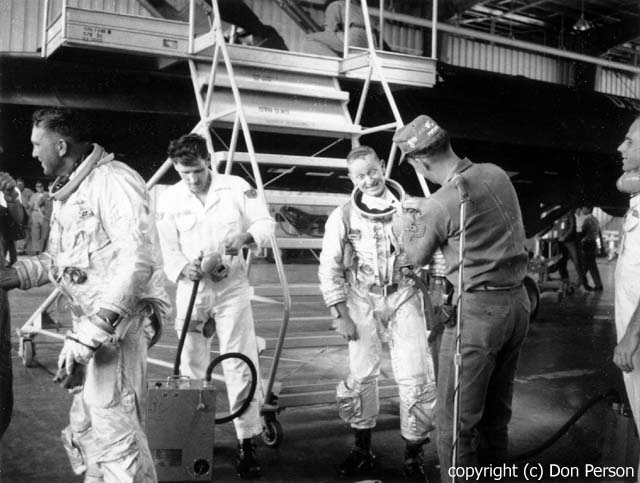
974 was lost on April 21, 1989. After taking off from Kadena AFB, her right engine exploded, taking several hydraulic lines with it and crippling the flight controls. Her crew attempted to abort to a base in the Phillipines, but as RSO Lt.Col. Blair Bozek put it, "we could have made it on one engine with no problem, but with no hydraulics and no flight controls, the aircraft became a derelict and we were forced to eject. Dan [Lt.Col. Dan House] bailed out first; I wanted to make sure I had good ejection position and had everything aligned properly, and ejected about 3 seconds after him." Both pilot and RSO ejected safely. This was the first SR-71 accident in 18 years - the longest accident-free streak of any USAF aircraft ever.
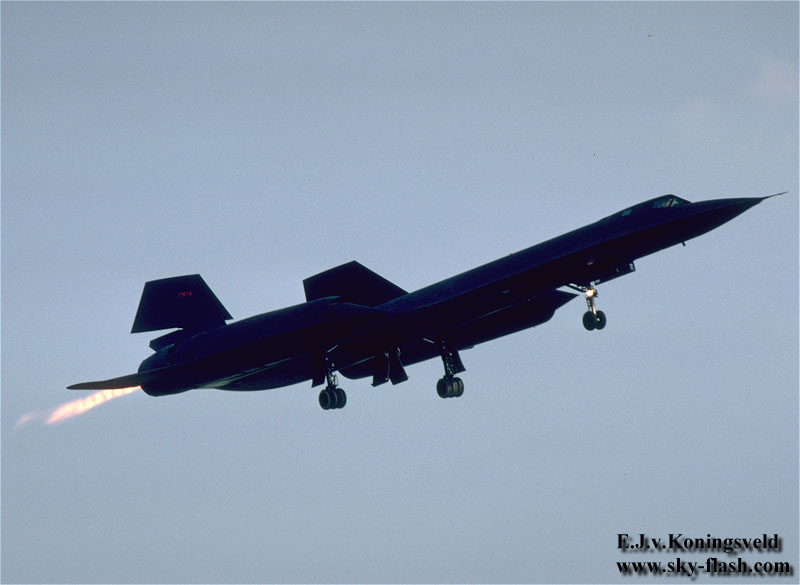
1985 photo from Mildenhall Air Show, courtesy E.J. van Koningsveld
She was the last blackbird to be lost, and was one of best. Ask any habu which one was his favorite aircraft, and you'll hear 974 mentioned almost every time.
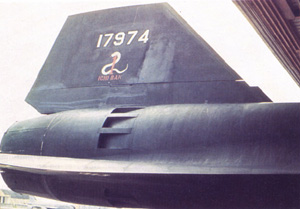
17975
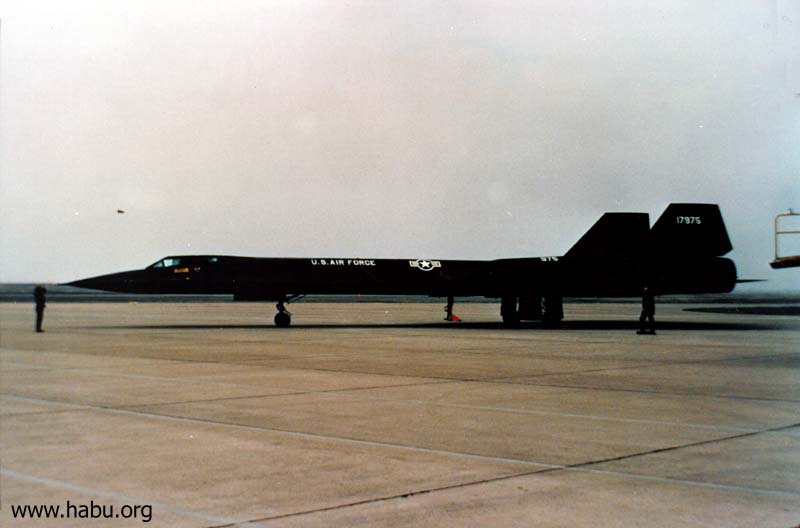
975 prepares for a launch from Beale AFB, c. 1980.
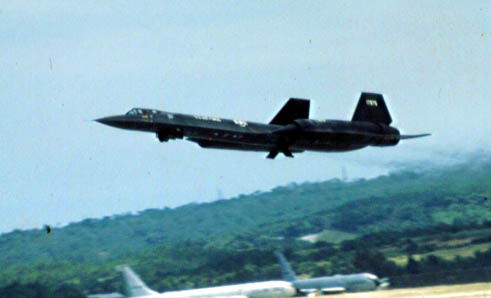
975 in a steep takeoff from Kadena AFB, Spring 1972 - original photo by Dwight Koslowski
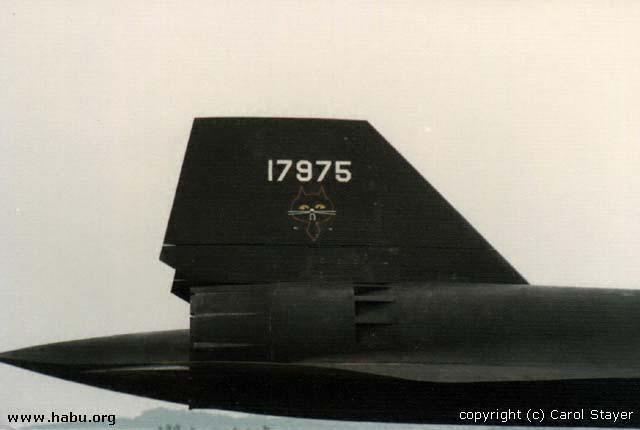
The "Black Cat Squadron" insignia of the U-2 made its way onto 975's tail at one time - photo via Carol Stayer
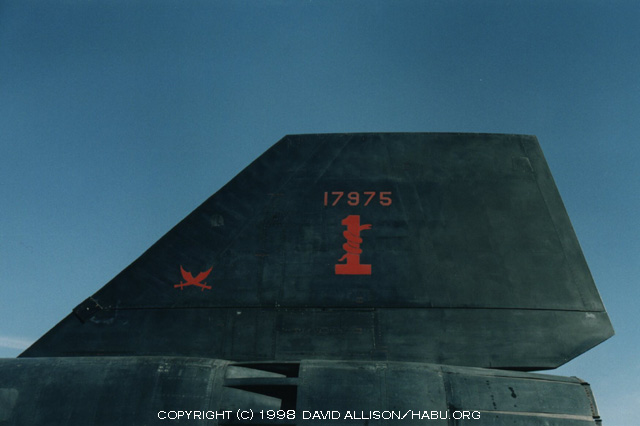
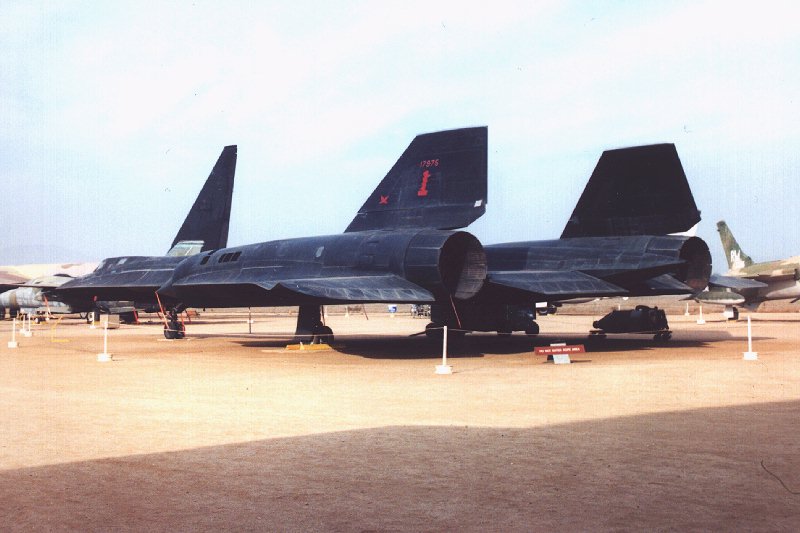
photo courtesy of Paul's US Military & AMARC Home Page
975 is on display at the March Field Museum in Riverside, California, where she was flown on Wednesday, February 28, 1990 by Terry Pappas and John Manzi.
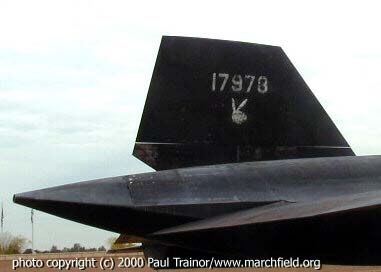
Click on the photo above (courtesy of Paul Trainor) to find out why 975 now sports 2 tail numbers...
61-7976
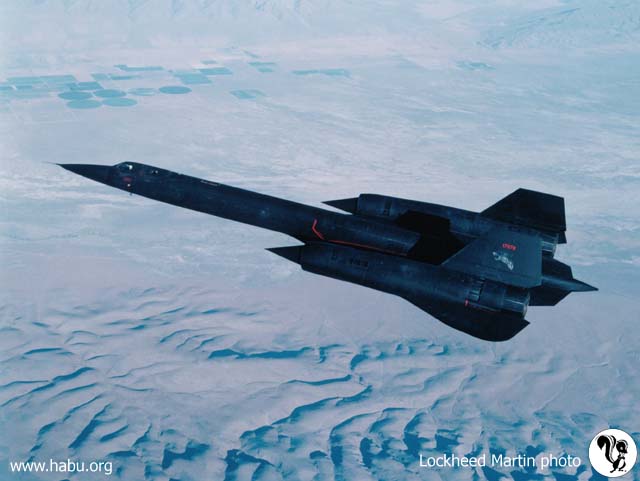
Lockheed photo by Eric Schulzinger
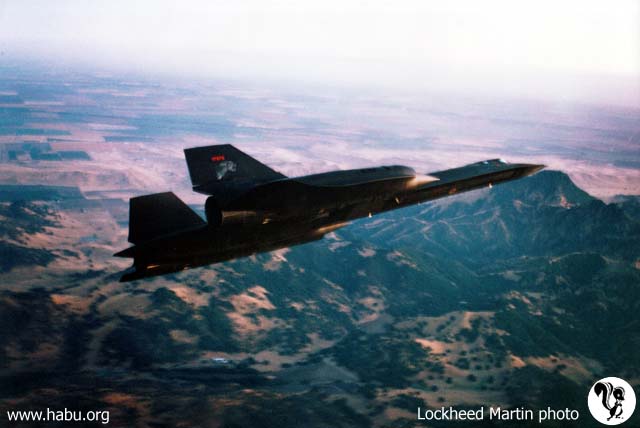
976 was the first SR-71 to be flown on an operational mission; Ed Payne and Jerry O'Malley flew her over Viet Nam on Thursday, March 21, 1968. 22 years later she became the last blackbird to be flown to a museum, when Don Watkins and Bob Fowlkes flew her to the Air Force Museum at Wright-Patterson AFB in Dayton, Ohio, on Wednesday, March 27, 1990.
976 is on permanent display at the Air Force Museum at Wright-Patterson AFB in Ohio, where they also have a YF-12A (60-6935).
According to John Stone, this airframe is the best preserved of all museum pieces for several reasons:
She has been indoors since the day she landed at the museum;
Both cockpits are 100% original and complete (minus the defensive and recce gear that were removed at Beale prior to delivery);
The only things removed from the airframe after arriving at the museum were fuel and fluids; even the engines were left inside the nacelles.
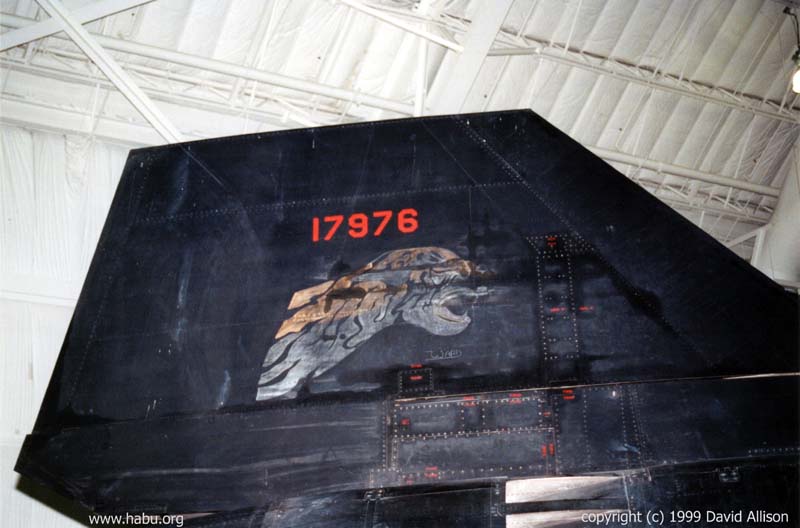
closeup of cheetah art on 976's right rudder
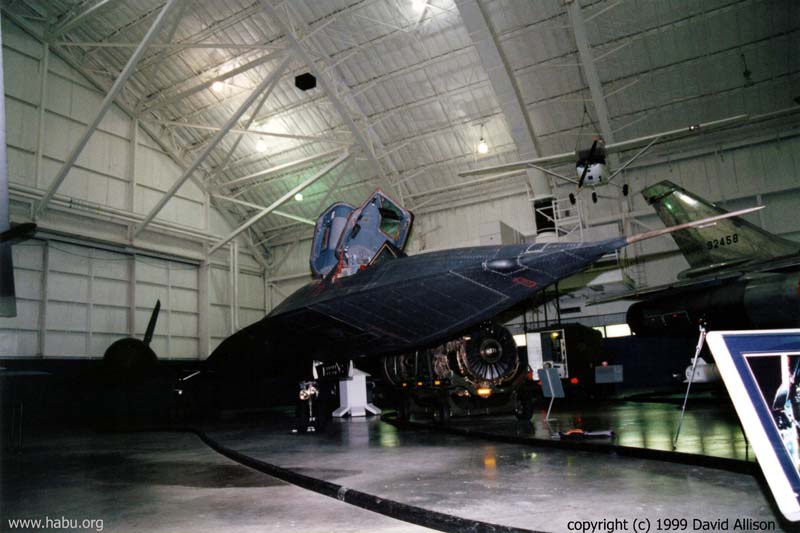
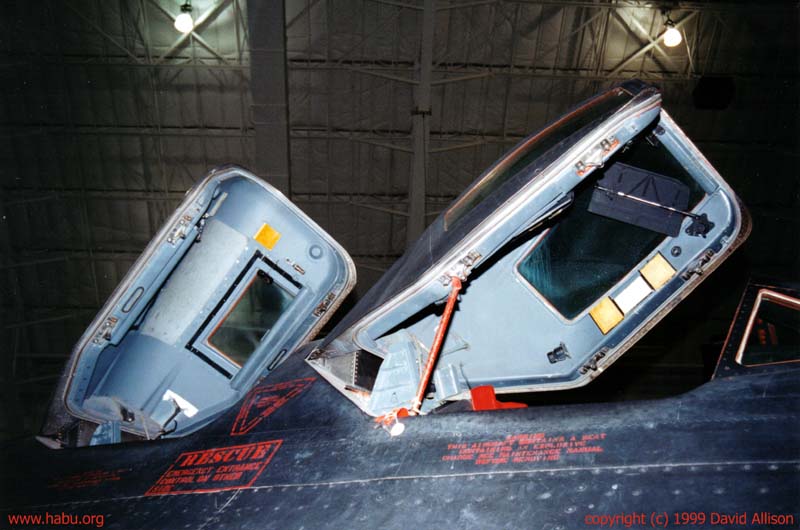
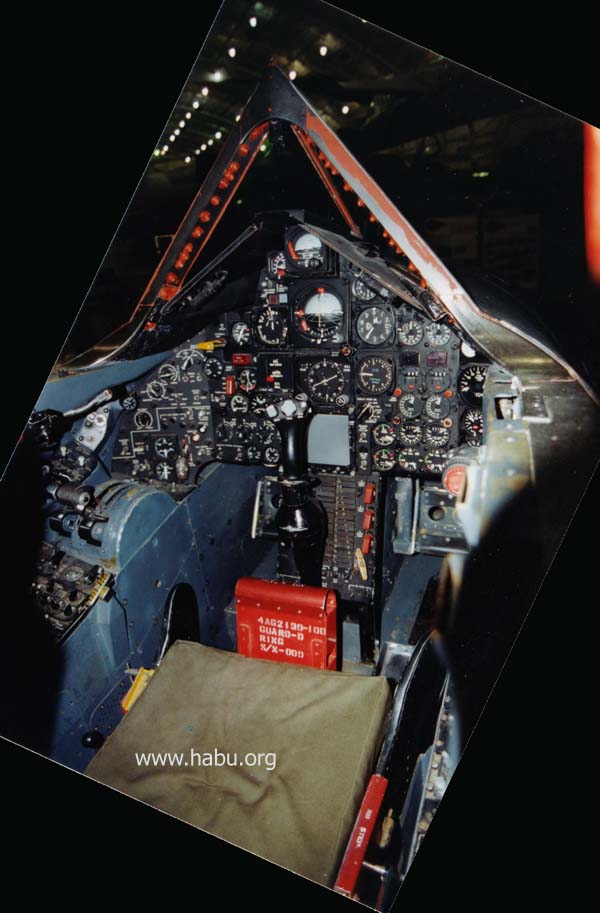
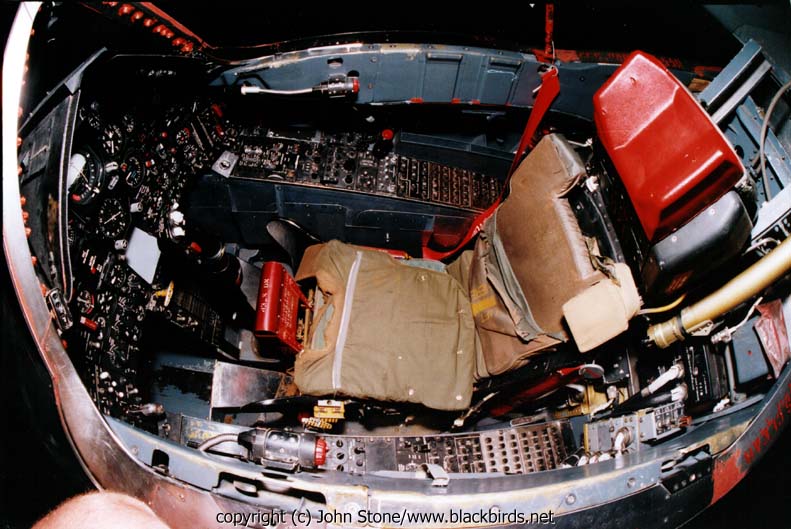
photo courtesy of John Stone
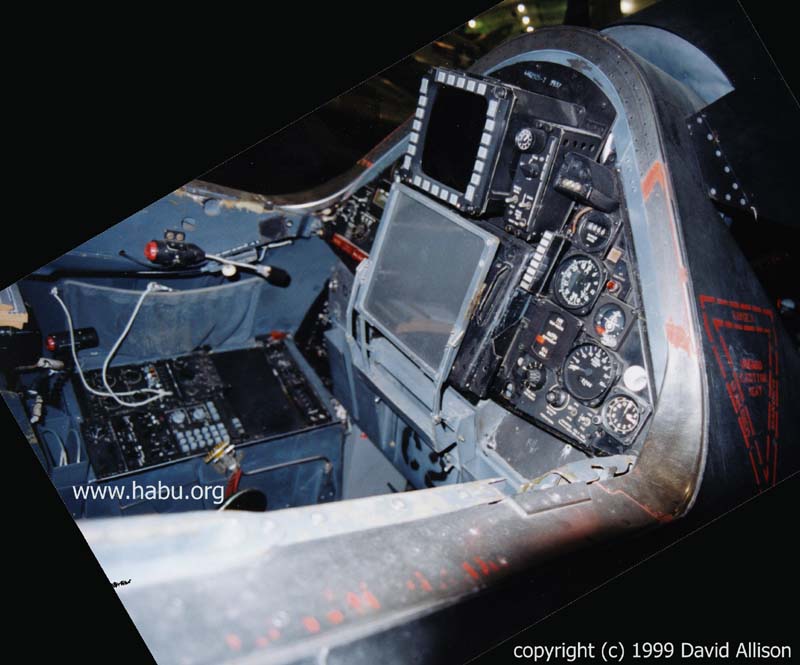
61-7977
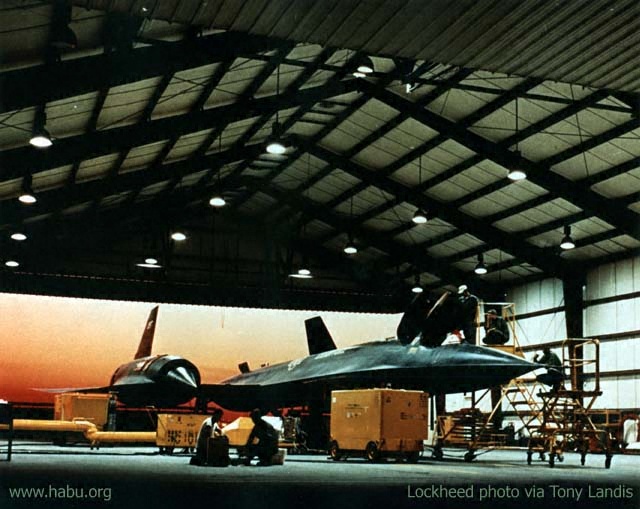
Lockheed photo courtesy of Tony Landis
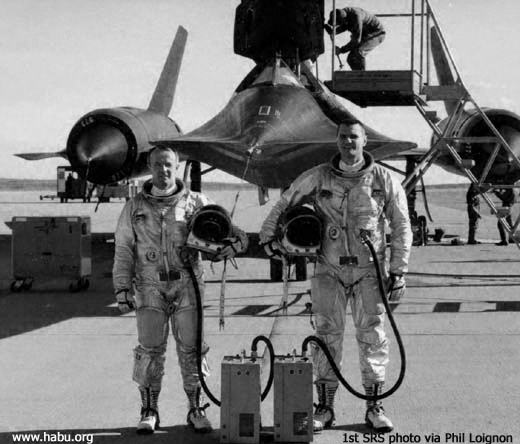
Pat Halloran and Mort Jarvis pose with 977 - 1st SRS photo via Phil Loignon

977 was lost on Thursday, October 10, 1968. Both pilot and RSO escaped harm, but in separate ways. Don Person recalls:
".... I was now reassigned to quality control as an inspector. My task that morning was to observe the launch of 977. [The] aircraft had just taken the active runway and was in take-off roll when we observed the left brake come apart and pieces punctured the inner wing fuel cells. A massive fire started; drag chutes were deployed and immediately burnt up. 977 proceded down the runway, all tires now flat. As 977 was approaching the end of the runway the RSO [Maj. James Kogler] ejected; arrestment cable caught the intake lips as the tires were flat and too low to catch the landing gear trunnions. As all this was happening the launch crew including myself were screaming down the taxiway following the aircraft. We arrived several minutes after it stopped and assisted the pilot [Maj. Abe Kardong] away from the crash area...."
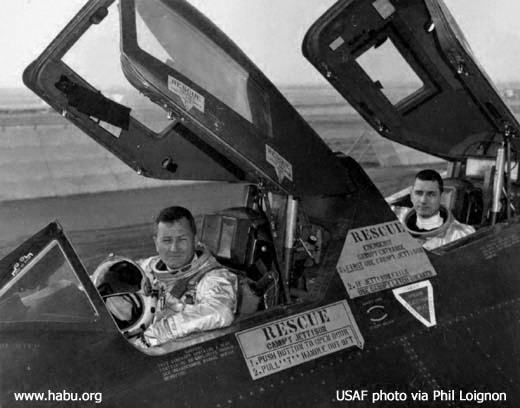
Abe Kardong and Jim Kogler in what may or may not be 977 - USAF photo via Phil Loignon
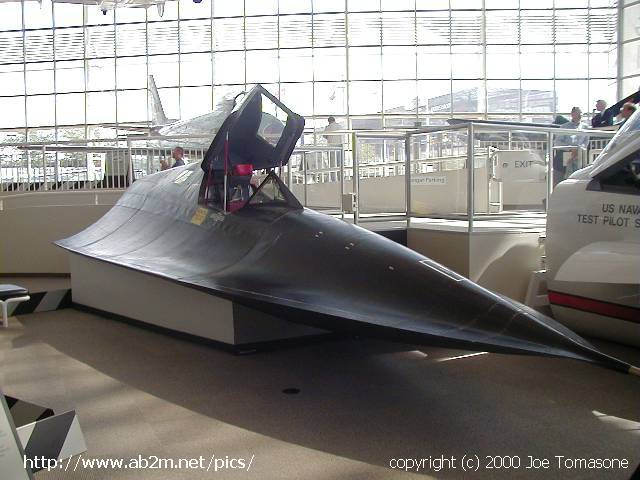
photo courtesy of Joe Tomasone
977's cockpit has since been recovered and restored, and is now on display at Boeing Field's Museum of Flight in Seattle, Washington, next to 940.
61-7978
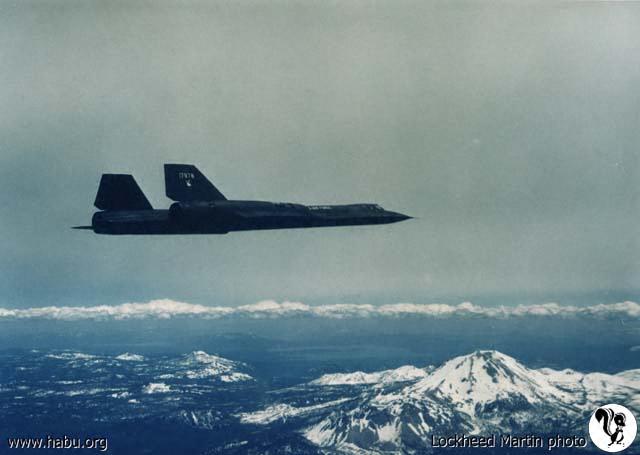
978 was one of only four Blackbirds to carry an individual nickname (she was also known as the "Rapid Rabbit" because of the Playboy logo she sported on both rudders throughout most of her career).
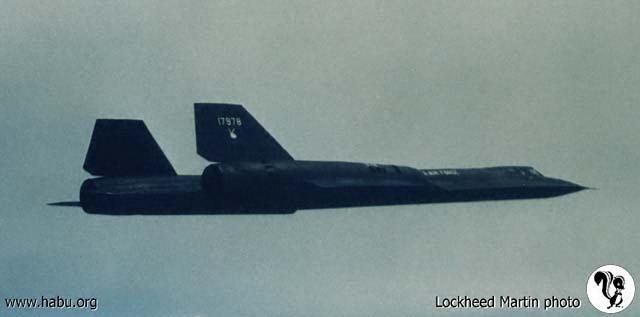
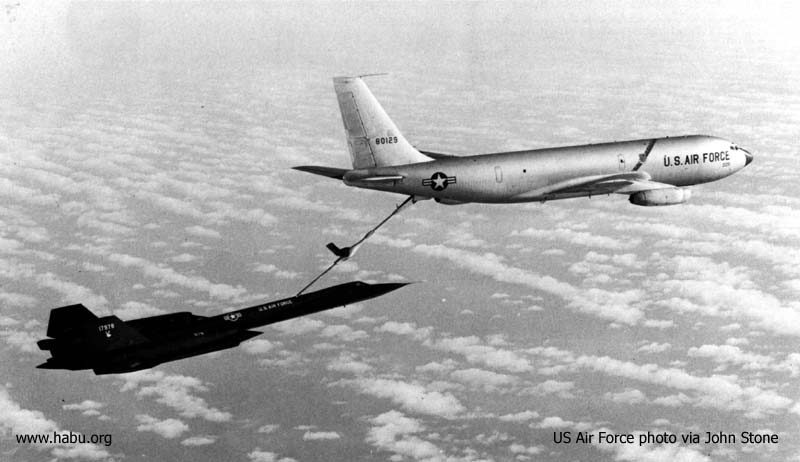
The "Rapid Rabbit" refuelling from a KC-135Q tanker -USAF photo via John Stone
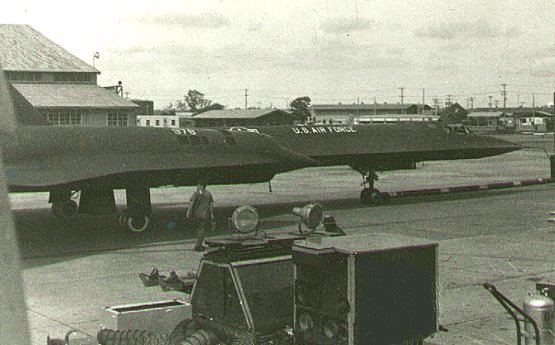
978 on the ramp at Udorn AFB, where Sgt. Jim Geddes took this photo after Tom Pugh and Ron Rice made a forced landing on Monday, May 15, 1972, due to double generator failure.

She was lost on Thursday, July 20, 1972, while attempting to land at Kadena AFB during extreme crosswinds. The braking parachute failed to slow the aircraft, forcing pilot Denny Bush to turn the landing attempt into a touch-and-go and try for a second go-round. He released the chute, took off, and attempted another landing.
Normally the braking chute is used for all landings to assist in slowing the aircraft, although under good conditions the brakes can do the job themselves without the assist. Having an extremely long runway (or dry lakebed like at Edwards AFB) for such landings doesn't hurt either.
However, the chute becomes extremely important during high-speed landings -- even with empty fuel tanks, the blackbird still weighs more than 2 fully-loaded dump trucks; she has almost no drag due to her low profile; and because of the high temperature imparted during flight, her brakes lose efficiency and have difficulty stopping her completely when landing at high speeds (which are necessary when landing with high crosswinds).
In other words, she was doomed.
On the second attempt, Bush could not slow the aircraft down in time and she ran off the end of the runway, breaking the main landing gear and damaging more than just the paint on her underside. He and his RSO Jimmy Fagg escaped serious injury, but 978 was a total loss. She was buried under a berm at the end of the runway, which is called "Habu Mountain" or "Habu Hill" depending on who you ask.

The next Blackbird accident would not occur for another 18 years (see #974). Part of the Rapid Rabbit lives on in 975's left rudder.
61-7979
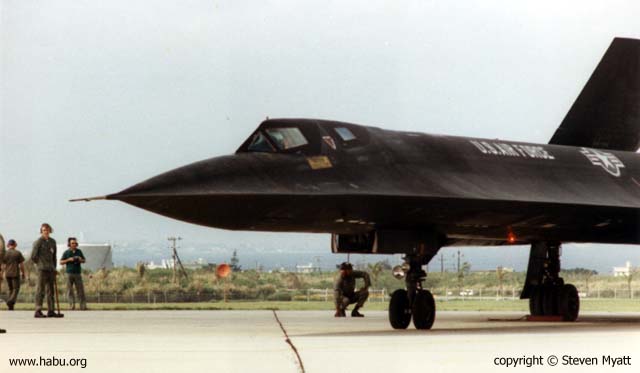
all images on this page courtesy of Steven Myatt
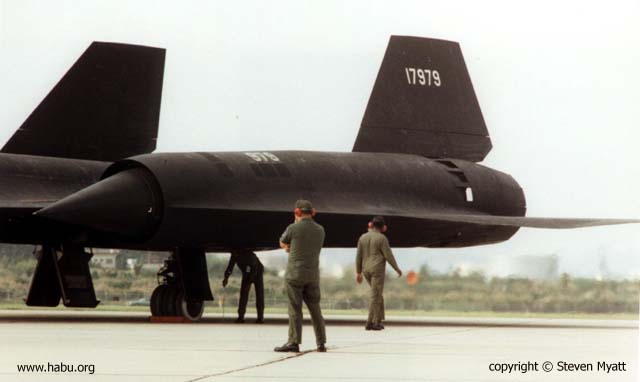
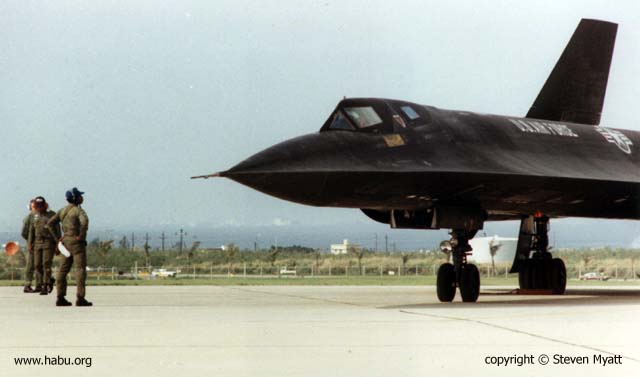
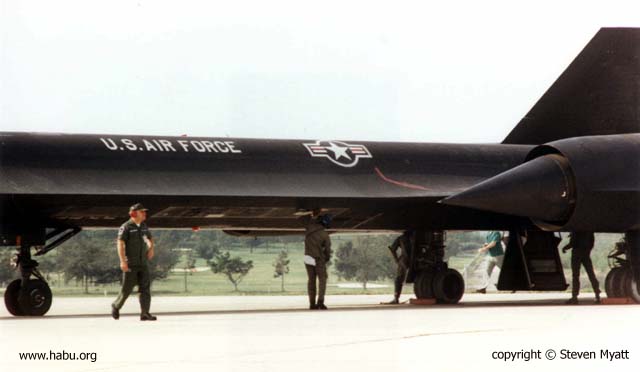
"I was an Airman working in the 9th AMS photo shop from 1975-1977. In the spring of '77 I rode the Habu hauler in to work with my 35mm camera (in its case -- we weren't allowed to photograph the shop areas for security reasons, so I wanted the casual observer to see that the camera was "not open for business"). Anyway, in the morning I went out on the launch truck to take pictures of 979 going out on a mission to Korea. We had loaded 979 with two OOC and one TROC cameras. 979 was fitted with a SLR nose on this day. The plane took off fine but aborted the mission after about 1.5 hours. I was out taking pictures of the aircraft and trying to stay out of the way. All these color photographs came from this launch." - Steven Myatt
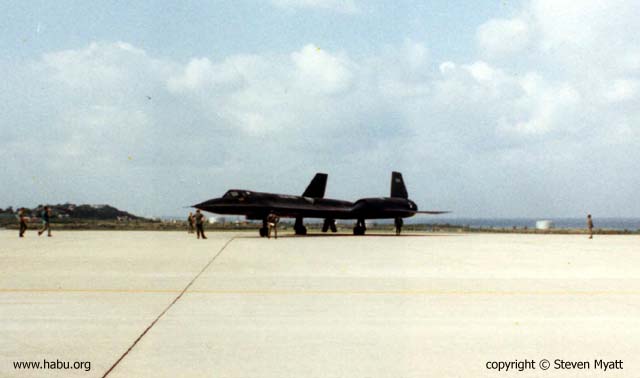
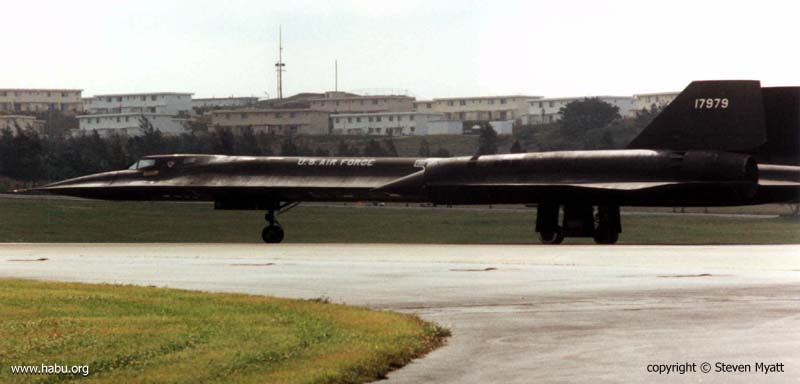
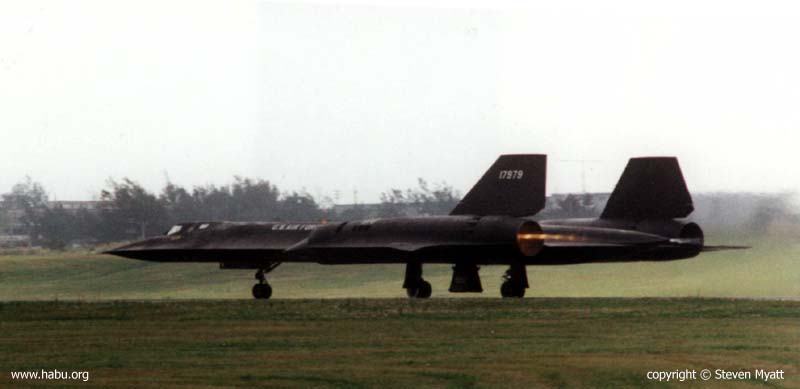
all images on this page courtesy of Steven Myatt
"These pictures tell the story of a typical Habu launch: the launch truck follows the blackbird to the end of the runway, systems are checked, the engines are run-up and checked, the chocks are finally removed, the plane takes off." - Steven Myatt
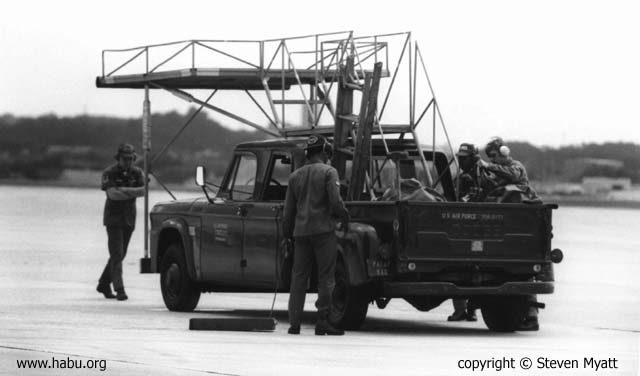
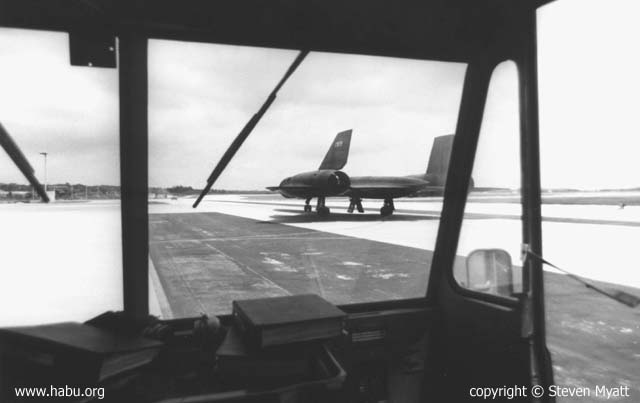
In this photo I was riding in the launch truck (a Dodge step-van) as it was following 979 to the end of the runway. I took a picture from inside the cab as both the van and the blackbird were rolling along at 35mph. Really cool shot. - Steven Myatt
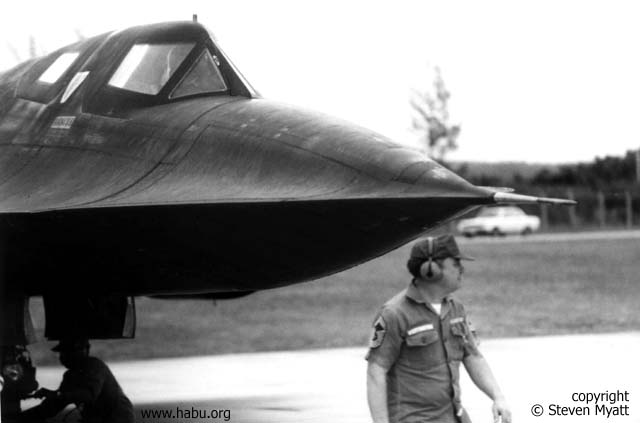
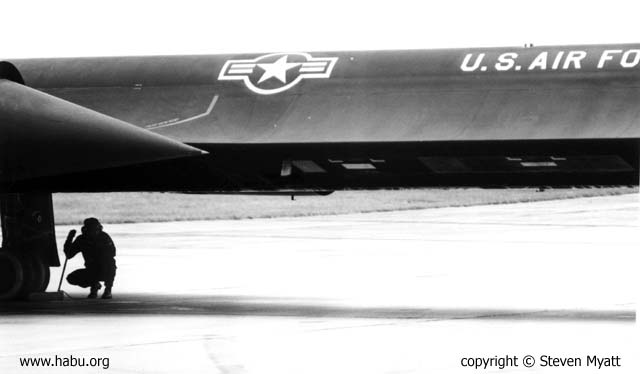
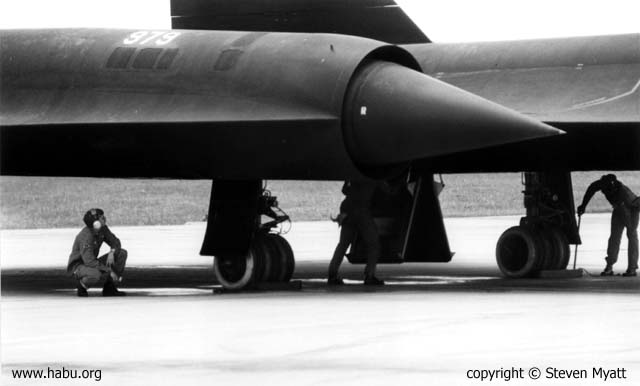
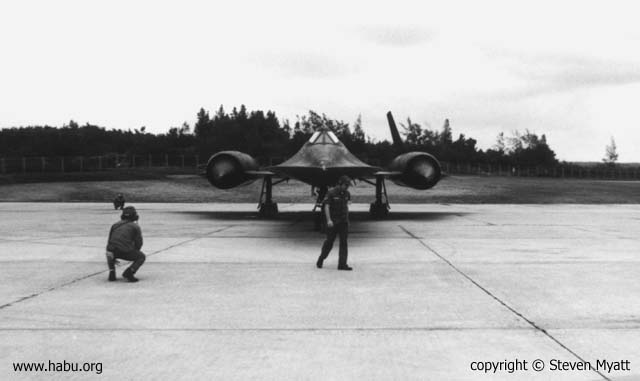
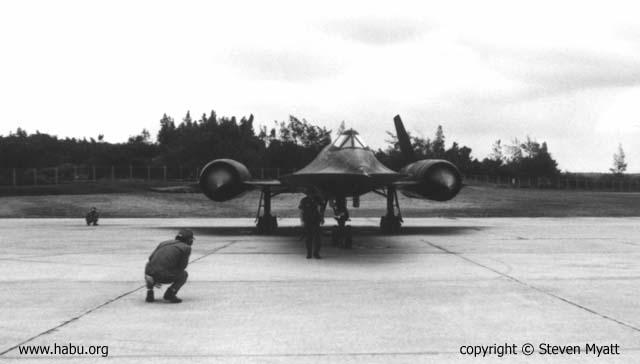
all images on this page courtesy of Steven Myatt
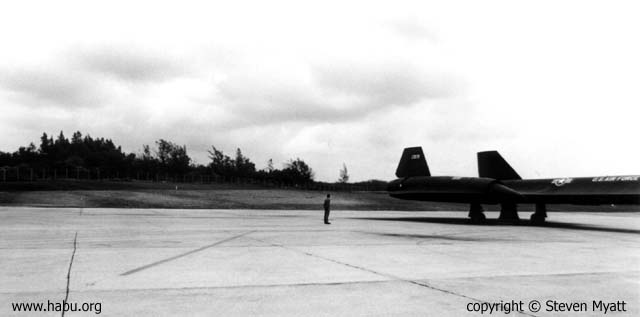
"979 going through final check-out at the end of the runway at Kadena. The interesting thing about this picture is that the engines are being run-up while the brakes are locked. There was a road right behind the end of the runway and the blast from 979 would have been felt by anything on the road (traffic is halted at moments like this). Notice in the picture that the grass behind the aircraft is being flattened and the trees bent over as the engines are spun up (see detail below). The picture was framed to catch the rear of 979 and the dancing folliage." - Steven Myatt
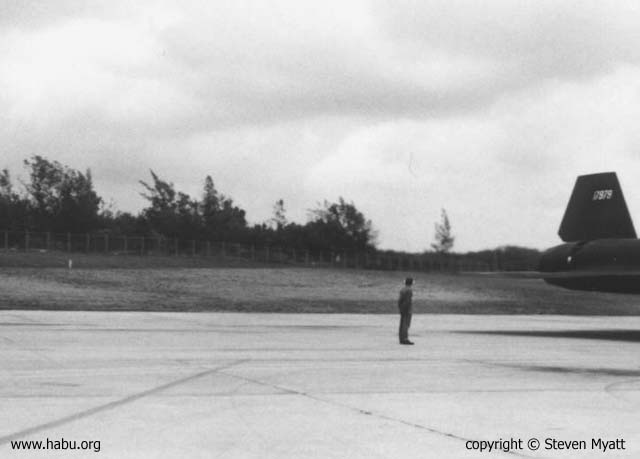
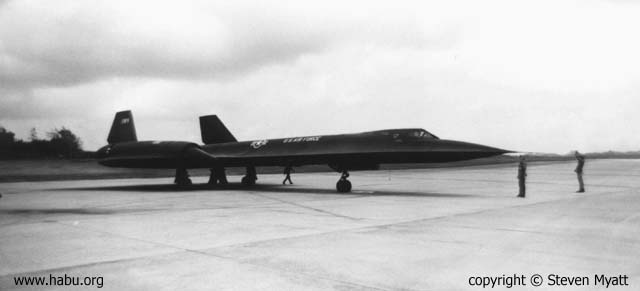
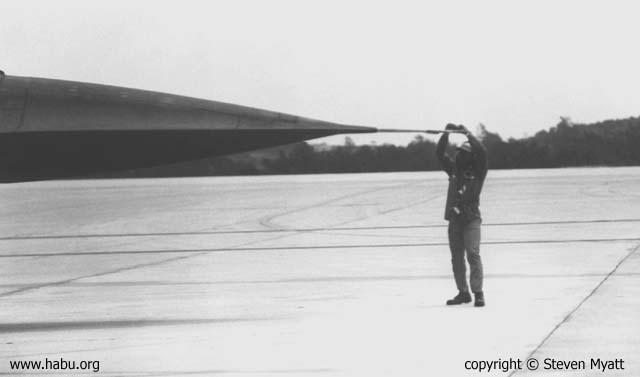
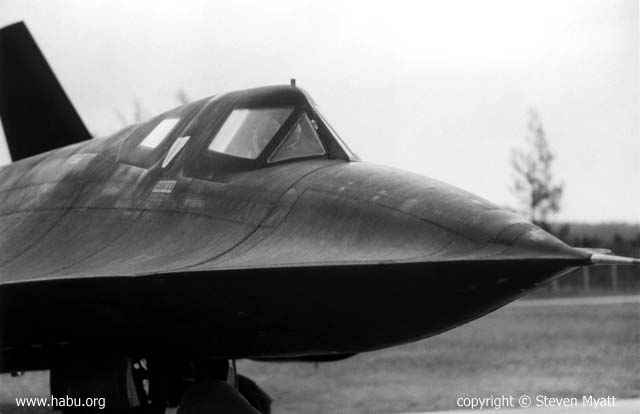
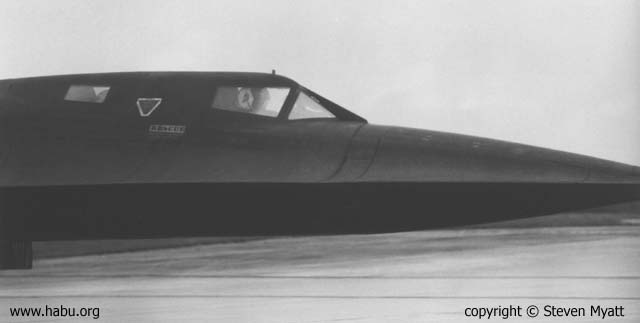
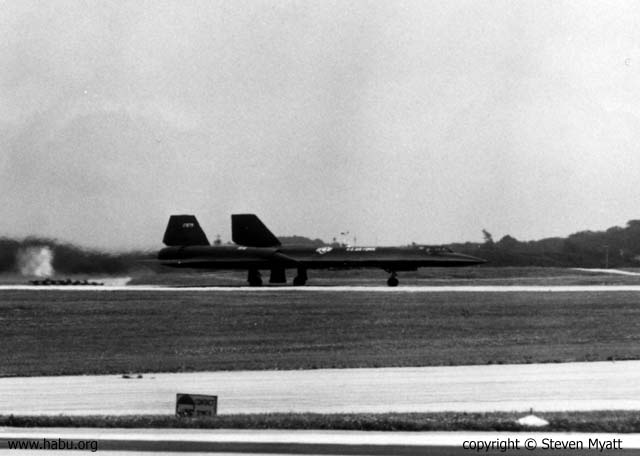
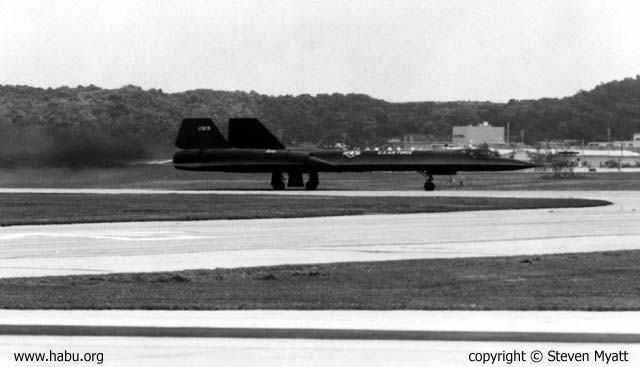
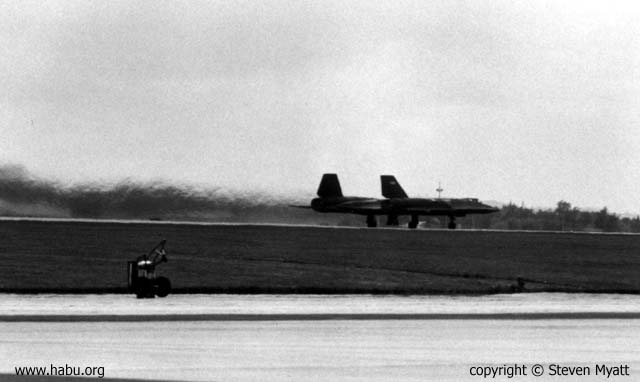

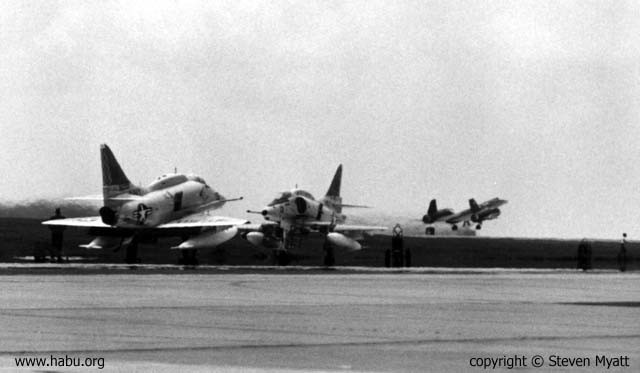

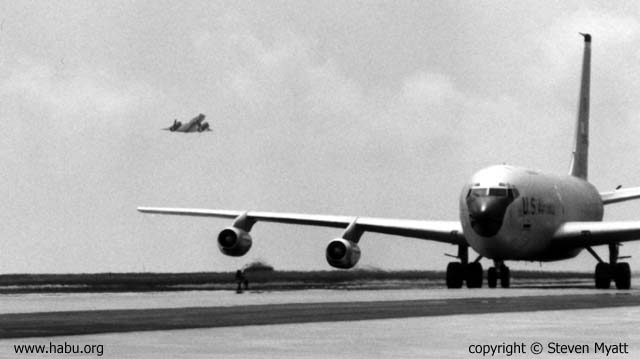
--------------------------------------------------------------------------------
"The years I worked on the blackbird were the best years of my life." - Steven Myatt
This photo of 979 bearing the 9th SRW shield is very similar to one taken by Charles Meyer in February 1981
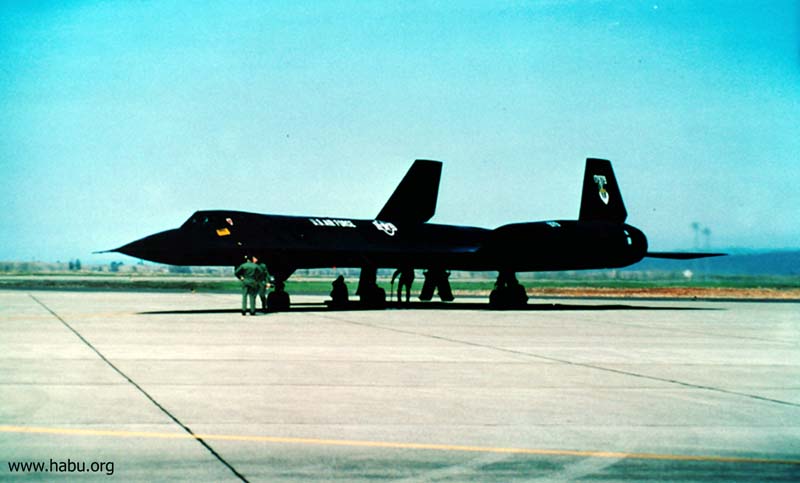
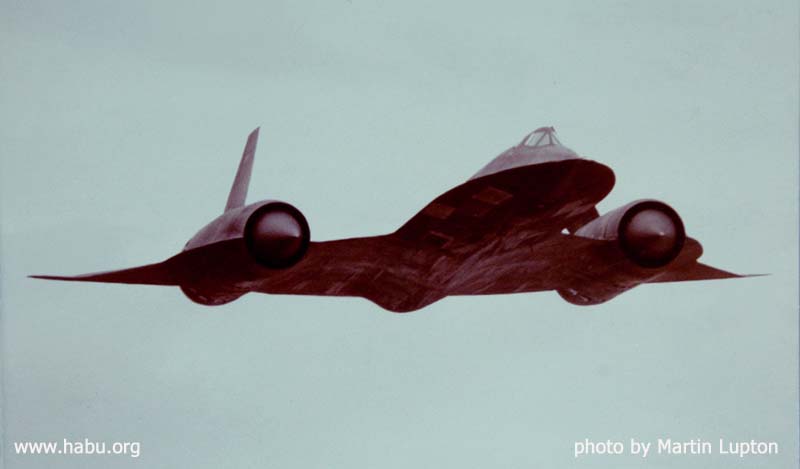
979 on the departure day following the International Air Tattoo at RAF Fairford in July 1985. According to Martin Lupton, who took this photo, this was during a very impressive and brief display after departure.
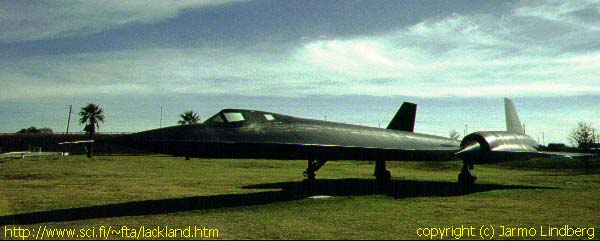
979 is on display at the USAF History and Traditions Museum at Lackland Air Force Base near San Antonio, Texas. She was flown there on Tuesday, March 6, 1990 (the same day as 972's record-breaking run) by Steve Grzebiniak and Stanley Gudmundson. 979 retired with 3321.7 hours of flight time - the fourth highest of all blackbirds.
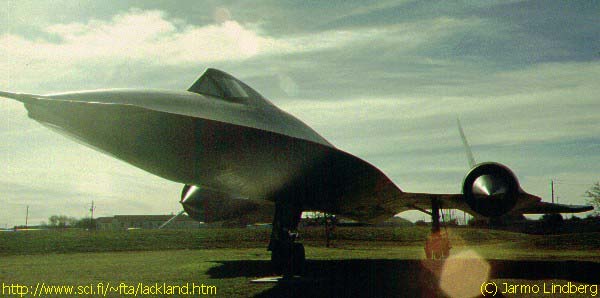
photos courtesy Jarmo Lindberg

October 1991 closeup of 979's tail art, showing where the original black paint is starting
to peek through the high-gloss paint job she was given after landing at Lackland
- photo by John Freedman

61-7980
(NASA844)
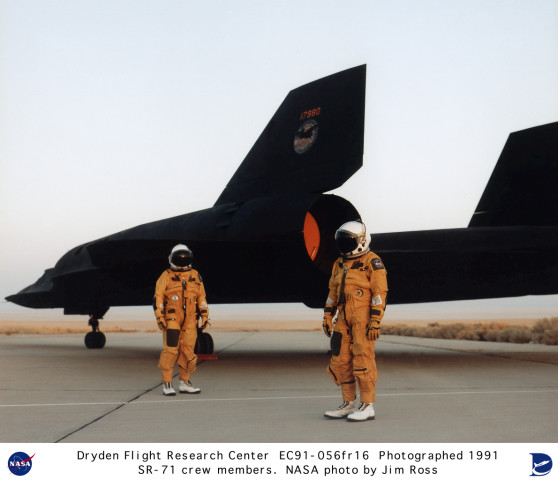
Since February 15, 1990, #980 has been flying for NASA doing high-speed research, although now she is known as #844. She had been on loan from the Air Force, but in early July 1999, the US Air Force transferred ownership of all four flyable SR-71s to NASA (click here for a NASA press release).
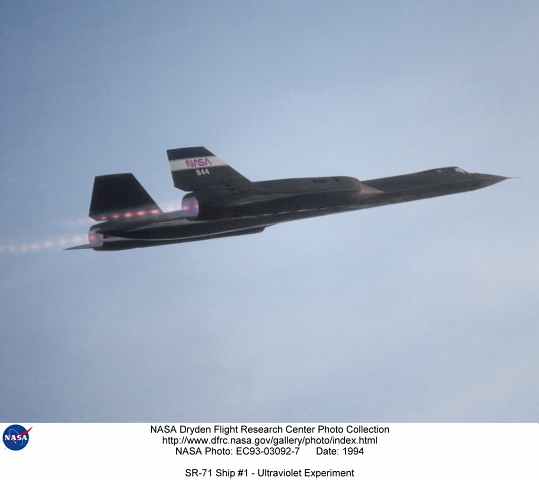
More photos are available at NASA's web site and our NASA/Dryden Mirror Page.
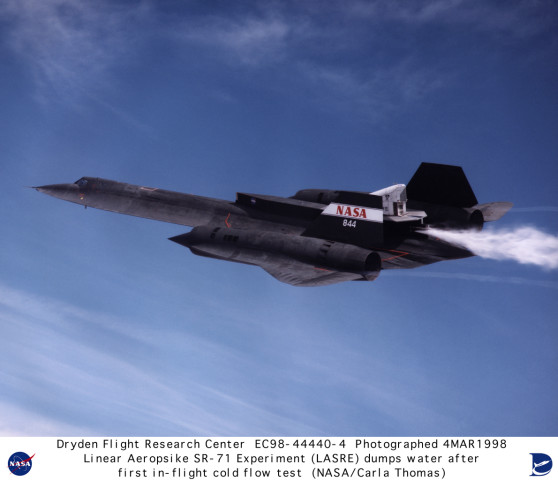
61-7981
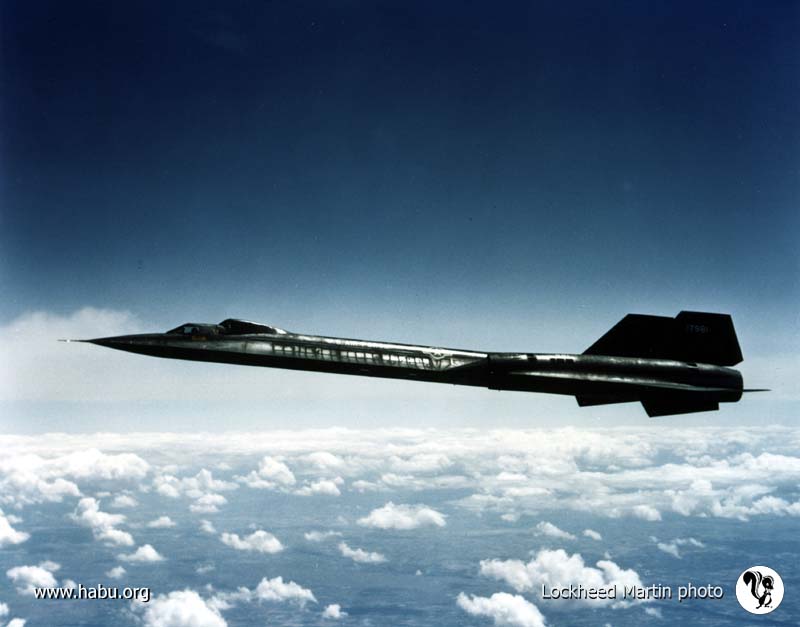
981 was the only SR-71C built. Made from parts of the static test model SR-71 and the aft section of YF-12A #06934, she was built to replace SR-71B #957. She first flew on March 14, 1969.
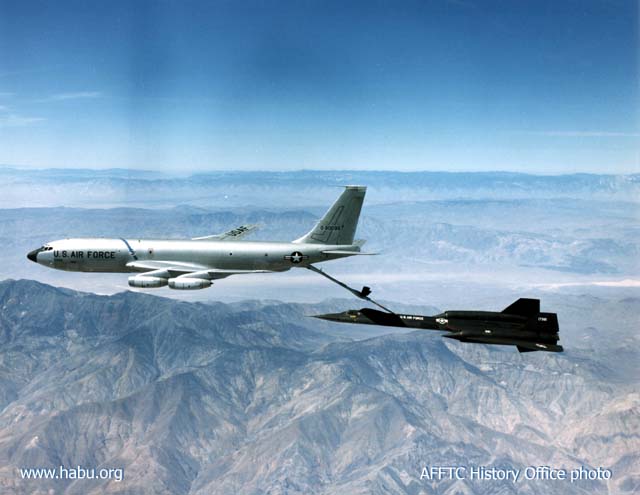
AFFTC History Office photo by Gene Furnish via Tony Landis
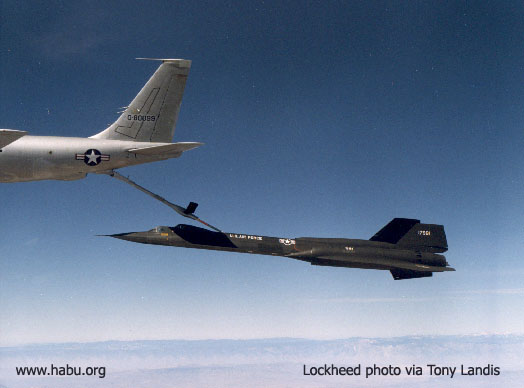
The photo above and below are of MGen. Otis Moore's VIP checkride in 981 on December 10, 1975, just 4 months before 981's final flight. - Lockheed photo by Gene Furnish via Tony Landis
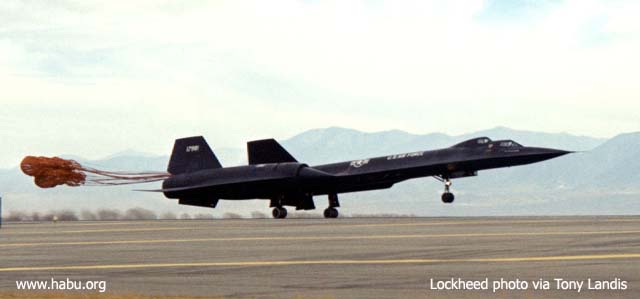
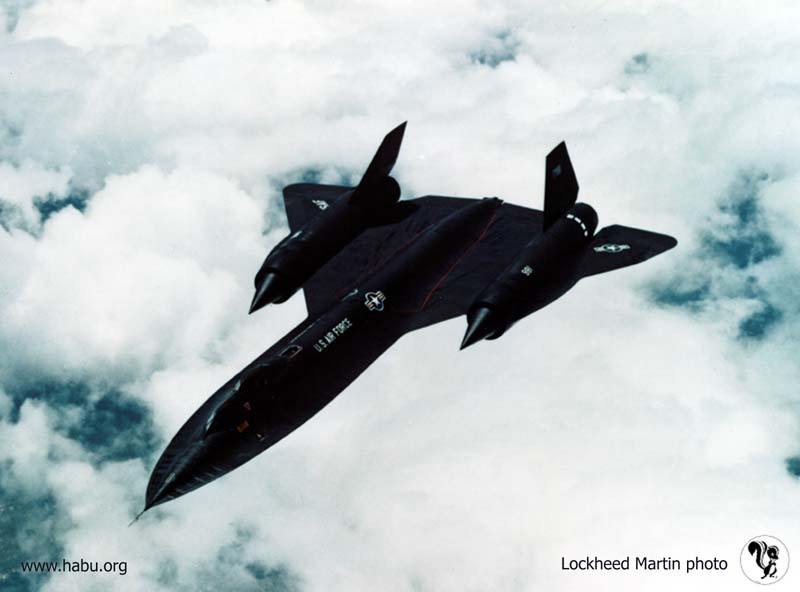
May 1971 photo of 981 taken from the tanker just after refueling. - Lockheed Martin photo
Being a hybrid of 2 separate aircraft caused some unforeseen problems, most noticably with the aircraft's geometry: at supersonic speeds she tended to fly slightly sideways, and required a slight rudder input to fly straight at high Mach numbers (many pilots who flew her say the amount of rudder pressure involved was almost unnoticable).
She saw a fair amount of use early in her career, and was the preferred platform for "VIP" flights. Due to a number of reasons, her use was curtailed after several years. Although she last flew on April 11, 1976, she remained at Beale AFB as a stand-by for 956 and was still there when the fleet was first retired in 1990.

Lockheed photo by Eric Schulzinger via Stephanie Crisanto

981 was added as an afterthought to the famous 11-blackbird group photo arranged by Michael O'Leary and Eric Schulzinger in early February 1990. After the above photo was taken, 981 was towed out and put with the rest of the "presentable" birds, as in the photo below.
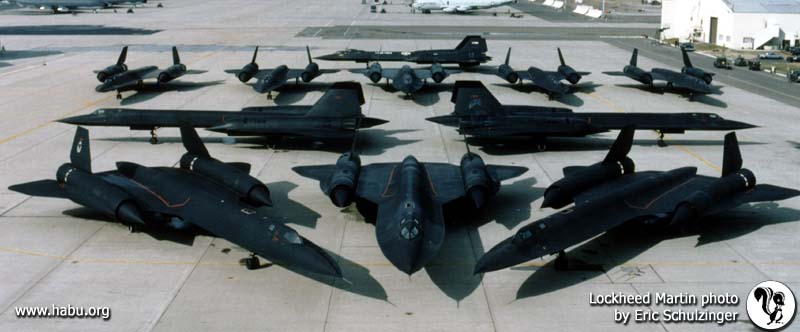
Lockheed photo by Eric Schulzinger

Although all Blackbirds were called "habu," only four had individual nicknames; 981's was "the Bastard." She is now on display at Hill AFB near Ogden, Utah.
Family Album, from habu.org:
61-7950

Both photos on this page were taken at Palmdale prior to 950's first flight -Lockheed photos courtesy of Tony Landis
950 was the first in the last and longest line of blackbirds, the SR-71. Unlike the YF-12 and M/D-21, which were built to perform different missions, the SR-71 followed in the A-12's footsteps as a purely reconnaisance platform. The most noticable differences between the SR-71 and the A-12 were the rear cockpit and extended "tail" of the SR, which extends about 2 feet beyond the elevons and helps to reduce drag.

A very early photo of 950 - note the complete absence of the red "NO STEP" stripe, which has not been added yet.
61-7951
photo courtesy of NASA
Also known for a time as YF-12C #06937, and sometimes confused with A-12 60-6937, the second SR-71, serial number 61-7951, was one of 6 airframes used by the SR-71 Test Force and was never used for operational missions.
951 in flight under NASA colors; notice the red rectangular markings on the upper wing surfaces, the clearly visible anti-collision beacon near the center of the fuselage, and the pilot's white pressure suit - photo courtesy of NASA
In 1971, #17951 was loaned to NASA to complete the testing of the YF-12A program (2 of the 3 YF-12s had already been lost in accidents). 951 was temporarily redesignated as a YF-12C (there being no B-model trainer for the YF-12 series) and given NASA#937. This number was chosen for 2 reasons:
the Air Force didn't want anyone to know that NASA had an honest-to-goodness SR-71 in their possession, and made up the "YF-12C" designation to hide the fact. Since the other 3 YF-12s bore numbers 934, 935, and 936, it made sense that the next aircraft in the series would be numbered 937.
The entire A-12 program was classified until 1982, and since no one would have known there was another 937, there would be no confusion.
photo courtesy of NASA/Dryden

On October 27, 1978, Col. Jim Sullivan and Maj. William Frazier crewed her return flight to the Air Force, where she was put back in their inventory and given back her old number. Frazier and pilot LtCol. Calvin Jewett logged the last of her 796.7 flying hours two months later, on December 22, 1978.

951 undergoing J-58 engine noise tests, apparently at Site 2 in Palmdale. This photo was taken on December 20, 1978, just 2 days prior to 951's last flight. -photo courtesy of NASA

photo by Blake Holliday courtesy of www.aero.com
951 remained in storage at Lockheed's facility in Palmdale, California until 1990, when she was disassembled and trucked to Pima Air & Space Museum, just east of Tucson, Arizona.
61-7952


952 as she appeared on September 1, 1965, showing the white reference cross typical on test aircraft. - Lockheed photo via Tony Landis

952 is shown here during the first-ever inflight refuelling of an SR-71, on April 29, 1965. - Lockheed photo via Tony Landis
952 was lost on Tuesday, January 25, 1966 during a test flight. She had an engine unstart during a turn at speeds above Mach 3.2 and broke apart. Lockheed pilot Bill Weaver was thrown clear and blacked out during the accident but recovered and landed on the ground safely. Tragically, his back-seater, RSO Jim Zwayer, did not survive; when his helmet hit the mach-3 slipstream, his neck broke and he died instantly. While 3 other men lost their lives in the A-12 and M/D-21 programs, Zwayer was the only fatality in any SR-71.
With pieces of the airframe raining on his property, the owner of the Mitchell ranch found Zwayer's body first; he then saw Weaver's parachute and went to help him. Weaver told him that he was part of a 2-man crew, and asked Mitchell if he had seen the other crewman. Mitchell told Weaver that he had found his body, and then flew Weaver to the nearest hospital in the ranch helicopter. Weaver would later recount that in as much pain as he was, he had looked at the airspeed gauge and seen it move beyond the red line indicating Velocity Not to Exceed, and thought to himself, "I've survived a breakup and bailout at Mach 3, only to die in a helicopter crash on the way to the hospital!!" Fortunately that didn't happen, and Weaver made a full recovery.

61-7953

953 was lost on Thursday, December 18, 1969, when she exploded in-flight. Pilot Lt.Col. Joe Rogers and RSO Lt.Col. Gary Heidlebaugh both ejected safely.

61-7954
USAF photo via Peter Merlin
954 was lost on April 11, 1969. During maximum takeoff weight testing, the left main tires blew, which started a fire that swallowed the aircraft (similar to the demise of #950). Pilot Lt.Col. Bill Skliar and RSO Maj. Noel Warner escaped safely. Craig Freeman was there and describes what he saw:
I was setting in Launch truck when we sent the A/C off that morning 38 years ago (April 11, 1969). The tires blew, dropped it down on the wheel and the FOD from the wheel coming apart sent the metal up into the wing.
The Pilot cut the takeoff run and rolled out to the end of the runway. The aircraft started to burn with the Pilot and RSO still inside with canopies down.
A CH-3 Jolly Green came out of nowhere and sat off the left front part of the wing which was burning. From the rotor wash the fire was pushed off toward the back of the aircraft.
The canopies opened and Pilot and RSO jumped out of the aircraft and ran off from the Aircraft. Pilot and RSO were fine. They did not "eject."

AFFTC photo via Peter Merlin and Tony Landis
61-7955
955 flies in full afterburner, showing 9 shock diamonds in the left engine's exhaust and 10 in the right. According to Donn Byrnes, co-author of Blackbird Rising, "If you want to see how good an engine you have, count the shock diamonds --- if you can get 9 or better, you have got yourself one hell of an engine." - Lockheed photo by Bill Flanagan, via John Stone

Like all SR-71s with tail numbers below 958, 955 was never used for any operational missions. The first 6 SR-71As were retained by the Air Force and Lockheed (3 each) as flight test aircraft, where new systems and configurations would be tested before being applied to the rest of the fleet. The next two aircraft produced (956 and 957) were both SR-71B trainers, and were never flown outside of the United States.
An early photo of 955, taken February 29, 1968, with the Outstanding Unit Citation above her tail number. This was prior to ever getting the Skunk logo. She is shown at Edwards Air Force Base, returning from another flight. - Lockheed photo via Tony Landis
Donn Byrnes explains the markings below her cockpit:
"955 was my aircraft as I was the flight test engineer for that machine at Edwards. If you look very closely at those white planform silhouettes, you should see a red capitol letter H inside. The H stands for Hester. That is the name of the particular flight test route we used to simulate a real [as we saw it at the time] operational mission. It had four hot legs and three air refuelings. The mission lasted about 8 hours. There were only two aircraft at Edwards that ever attempted that mission and they were 955 and 954. I guess we tried about 25 times to get those done and the most we succeeded was three or four times. When the aircraft made it through the entire mission and the sensors got the pictures or radar images required, then one of those white silhouettes was painted on the side. It did not happen very often."
955 was used overseas on one occasion. In July 1983, she was flown to RAF Mildenhall to demonstrate the new ASARS (Advanced Synthetic Aperature Radar System) prior to fitting out the rest of the blackbird fleet. To avoid unnecessary attention from the "tail-spotters" who watched every flight from the base and recorded every tail number they saw, 955 was dressed up as 962 prior to flying out there. After the tests were completed and she was returned to Palmdale via Beale AFB, she was given back her old number and finished off the remainder of her flying career there.

955 in a banking turn over Edwards AFB (click on the image above for higher resolution)- USAF photo
Click here for a video of 955 refueling in flight.

955 last flew on Thursday, January 24, 1985. At that time, the Air Force had come to the conclusion that she had been modified so many times that she no longer represented the SR-71s that were being flown out of Beale. The higher-ups figured that it would cost about $5 million to bring her up to the fleet standard. In spite of what you hear about defense spending and budget overruns, the Air Force decided it wasn't worth the cost to modify the airframe, and chose instead to take the next aircraft due in for maintenance at the Palmdale facility and make it the new Skunkworks test bird. This is how 972 came to be graced with Señor Skunk on her tail.
61-7956
(aka NASA 831)

A thin veil of snow covers the B Model as the sun rises behind her on the morning of January 16, 2001 - photo courtesy of Tony Landis
After the blackbirds were retired in 1990, the B-model trainer and two SR-71As (971 and 980) were loaned to NASA for high-speed flight research. When the SR-71 was unretired in 1995, the USAF and NASA shared #956 (aka NASA 831) for training missions. In early July 1999, the US Air Force transferred ownership of all four flyable SR-71s to NASA (click here for a NASA press release).

Lockheed photo courtesy of Leland Haynes

USAF photo
If you've seen a blackbird fly since 1990, chances are it was 956. At last look she had logged more than 3400 flight hours (more than twice the total of 959 and 981 combined). Without a doubt this is the single most often photographed blackbird of all time. She is also unique in that she is the only 2-pilot trainer still flying (957 was lost in an accident in 1968; 981 did not see as much use as 956, and was retired with the majority of the fleet in 1990).

You can find the absolutely best collection of Blackbird photos at the Dryden Flight Research Center Web page and our NASA/Dryden Mirror Page. More than 80 photos at last count, all superior quality and resolution.
all photos courtesy of John Freedman

"These were taken in 1996 when they were doing tests on the left inlet as it kept unstarting, a fault it has had since new apparently.
The crew are NASA chief pilot Ed Schneider and Research engineer Marta Bohn-Meyer. The group shot [above] shows Rogers Smith (then chief pilot, now chief engineer), Ed, Marta, and Marta's husband, test engineer Bob Meyer (the first husband and wife crew of the SR)." - John Freedman



This is probably the most impressive engine start photo I've ever seen - WebMaster

all photos courtesy of John Freedman



The blackbird is no small airplane; it holds its own next to a 747-100

Fans are used to cool the brakes after landing; this also helps the tires last longer.
all photos courtesy of John Freedman

"These are photos of 956 taken during the 1997 Edwards AFB airshow, dedicated to the 50th anniversary of the Sound Barrier Breaking by Chuck Yeager.
"The SR-71 flew 3 times on the anniversary (Oct 14th 1997) and on the Saturday and Sunday before. The start and run are on the Sunday, a subsonic low fly-by, thus the normal nomex suit and HGU helmet on Ed Schneider and Bob Meyer." - John Freedman
all photos courtesy of John Freedman

"These are photos of 956 taken during the 1997 Edwards AFB airshow, dedicated to the 50th anniversary of the Sound Barrier Breaking by Chuck Yeager.
"The SR-71 flew 3 times on the anniversary (Oct 14th 1997) and on the Saturday and Sunday before. The start and run are on the Sunday, a subsonic low fly-by, thus the normal nomex suit and HGU helmet on Ed Schneider and Bob Meyer." - John Freedman
61-7957

957 under construction at Lockheed's plant in Burbank, California. The Lockheed build number (2008) can just be made out on the walkway railing in the upper left corner of the photo. - Lockheed photo via Tony Landis

These photos should once and for all squelch the rumors that the 2 SR-71B models were "converted" from standard A-models. Here are 957 (foreground) and 956 (center) under construction with an A-model (955) in the background. The detail below shows the raised rear cockpits taking shape even before the nacelles are completed. - Lockheed photo via Tony Landis

This photo and the two below are from LtGen William Martin's VIP flight on Friday, October 20, 1967. - Lockheed photos via Tony Landis

Gen. Bruce Holloway's VIP flight (check flight #186) lands at Beale AFB on October 4, 1967. This was the first time a Commander in Chief had been given a ride at Mach 3. - 1st SRS Archive photo, courtesy of Fred Carmody



Lt. Col. Al Hichew and his "student" Col. Bill Hayes pose with crew chief TSgt. Gene Patrick after 957's 100th sortie, Friday, March 17, 1967. - photo courtesy of Bill Gornik


Clyde Shoemaker and Larry Devall pose with 957 after Devall is certified to "solo," on Tuesday, May 9, 1967 - 1st SRS photo via Phil Loignon
957 was lost on Thursday, January 11, 1968. One of only 2 SR-71B trainer models built (the other being #956), she crashed just a few miles from Beale AFB after limping home almost 1000 miles from where she suffered double generator failure over Washington State. Both student pilot (SP) Capt. David Fruehauf and his instructor (IP) Lt. Col. Robert "Gray" Sowers ejected safely.

file photo (Jan 1968) by George Irizary courtesy of the Appeal-Democrat newspaper
Don Person, crew chief of #969, witnessed the accident; he recalls:
".... There were two SR-71's flying that afternoon, 957 and my aircraft 969. An emergency was declared, but we did not know which aircraft had trouble. We were waiting on the taxiway looking north and saw an SR-71 approaching. About 2 miles out it took a pitch up and we then saw two chutes. Aircraft crashed in the dreager ponds where gold was mined. My heart was thumping as you can imagine, when another SR-71 came into view and it was an "A" model, 969. Boy was I glad to see it land...."
A year later, a replacement trainer was built from the aft end of YF-12 #934 and the SR-71 static model, assigned number 981 and designated as an SR-71C.
61-7958
958 in the hangar at Beale AFB. In this photo she sports a unique interpretation of the habu on her tail; also note how the exhaust fairings (sometimes called "turkey feathers") are at maximum aperature. -Lockheed Martin photo
958 was the first "regular" (neither test vehicle nor trainer) blackbird delivered to the Air Force. She left the assembly line on July 22, 1965, and made her first flight with pilot Bill Weaver and RSO George Andre on December 15 of that year (Lockheed Skunk Works, Jay Miller; p. 200).
On Tuesday and Wednesday, July 27 & 28, 1976, 958 bettered 3 speed and altitude records previously held by a YF-12A, #60-6936.
Date Record Crew
28 July 1976 World absolute and class record for speed over a 15/25 km straight course:
2,193.167 mph Capt. Eldon Joersz and Maj. George Morgan
28 July 1976 World absolute and class record for sustained altitude (horizontal flight):
85,069 ft Capt. Robert Helt and Maj. Larry Elliot
27 July 1976 World absolute and class record for speed (1,000 km closed circuit):
2,092.29 mph Capt. Pat Blesdoe and Maj. John Fuller
Source: Lockheed Martin press release, Sept. 1991
Sometime history repeats itself. These 3 crews were to each have set their own record in separate airframes. Just like the YF-12A speed record attempts from 11 years earlier, all but one airframe developed problems just before the records were to be set. According to Pat Bledsoe, 958 was used by all 3 crews to set all 3 records.

958 made her last flight on Friday, February 23, 1990, when she was flown to Robins AFB. Don Watkins and Bob Fowlkes logged the last of her 2288.9 hours.(Lockheed via John Stone)

958 being towed to her final resting place - photo courtesy Jay Miller
photo courtesy of John Stone
She is now on display at Robins AFB in central Georgia, where she has been restored to her original "high-observable" paint scheme, with the addition of the Ichi Ban banner that only 974 ever sported; perhaps as a tribute to the last blackbird to be lost.
61-7959

Lockheed photo taken July 29, 1971, prior to the Big Tail modification - photo courtesy Lockheed Martin
The Blackbird with the most radical "after-market" alteration, #959 ("Big Tail") started her career in 1966 like any other SR-71. In 1975 she was selected as the test platform for a new OBC (optical bar camera), surveillance and ECM (electronic counter-measures) suite located in a nine-foot "boom" attached to the aft end of the fuselage.
Lockheed photo courtesy of Tony Landis
The alterations were tested in November 1975, and proved conclusively that the airframe suffered no appreciable performance loss from the modifications. However, other tests also showed that the new ECMs did not offer any increased protection from missile attack; and in the face of budget cuts, the program to retrofit other blackbirds was cancelled.
Note the length of the boom's shadow, which is almost as long as the sedan in the background -Lockheed photo courtesy of Tony Landis
17960
photo courtesy E.J. van Koningsveld


#960 is on permanent display at Castle Air Museum near Castle Air Force Base, in Atwater, California.


Apparently she and 979 once shared vertical stabilizers; 979's number can be seen on the inside of 960's left tail.

17961



These 3 Lockheed photos, and several more nearly identical to them, were taken during a single flight in the early 1970s. These were used for almost all press releases regarding the SR-71.
961 ended her flying career early. After the Pentagon ordered the destruction of all Blackbird tooling in February 1970, the Air Force had no choice but to cannibalize certain airframes in order to provide parts for the rest of the fleet. She managed to accumulate 1601 hours by the time of her last flight on February 2, 1977.
She is now dramatically displayed between an authentic T-38 and a full-size replica of the Space Shuttle at the Kansas Cosmosphere and Space Center in Hutchinson, Kansas.

photo copyright © Kansas Cosmosphere and Space Center - used by permission
61-7962

1971 Lockheed photo of 962 in flight -- in spite of the caption, this is not the YF-12C. - Lockheed photo courtesy of NASA

962 in the "barn" at Beale AFB, sporting a unique skull & crossbones emblem.
She was carrying the DET-1 symbol when the fleet was retired and she was flown to Palmdale for storage in 1990.
After 11 years in storage at Lockheed's facility in Palmdale, California, 962 has finally found a permanent home at the Imperial War Museum in Duxford, England. She is the only SR-71 on display outside the continental United States. Her arrival makes a fine gift to Duxford in appreciation of Great Britain's putting themselves in harm's way by allowing the Air Force to operate Det-4 out of RAF Mildenhall for so many years.
61-7963
963 takes off from Beale AFB - Lockheed photo via Jim Goodall

Pete Collins and Conny Seagroves in 963, August 1966 - photo courtesy Jenny Seagroves Dunn

Conny Seagroves in 963, August 1966 - photo courtesy Jenny Seagroves Dunn

Pete Collins and Conny Seagroves with 963, August 1966 - photo courtesy Jenny Seagroves Dunn

Pete Collins, MSgt Robert Chatterley, and Conny Seagroves with 963, August 1966 - photo courtesy Jenny Seagroves Dunn
Just like her sister ship 961, 963 was unlucky enough to be cannibalized for parts for other airframes, and so ended her flying career early. She last flew on October 28, 1976, with a total of 1604.4 hours of flight time.
Steven Myatt worked with the blackbirds from 1975-77, and was lucky enough to take the following pictures of 963 at Kadena
photo courtesy of John Weeks

963 is on display at Beale Air Force Base, home of the 9th SRW, near Marysville, California. She sits on a concrete pad shaped and painted like the Mach 3+ patches worn by flight and maintenance crews. The D-21 drone was added to the display in 1997.
61-7964

61-7964
photo courtesy of John Freedman
Until 1998, she had been at the old SAC Museum at Offutt AFB, where Maj. Terry Pappas landed her for the last time, with RSO Mike Finan, on Tuesday, March 20, 1990. She ended her flying career with 3373.1 hours on her. Finan would rejoin the USAF blackbird program when Det-2 was reactivated 5 years later.
image courtesy of the USGS via Terraserver
photos courtesy of John Trionfo
photos courtesy of John Freedman
One of the higher-profile blackbirds, #964 was usually the airframe chosen to do airshows, and prior to 1990 was probably photographed more than any blackbird except the B-model, #956.
61-7965

Lockheed photo courtesy of Tom O'Neill


With 965 in the background, Col. Bill Hayes, TSgt. Gene Patrick and LtCol. Al Hichew wearing some festive attire in observance of St. Patricks Day 1967 (see color photo here) - - 1st SRS photo via Phil Loignon
965 was lost on October 25, 1967. During a night flight, the aircraft's inertial navigation system failed. As a result, her crew was unaware that she had entered a dive. When they realized what had happpened, they were beyond the point of being able to pull up in time. Pilot Maj. Roy St.Martin and RSO Capt. John Carnochan ejected safely. The aircraft crashed near Lovelock, Nevada.

John Carnochan and Roy St. Martin in front of what may or may not be 965 - 1st SRS photo via Phil Loignon
The crash site was discovered on January 9, 1999, by Peter Merlin and Tony Moore. Here is the official report of the accident, courtesy of Peter Merlin:
SR-71 serial number 61-7965, call sign ASPEN 28, departed Beale AFB at 0058Z on 25 October 1967 for a three hour night training flight. Papa Route consisted of a high-altitude, supersonic leg to BUSY PALACE air refueling area near Albuquerque followed by a second climbing acceleration east of Denver and return to Beale on a westbound leg north of Salt Lake City. The flight progressed normally through the air refueling and second acceleration to supersonic cruise. Descent and deceleration from cruise was initiated in the vicinity of Elko, Nevada, approximately two hours and fifteen minutes after takeoff. After completion of checklist item "Throttles - retard and set 6300 to 6100 RPM" in the Mach 2.0 checklist, the pilot observed a warning flag on the bank steering bar of the attitude director indicator (ADI). At this time the pilot also observed that the autopilot had become disconnected. The ADI showed wings level flight and the horizontal situation indicator (HSI) showed straight, non-turning flight. Because of the warning flag on the ADI steering bar, the pilot switched the attitude reference source to the Flight Reference System (FRS). The ADI showed an immediate unusual attitude of undetermined magnitude, and both the warning flag on the stering bar and the OFF flag on the ADI appeared simultaneously. The pilot advised the RSO that he had attitude indicator malfunctions and the RSO confirmed that his astro- inertial/navigation system (ANS) had stopped functioning as a valid reference source. The RSO, on FRS, observed his attitude indicator reflecting a large left wing low, diving turn. Due to the radical attitude displayed in FRS, he stated to the pilot that the FRS was inoperative. However, there were no OFF flags on the RSO's attitude indicator. The RSO switched to ANS and it showed wings level, constant heading. The crew was not aware that the aircraft was making a 180-degree turn towards the east as observed by Oakland Center. The speed had increased to 480 KEAS where the pilot felt that he had stopped the trend of increasing airspeed. The pilot had no outside reference to assist him in the recovery from the unusual attitude because of the darkness. Recovery could not be effected using the standby attitude indicator. The pilot directed the RSO to bailout, passing an estimated 30,000 feet. The pilot remained with the aircraft for an unknown duration, continuing his efforts to recover, but was unsuccessful. He ejected from the aircraft at an unknown altitude and speed. Both crew members had successful ejections. The aircraft struck the ground in a near vertical dive and was totally destroyed upon impact. The crash occurred at 0320Z in an isolated area with no witnesses at or near the scene of the accident. Total flight time was approximately two hours and twenty minutes.
"Today, the crater is gone. Only scattered debris remains to mark the site." - Peter Merlin
61-7966
no photo
966 was lost on the night of Thursday, April 13, 1967. She crashed near Las Vegas, New Mexico (not Nevada) after entering an unrecoverable stall following an in-flight refueling. Both pilot Cpt. Earle Boone and RSO Cpt. Richard "Butch" Sheffield ejected safely.
Flight records for this aircraft are a little unclear; the June 1967 DCMA Summary of Individual Aircraft shows total time on the airframe to be 53.2 hours; however, the March 1967 SR-71 Flying Activity Summary shows the total time to be 63.3 hours at the conclusion of her March 31 flight. Considering that the only flight she made in April 1967 was her final one of 1hr23min, that would make the total time 64.7 hours. Sheffield estimates that 966 had less than 50 hours of flight time on her at the time of the crash, lending creedence to the 53.2 hour figure. Statistics were kept on both flight hours scheduled and flight hours flown; allowing for aborted and cancelled flights, the 53.2 hour mark is more likely.
Robb Magley discovered 966's crash site on Thursday, May 10, 2001. Check out his account on finding the elusive site at http://members.fortunecity.com/aspen29/.
61-7967

photo by Tony Landis, courtesy of NASA/Dryden
967 was one of three Blackbirds that were being flown by the USAF after the "fleet" was reactivated in 1995 (click here or on the photo below for pictures of all the Det-2 crews).
In early July 1999, the US Air Force transferred ownership of all four flyable SR-71s (including 967) to NASA (click here for a NASA press release). 967 was unlucky enough to be the first of the 4 to be given back to the USAF for disposition to museum duty.
Click here for Neville Dawson's photos of 967 being pre-flighted.
967 parked at Dryden, with a few D-21s visible in the background - photo courtesy Tony Landis
November 1999 photo showing 967 and 971 sitting outside of their old Det2 hangars - photo by Tony Landis
More photos are available at NASA's web site and our NASA/Dryden Mirror Page.



The above 3 photos, courtesy of Randy Rangel, were taken at Mildenhall RAF (DET-4) in 1990. According to Randy, 967 was the last blackbird to leave the base when the fleet was deactivated in 1990.

Steve "Griz" Grzebiniak writes:
"I was the pilot of that Blackbird when we attended the Paris Air Show in '89. [Those photos] sure bring back some good memories.
"The tail number of the Paris blackbird was #967. That also happened to be the favorite aircraft for Jim [Greenwood] and I. We flew a lot of successful missions together in that one. Some of the crews had bad luck with old 967, but she was always a great performer for Jim and I.
"There is a bit of an interesting story as to why we are deplaning onto the roof of some sort of baggage-cart tug. The KC-135Q that preceded us from Mildenhall to Paris, which was carrying our support equipment and personnel, landed a bit long and/or hot on the relatively short, wet runway that day. They suspected they had hot brakes and had to run the checklist for that, which required them to taxi into a safe area and allow the brakes to cool for a specified amount of time.

"Jim and I did a bit of an arrival show in the drizzle, then landed and tried to stall as long as we could, waiting with engines running, till our crew chief could chock us. I forgot who eventually came out to throw the chocks in, but there still was no adequate ladder to deplane.

"After a lot of hand-waving and pointing, we got some French airport worker to drive his tug up close enough so we could egress. It put a damper on our planned salute to the French, (as did the dismal weather) so the photo of Jim and I holding the French flag that we flew in from Mildenhall didn't elicit much of an enthusiastic response from the confused on-lookers."


The "Secret Meeting" at the 1989 Paris Air Show. In the back row, second from the left, is Jim Greenwood; next to him in the blue jumpsuit is CMSgt Glenn; third from the right is Robby Butterfield. In the front row, third from the left, is Steve Grzebiniak. - photo courtesy of Jim Greenwood and Steve Grzebiniak
"We never thought we would get a photo of all of us like this," recalls Steve Grzebiniak. "The Soviets were very camera-shy during the whole Paris Air Show week. The press was hounding them and us, especially whenever we would get near each other. This little exchange of hospitality was organized in a very secretive manner so as not to tip off the press. Even the Hughes Aviation people were unaware of what we were requesting the use of their conference room for.
"After drinking a couple rounds of shooters and vodka, one of the Soviets took out a camera and politely asked if he could take a couple of photos of the group. We of course agreed, knowing full and well that the Soviet intelligence community already had full dossiers on all of us, including photos. We also took our share of photos and that is what you are looking at now.
"Some pretty heavy hitters in the photo. The guy on the far right of the photo, in the green flight suit is Roman P. Taskaev, a Ministry of Aviation Test Pilot. Standing next to him in the coat and tie is Victor G. Pugachev, the chief test pilot for the Sukhoi Design Bureau. Sitting at the far left, in the lavender shirt is Yevgeny I. Frolov, a Ministry of Aviation Test pilot. Pugachev and Frolov were both flying the (then new) Su-27. I've forgotten which aircraft Taskaev was flying. The stout guy in the middle of the photo in the khakis was a "Frogfoot" ground attack pilot. He also was the most enthusiastic one when it came to his first introduction to tequilla shooters."
Jim Greenwood adds, "Here you see a couple of Habus, Robby Butterfield, a Honeywell Rep, the Mildenhall Fuels Chief, and a couple of other folks that showed up for a hangar flying session and hooks, tequila and vodka. If I had to guess, I'd say there might be a Frogfoot pilot and navigator, a couple of "unknown Russian test pilots", a Mig 29 test pilot (not the one who parachuted to sfety at the show, he was still under medical care), an Su-27 test pilot, and an Aeroflot navigator. After sharing one each bottle of tequila and vodka "hooks", we traded unopened bottles of tequila and vodka with our respective signatures on them. We're still in search of the vodka bottle with the Russian signatures on them."
967 was one of three Blackbirds that were being flown by the USAF after the "fleet" was reactivated in 1995. These 5 photos, courtesy of John Freedman, were taken at Edwards AFB (DET-2) on August 19, 1998, just prior to the second deactivation of the blackbird's thanks to Clinton's unconstitutional line-item veto. In early July 1999, the US Air Force transferred ownership of all four flyable SR-71s (including 967) to NASA (click here for a NASA press release).





61-7968

Lockheed Martin photo

On April 26, 1971, pilot Lt.Col. Thomas Estes and RSO Lt.Col. Dewain Vick flew #968 15,000 miles in 10 hours 30 minutes non-stop on a gruelling marathon mission to test the endurance of the J58 engines and the blackbird airframe, but mostly to see how many times they could refuel before the liquid nitrogen gave out.

At blackbird speeds and temperatures, oxygen becomes explosive and can spontaneously ignite in the tanks and fuel lines. In order to prevent this, all 6 fuel tanks are purged with pure nitrogen before being filled. The blackbird also carries 260 liters of liquid nitrogen in 3 dewars. This nitrogen expands into its gasous form as it is pumped into the fuel tanks to top them off as fuel is consumed. Without the nitrogen, the empty fuel tanks would cavitate from the increased pressure when returning to lower altitudes to refuel.

Taking off from Beale AFB in California, they flew 2 laps around the continental United States via Missoula, Montana; east to Bismark, ND; southeast to Peoria, IL; east to Columbus, OH; southeast to Cape Hatteras, NC; southwest to Gainsville, FL; south to Tampa, FL; west to San Antonio, TX; northwest to El Paso, TX; west to El Centro, CA; then back to Beale AFB. Once the second lap was complete, they entered the third lap and turned south at Bismark, for Santa Fe, NM; then west to Las Vegas, NV; then finally back to Beale (flight plan via Ron Kloetzli). This 15,000 mile, 10.5 hour flight required five aerial refuellings. After the flight the aircraft was thoroughly examined and found to be none the worse for the experience. The SR-71 remains to this day the only aircraft rated to run in full continuous afterburner. On September 20, 1971, Estes and Vick were awarded the 1972 Harmon International Trophy by President Richard Nixon for their accomplishment. They were also awarded the 1971 Mackay Trophy for the same flight.

L-R Sen. Barry Goldwater (R-Arizona), LtCol. Tom Estes (pilot), President Richard Nixon, and LtCol. Dewain Vick (RSO), at the White House on September 20, 1971 for the presentation of the 1972 Harmon International Trophy. - USAF photo via John Stone
61-7969

969 posing for the cover of the office Beale AFB guidebook - photo copyright © Don Person


The above photo was taken on January 25, 1967. Explains TSgt Don Person, her first crew chief, "It is the first flight at Beale after about 3 months of fuel cell leaks. My SR-71 fellow crew chiefs went as far as to hang a plastic lemon on the pitot tube! Col. Doug Nelson our wing commander flew the first flight. I did not notice a group of maintenance people hanging around outside the launch shelter during engine start. When I disconnected communications to the flight crew and turned around I saw them lined up - what a surprise! They came to attention as 969 taxied out and saluted as 969 turned left and passed in review."

Abe Kardong and Jim Kogler with 969 - 1st SRS photo via Phil Loignon
969 was lost on May 1, 1970. After an in-flight refueling, she was climbing back to operational altitude when she encountered a tremendous thunderstorm that she was unable to avoid. Both engines flamed out and could not be restarted. Maj. William Lawson and RSO Maj. Gil Martinez ejected safely.

Gil Martinez and Willie Lawson with 969 - 1st SRS photo via Phil Loignon
61-7970

Buddy Brown and Dave Jensen with 970 - 1st SRS photo via Phil Loignon

958 and 970 were the two airframes used in the group portrait of the 1st Strategic Reconnaisance Squadron taken on May 27, 1967.

In the front row, from left to right are: Sgt Dave Gallard, Jack Kennon (Ops Officer), Ray Haupt (1RS Commander), Hal Confer (DCO), Bill Hayes (9SRW Commander), Charles Minter (9SRW Vice Commander), John Boynton (99SRS Commander), Harlon Hain (Ops Officer) & MSgt Loignon. The pilots are in the second row, with their RSOs directly behind them, again starting from the left: Storrie/Mallozzi, Sowers/Sheffield, Hichew/Schmittou, Collins/Seagroves, Bill Campbell/Pennington, Halloran/Jarvis, Brown/Jensen, Dale Shelton/Boggess, O'Malley/Payne, Walbrecht/Loignon, Boone/Vick, Bevacqua/Crew, Watkins/Dempster, DeVall/Shoemaker, Spencer/Branham, McCallum/Locke, St. Martin/Carnochan, Bull/McNeer, Powell/Kendrick, Daubs/Roetcisoender, Bobby Campbell/Kraus, Kardong/Coleman, Maier/Casey, Fruehauf/Mathers, and Hudson/Ferrell. - info courtesy of Dr. Coy Cross, Beale AFB 9RW/HO

The same lineup as above, only without Sgt. Gallard and MSgt. Loignon.
USAF photo via James Goodall and Tony Landis - closeup below
970 was lost on June 17, 1970. Just after an in-flight refueling, the SR-71 suddenly pitched up and collided with the KC-135Q tanker. RSO Maj. Mort Jarvis bailed out unharmed, but pilot LtCol. Buddy Brown broke both his legs during the ejection. The KC-135Q managed to make it back to Beale AFB safely in spite of suffering what Brown described as "a severely damaged horizontal stabilizer."
USAF photo via James Goodall and Tony Landis - closeup below
61-7971
photo courtesy E.J. van Koningsveld
She had been on loan to NASA as #832, but was one of 3 Blackbirds reactivated by the Air Force in 1995. In early July 1999, the US Air Force transferred ownership of all four flyable SR-71s to NASA (click here for a NASA press release).

Marta Bohn-Meyer (left) and Steve Ishmael (right) are greeted by Jay Murphy of Lockheed on January 12, 1995, when they delivered 971 to Palmdale to be prepped for re-activation by the Air Force - photo courtesy of Lockheed Martin
As of February 2000, #971 has been moved to the back ramp at Dryden, parked next to 844 (980).
November 1999 photo showing 971 and 967 parked on the ramp outside their old Det2 hangars - photo courtesy of Tony Landis
More photos are available at NASA's web site and our NASA/Dryden Mirror Page.
August 1981 photo of 971 on display at Beale AFB - US Air Force photo by SSgt Bill Thompson

971 has the unique distinction of having gone through more legitimate tail number changes than any other blackbird. She started out in 1966 like every other SR-71 at that time, just plain white numbers on her rudders, and the 3-digit "buzz numbers" on her engine nacelles.

In 1983 the entire flying inventory (except the B-model trainer and 955) was repainted in a more subdued paint scheme, with all external markings, even emergency and warning messages, stenciled in flat red paint. Only the remote canopy jettison hatch, painted bright yellow with the word "RESCUE" stenciled in black, did not get changed to red.


In 1990 the Program was cancelled and most SR-71s went to museums. 971 was lucky enough to be spared this fate along with 5 other airframes. 3 went into flyable storage, and 3 went to NASA for high-speed and high-altitude experiments. She still had her plain red numbers when she arrived, and was given a temporary white NASA "worm" until being redesignated with a new NASA fleet number.

The 3 NASA birds were renumbered by NASA conventions; 956 became 831, 971 became 832, and 980 became 844, and was the work horse of the NASA family. In fact, the only time 971 ever flew with 832 painted on her rudders was when she was flown back to Lockheed's facility at Palmdale, a whopping 15 miles or so from Edwards, to be returned to the USAF inventory after Congress ordered the Program reactivated in 1995.

The NASA markings were removed while the Lockheed folks went over her, making sure she hadn't suffered during the 4 years she had been grounded. She had been so well kept that she needed only minimal work to return to flying status.

She took off on her Functional Check Flight on April 26, 1995, flown by Ed Schneider and Marta Bohn-Meyer, and carried the same red numbers she had in 1991.

Time goes on and things change, including the way the Air Force paints their airplanes. All US Air Force aircraft now carry the last 2 digits of the fiscal year of order in smaller numbers, with the last 3 digits of the serial number in larger numerals. 967 received this and all subsequent markings changes along with 971.

Next came the large 2-letter code identifying from which base the aircraft operates. "BB" represents "Beale Bandit," because even though the SR's operated from Edwards, they were technically a remote detachment, Det-2, from Beale Air Force Base (where the U-2 flies to this day). Above the BB is the shield for the Air Materials Command.

Still not satisfied, the 4-cross emblem of the 9th Strategic Reconnaisance Wing was applied to the top of both rudders. Also, someone realized that the tail number was still not up to new Air Force standards - under the current scheme, 17-971 would refer to an airplane ordered in 1917.
Air Force aircraft have serial numbers consisting of a 2-digit base number indicating the fiscal year the aircraft is ordered - NOT the first year it flew - and a sequence number identifying the aircraft within that fiscal year. Since the SR-71 was ordered by the Strategic Air Command in 1961, all SR-71s have serial numbers from 61-7950 thru 61-7981. Currently the serial numbers of USAF aircraft show the last 2 digits of the fiscal year, followed by the last 3 digits of the sequence number. Previously, only the last digit of the FY was used, followed by the entire sequence number. This is where the leading "1" came from, and why the A-12s, which were ordered in 1960, have tail numbers starting with "0" (60-6924 thru 60-6939). For a detailed explanation of US Military serial numbers, click on this link:
http://home.att.net/~jbaugher/usafserials.html
Nowadays the Cold War is over and planes are a lot more expensive than they used to be, and we don't buy as many as we once did. As a result, 5-digit serial numbers (2-digit fiscal year + 3-digit sequence number) have been standard for a while. Air Force regs now call for the fiscal year in small numbers, followed by the sequence number in larger numbers. The 7 got dropped, and the Beale Bandits were repainted as AF61-967 and AF61-971.
In November 2002, her outer wings and engine nacelles were removed by volunteers from the Evergreen Aviation Museum and taken to their new home in Oregon. The rest of the airframe is due to be delivered to the museum in early May 2003.

17972

photo by Jim Fitzgerald courtesy of Leland Haynes

The above photo was taken at the Farnborough Airshow in 1974, after she set the transatlantic speed record of 1:54:56. For more info on this record-breaking trip, and for 32 other terrific photos of the event, visit Leland Haynes' page.

The late Ben Rich poses in front of 972 at Lockheed's Palmdale facility
photo by Denny Lombard, courtesy Lockheed Martin

After setting a transcontinental record of 1:08:17 with pilot Col. Ed Yeilding and RSO Col. J.T. Vida, #972 was donated to the Smithsonian Institution at this post-flight ceremony at Dulles International Airport on Tuesday, March 6, 1990. She is now being housed in a temporary hangar while the Dulles Annex is being built.
Ed Marshall of the National Air & Space Museum logs the levels on the dehumidifier attached to 972. The humidity is adjusted 2 to 4 times a week to ensure the aircraft is preserved in the best possible condition. Dedication like this from Ed and others like him will allow our grandchildren to marvel at this engineering milestone just like we do today.
17973





SR-71 #17973 and A-12 #06924 are on display together at Blackbird Airpark in Palmdale, California
61-7974


Crew Chief Don Person, shown here just after putting the finishing touches on 974's new tail art (the famous "Ichi Ban" design).
974 was one of the first 3 SR-71s deployed to Kadena AFB in 1968, and had flown the most "habu" missions (operational sorties) of those 3 at the end of their first rotation. She was given this paint scheme to show the people back at Beale just who the #1 blackbird was ("Ichi Ban" meaning number one in the local language). The large 1 with the habu snake wrapped around it would later be used on other airframes as well, but "Ichi Ban" was always associated with 974 only.

Below he shows off the newest "habu" representing an operational sortie. Crews who accumulated 5 habus were considered aces.
photos via Don Person, scans by Dennis Doner
After a crew completed their first operational sortie, it was their crew chief's duty to cut their ties and hang them on the ceremonial staff. Here Don Person performs the ritual on George Bull (above) and Red McNeer (below) on September 8, 1968, after bringing 974 back from their first habu mission. John Stone has published Bill Gornick's memoir on the birth of this tradition; click here to read the full story.
974 was lost on April 21, 1989. After taking off from Kadena AFB, her right engine exploded, taking several hydraulic lines with it and crippling the flight controls. Her crew attempted to abort to a base in the Phillipines, but as RSO Lt.Col. Blair Bozek put it, "we could have made it on one engine with no problem, but with no hydraulics and no flight controls, the aircraft became a derelict and we were forced to eject. Dan [Lt.Col. Dan House] bailed out first; I wanted to make sure I had good ejection position and had everything aligned properly, and ejected about 3 seconds after him." Both pilot and RSO ejected safely. This was the first SR-71 accident in 18 years - the longest accident-free streak of any USAF aircraft ever.
1985 photo from Mildenhall Air Show, courtesy E.J. van Koningsveld
She was the last blackbird to be lost, and was one of best. Ask any habu which one was his favorite aircraft, and you'll hear 974 mentioned almost every time.

17975

975 prepares for a launch from Beale AFB, c. 1980.

975 in a steep takeoff from Kadena AFB, Spring 1972 - original photo by Dwight Koslowski

The "Black Cat Squadron" insignia of the U-2 made its way onto 975's tail at one time - photo via Carol Stayer


photo courtesy of Paul's US Military & AMARC Home Page
975 is on display at the March Field Museum in Riverside, California, where she was flown on Wednesday, February 28, 1990 by Terry Pappas and John Manzi.
Click on the photo above (courtesy of Paul Trainor) to find out why 975 now sports 2 tail numbers...
61-7976
Lockheed photo by Eric Schulzinger
976 was the first SR-71 to be flown on an operational mission; Ed Payne and Jerry O'Malley flew her over Viet Nam on Thursday, March 21, 1968. 22 years later she became the last blackbird to be flown to a museum, when Don Watkins and Bob Fowlkes flew her to the Air Force Museum at Wright-Patterson AFB in Dayton, Ohio, on Wednesday, March 27, 1990.
976 is on permanent display at the Air Force Museum at Wright-Patterson AFB in Ohio, where they also have a YF-12A (60-6935).
According to John Stone, this airframe is the best preserved of all museum pieces for several reasons:
She has been indoors since the day she landed at the museum;
Both cockpits are 100% original and complete (minus the defensive and recce gear that were removed at Beale prior to delivery);
The only things removed from the airframe after arriving at the museum were fuel and fluids; even the engines were left inside the nacelles.
closeup of cheetah art on 976's right rudder
photo courtesy of John Stone
61-7977
Lockheed photo courtesy of Tony Landis

Pat Halloran and Mort Jarvis pose with 977 - 1st SRS photo via Phil Loignon

977 was lost on Thursday, October 10, 1968. Both pilot and RSO escaped harm, but in separate ways. Don Person recalls:
".... I was now reassigned to quality control as an inspector. My task that morning was to observe the launch of 977. [The] aircraft had just taken the active runway and was in take-off roll when we observed the left brake come apart and pieces punctured the inner wing fuel cells. A massive fire started; drag chutes were deployed and immediately burnt up. 977 proceded down the runway, all tires now flat. As 977 was approaching the end of the runway the RSO [Maj. James Kogler] ejected; arrestment cable caught the intake lips as the tires were flat and too low to catch the landing gear trunnions. As all this was happening the launch crew including myself were screaming down the taxiway following the aircraft. We arrived several minutes after it stopped and assisted the pilot [Maj. Abe Kardong] away from the crash area...."

Abe Kardong and Jim Kogler in what may or may not be 977 - USAF photo via Phil Loignon
photo courtesy of Joe Tomasone
977's cockpit has since been recovered and restored, and is now on display at Boeing Field's Museum of Flight in Seattle, Washington, next to 940.
61-7978

978 was one of only four Blackbirds to carry an individual nickname (she was also known as the "Rapid Rabbit" because of the Playboy logo she sported on both rudders throughout most of her career).


The "Rapid Rabbit" refuelling from a KC-135Q tanker -USAF photo via John Stone

978 on the ramp at Udorn AFB, where Sgt. Jim Geddes took this photo after Tom Pugh and Ron Rice made a forced landing on Monday, May 15, 1972, due to double generator failure.
She was lost on Thursday, July 20, 1972, while attempting to land at Kadena AFB during extreme crosswinds. The braking parachute failed to slow the aircraft, forcing pilot Denny Bush to turn the landing attempt into a touch-and-go and try for a second go-round. He released the chute, took off, and attempted another landing.
Normally the braking chute is used for all landings to assist in slowing the aircraft, although under good conditions the brakes can do the job themselves without the assist. Having an extremely long runway (or dry lakebed like at Edwards AFB) for such landings doesn't hurt either.
However, the chute becomes extremely important during high-speed landings -- even with empty fuel tanks, the blackbird still weighs more than 2 fully-loaded dump trucks; she has almost no drag due to her low profile; and because of the high temperature imparted during flight, her brakes lose efficiency and have difficulty stopping her completely when landing at high speeds (which are necessary when landing with high crosswinds).
In other words, she was doomed.
On the second attempt, Bush could not slow the aircraft down in time and she ran off the end of the runway, breaking the main landing gear and damaging more than just the paint on her underside. He and his RSO Jimmy Fagg escaped serious injury, but 978 was a total loss. She was buried under a berm at the end of the runway, which is called "Habu Mountain" or "Habu Hill" depending on who you ask.
The next Blackbird accident would not occur for another 18 years (see #974). Part of the Rapid Rabbit lives on in 975's left rudder.
61-7979
all images on this page courtesy of Steven Myatt
"I was an Airman working in the 9th AMS photo shop from 1975-1977. In the spring of '77 I rode the Habu hauler in to work with my 35mm camera (in its case -- we weren't allowed to photograph the shop areas for security reasons, so I wanted the casual observer to see that the camera was "not open for business"). Anyway, in the morning I went out on the launch truck to take pictures of 979 going out on a mission to Korea. We had loaded 979 with two OOC and one TROC cameras. 979 was fitted with a SLR nose on this day. The plane took off fine but aborted the mission after about 1.5 hours. I was out taking pictures of the aircraft and trying to stay out of the way. All these color photographs came from this launch." - Steven Myatt
all images on this page courtesy of Steven Myatt
"These pictures tell the story of a typical Habu launch: the launch truck follows the blackbird to the end of the runway, systems are checked, the engines are run-up and checked, the chocks are finally removed, the plane takes off." - Steven Myatt
In this photo I was riding in the launch truck (a Dodge step-van) as it was following 979 to the end of the runway. I took a picture from inside the cab as both the van and the blackbird were rolling along at 35mph. Really cool shot. - Steven Myatt
all images on this page courtesy of Steven Myatt
"979 going through final check-out at the end of the runway at Kadena. The interesting thing about this picture is that the engines are being run-up while the brakes are locked. There was a road right behind the end of the runway and the blast from 979 would have been felt by anything on the road (traffic is halted at moments like this). Notice in the picture that the grass behind the aircraft is being flattened and the trees bent over as the engines are spun up (see detail below). The picture was framed to catch the rear of 979 and the dancing folliage." - Steven Myatt

--------------------------------------------------------------------------------
"The years I worked on the blackbird were the best years of my life." - Steven Myatt
This photo of 979 bearing the 9th SRW shield is very similar to one taken by Charles Meyer in February 1981

979 on the departure day following the International Air Tattoo at RAF Fairford in July 1985. According to Martin Lupton, who took this photo, this was during a very impressive and brief display after departure.

979 is on display at the USAF History and Traditions Museum at Lackland Air Force Base near San Antonio, Texas. She was flown there on Tuesday, March 6, 1990 (the same day as 972's record-breaking run) by Steve Grzebiniak and Stanley Gudmundson. 979 retired with 3321.7 hours of flight time - the fourth highest of all blackbirds.

photos courtesy Jarmo Lindberg
October 1991 closeup of 979's tail art, showing where the original black paint is starting
to peek through the high-gloss paint job she was given after landing at Lackland
- photo by John Freedman
61-7980
(NASA844)

Since February 15, 1990, #980 has been flying for NASA doing high-speed research, although now she is known as #844. She had been on loan from the Air Force, but in early July 1999, the US Air Force transferred ownership of all four flyable SR-71s to NASA (click here for a NASA press release).

More photos are available at NASA's web site and our NASA/Dryden Mirror Page.

61-7981
981 was the only SR-71C built. Made from parts of the static test model SR-71 and the aft section of YF-12A #06934, she was built to replace SR-71B #957. She first flew on March 14, 1969.
AFFTC History Office photo by Gene Furnish via Tony Landis

The photo above and below are of MGen. Otis Moore's VIP checkride in 981 on December 10, 1975, just 4 months before 981's final flight. - Lockheed photo by Gene Furnish via Tony Landis

May 1971 photo of 981 taken from the tanker just after refueling. - Lockheed Martin photo
Being a hybrid of 2 separate aircraft caused some unforeseen problems, most noticably with the aircraft's geometry: at supersonic speeds she tended to fly slightly sideways, and required a slight rudder input to fly straight at high Mach numbers (many pilots who flew her say the amount of rudder pressure involved was almost unnoticable).
She saw a fair amount of use early in her career, and was the preferred platform for "VIP" flights. Due to a number of reasons, her use was curtailed after several years. Although she last flew on April 11, 1976, she remained at Beale AFB as a stand-by for 956 and was still there when the fleet was first retired in 1990.
Lockheed photo by Eric Schulzinger via Stephanie Crisanto

981 was added as an afterthought to the famous 11-blackbird group photo arranged by Michael O'Leary and Eric Schulzinger in early February 1990. After the above photo was taken, 981 was towed out and put with the rest of the "presentable" birds, as in the photo below.

Lockheed photo by Eric Schulzinger

Although all Blackbirds were called "habu," only four had individual nicknames; 981's was "the Bastard." She is now on display at Hill AFB near Ogden, Utah.

No comments:
Post a Comment